Metropolitan Stadium – the Twins home from 1961 through 1981
8001 Cedar Avenue Bloomington, Minnesota 55420All the thumbnail pictures on this page can be expanded and viewed one at a time with a detailed description if you click on the photo. Viewing the pictures as a slideshow will not include any detailed descriptions. Enjoy!
Pictures of an abandoned Met Stadium – source Robin Hanson
If you were ever at a Minnesota Twins game at Metropolitan Stadium, these pictures may be hard to take. Place your cursor over the picture to get additional info.
| YEAR | LF | LC | C | RC | RF |
|---|---|---|---|---|---|
| 1961 | 329 | 402 | 412 | 402 | 329 |
| 1962 | 330 | 402 | 412 | 402 | 330 |
| 1965 | 344 | 435 | 430 | 435 | 330 |
| 1968 | 346 | 430 | 425 | 430 | 330 |
| 1975 | 330 | 410 | 430 | 430 | 330 |
| 1977 | 343 | 406 | 402 | 410 | 330 |
Metropolitan Stadium was built on a farm in 1956 for the AAA American Association Minneapolis Millers who at that time were playing at old Nicollet Park. It originally consisted of a curved triple-deck grandstand that ran from first base to third base, but there were only temporary bleachers down the third-base line and only fences in the outfield. Metropolitan Stadium was unique in having been the only triple-deck stadium in the minor leagues, and it was only the second such major league stadium — the first being Yankee Stadium. The owner of the New York Giants (the parent team of the Millers) was quote as saying that the Met “is the finest minor league park in the country, and there are not two in the majors that are better.” Met Stadium was the first ballpark using cantilever construction for the decks, thus eliminating posts that would obstruct views. In 1961, when the Washington Senators moved in and became the Twins, permanent bleachers were added along the left field line, a temporary bleacher was installed in left field and the first and second decks were extended down the right field line. The Vikings replaced the temporary left field bleachers with a double-decked left field pavilion in 1965. At the time, its cantilever design was considered revolutionary, with no poles, or pillars to obstruct any views. The NFL Minnesota Vikings shared the stadium with the Twins until both teams moved into the Metrodome for the 1982 seasons.
Met Stadium facts and figures
Location – Bloomington, a suburb about 15 miles south of downtown Minneapolis near the Minneapolis-St. Paul airport.
Architect – Osborn Engineering, officially Osborn Architects & Engineers, is an architectural and engineering firm noted mostly for designing sports stadiums. More than 100 stadiums have been designed by Osborn, including such famous parks as Fenway Park in Boston, Yankee Stadium in New York, Tiger Stadium in Detroit and numerous minor league, collegiate, and major league sports facilities in all sports.
Cost – $8.5 million
Capacity – 18,200 in 1956, 30,637 in 1961, 40,000 in 1964, 45,919 in 1975
Construction started – Ground was broken on June 20, 1955, but not before a farmer named Paul Gerhardt, who had grown onions, melons and sweet corn on the 50-acre parcel he was selling to the committee lined up his farm machinery as a barricade along what would become the first-base line. He hadn’t been paid. And he didn’t start up and motor off until he received his check for $122,000.
Opened – The first game at the Met was played on April 24, 1956 when the AAA Minneapolis Millers (who called the Met home) took on the Wichita Braves in front of over 18,000 fans in 45 degree temperatures in order to see the new ball park.
Surface – Grass
Twins dugout was on the first base side
First Twins game – April 21, 1961
Last Twins game – September 30, 1981
Demolition – started on January 28, 1985 to make way for the Mall of America. The January 28, 1985 KSTP newcast that has a 2 minute clip clip of the demolition of Met Stadium. Minnesota Sports legends Bill Brown of the Vikings and Bob Allison and Harmon Killebrew from the Twins are some of the witnesses as the iconic sports stadium comes crashing down. You can view the clip on our Twins audio and video page with the Met Stadium clip starting at 25:30 and running thru about 27:30.
Metropolitan Stadium “Firsts”
Ceremonial first pitch – Minnesota Governor Elmer L. Andersen
First regular season game – April 21, 1961 – Washington Senators beat Twins 5-3
Attendance – 24,606
Game time temp – 63 degrees and overcast
Pitcher – Camilo Pascual, Minnesota
Batter – Marty Keough, Washington (single)
First Twins batter – Zoilo Versalles
Hit – Marty Keough, Wahington, 1st inning
First Twins hit – Reno Bertoia (single, third inning)
Run – Marty Keough, Washington in 1st inning
First Twins run – Don Mincher
Single – Marty Keough, Washington
Double – Lenny Green
Triple – Roy Sievers, White Sox, May 1, 1961
Home run – Dale Long, Washington in 1st inning
First Twins home run – Don Mincher in 4th inning
Inside the park home run – Harmon Killebrew, July 4, 1961
Grand slam home run – Mickey Mantle, Yankees, May 2, 1961
Walk – Danny O’Connell, Washington in 3rd inning
Strikeout – Joe McClain, Washington looking in 3rd inning
Stolen base – Jim Landis, White Sox, April 30, 1961
Sac fly – Zoilo Versalles, April 22, 1961
Sacrifice – Joe McClain, Washington
Cycle – Freddie Patek, Kansas City, July 9, 1971
Winning pitcher – Joe McClain, Washington
Twins win – Saturday, April 22, 1961 in 10 innings – Twins 5 – Senators 4
Shutout – Jack Kralick, April 23, 1961
Save – Dave Sisler, Washington
Hit by pitch – Joe McClain (Washington) hit Lenny Green
Wild pitch – Camilo Pascual, May 2, 1961
Balk – Rudy Hernandez, Washington, April 22, 1961
No-hitter – Jack Kralick, August 26, 1962
Metropolitan Stadium “Lasts”
Final regular season game – September 30, 1981-Kansas City Royals beat Twins 5-2
Attendance – 15,900
Game time conditions – 56 degrees, cloudy, drizzle
Pitcher – Larry Gura, Kansas City
Batter – Roy Smalley, pop out to ss
Hit – Gary Ward, single
Run – U.L. Washington, Kansas City
Last Twins run – Pete MacKanin
Single – Gary Ward
Double – U.L. Washington, Kansas City
Triple – George Brett, Kansas City – September 29, 1981
Home run – Clint Hurdle, Kansas City
Last Twins home run – Pete MacKanin
Inside the park home run – Mike Cubbage, August 20, 1980
Grand slam home run – Lenny Randle, Seattle Mariners, April 27, 1981
Walk – Darryl Motley, Kansas City
Strikeout – Gary Ward
Stolen Base – Ron Washington
Sacrifice – Cesar Geronimo, Kansas City, September 28, 1981
Sacrifice fly – Glenn Adams, September 26, 1981
Cycle – Mike Cubbage, July 27, 1978
Winning pitcher – Larry Gura, Kansas City
Twins winning pitcher – Pete Redfern beat Texas Rangers 5-2 on September 27, 1981
Twins win – September 27, 1981 over Texas Rangers 5-2
Save – Dan Quisenberry, Kansas City, September 29, 1981
Hit by pitch – Pete Redfern hit Tom Poquette, Texas Rangers on September 27, 1981
Balk – Al Williams on September 25, 1981
No-hitter – Jack Kralick on August 26, 1962
Final Playoff Game – October 3, 1970 Twins lost game 2 of ALCS to Baltimore Orioles 10-6
There are some wonderful pictures and stories about Met Stadium on some of the links provided below, I hope you take the time to enjoy them. If you have other pictures of the stadiums or other links, please let me know so we can add them to the list. This is some fun reading, enjoy!
On December 20, 1981 the Minnesota Vikings played their final game at the Met and the destruction of the Met started right after the game ended. http://youtu.be/tldpeMGLlK4
Telecast of 1965 World Series Game 7 at the Met can be seen at http://youtu.be/HeKbktNm0Mk (about 2 hours and 33 minutes long so settle in)
Minnesota Hitorical Society Met Stadium photo’s group 1 – http://collections.mnhs.org/visualresources/Results.cfm?Page=1&Digital=Yes&Keywords=metropolitan%20stadium&CFID=10961755&CFTOKEN=39325424
Minnesota Hitorical Society Met Stadium photo’s group 2 – http://collections.mnhs.org/visualresources/Results.cfm?Page=1&Digital=Yes&Keywords=met%20stadium&CFID=10961755&CFTOKEN=39325424
Metropolitan Stadium: Patchwork Glory – http://www.oldmetstadium.com/
SABR – http://bioproj.sabr.org/bioproj.cfm?a=v&v=l&bid=2576&pid=19617
A decade at the Met – http://blog.lib.umn.edu/snackeru/greet/decadeatthemet.pdf
Clem’s Baseball – http://www.andrewclem.com/Baseball/MetropolitanStadium.html
Ballparks of Baseball http://www.ballparksofbaseball.com/past/MetropolitanStadium.htm
MPR: The Beatles play the Met – http://minnesota.publicradio.org/features/2007/12/19_Beatles_1965/index.shtml
Ballparks.com – http://www.ballparks.com/baseball/american/metrop.htm
Twinsbaseball.com – http://minnesota.twins.mlb.com/min/ballpark/min_ballpark_metropolitan_stadium.jsp
Wikipedia – http://en.wikipedia.org/wiki/Metropolitan_Stadium
Baseball-reference.com – http://www.baseball-reference.com/bullpen/Metropolitan_Stadium
Baseball-almanac.com – http://www.baseball-almanac.com/stadium/metropolitan_stadium.shtml
Home runs hit by the Twins at the Met
| Rk | Year | G | HR | PA | AB | R | H | 2B | 3B | RBI | SB | CS | BB | SO | TB | ||||
|---|---|---|---|---|---|---|---|---|---|---|---|---|---|---|---|---|---|---|---|
| 1 | MIN | 1964 | 82 | 115 | 3109 | 2768 | 386 | 702 | 122 | 24 | 370 | 29 | 10 | 276 | 489 | .254 | .323 | .763 | 1217 |
| 2 | MIN | 1963 | 81 | 112 | 3086 | 2723 | 377 | 675 | 108 | 17 | 354 | 18 | 4 | 297 | 391 | .248 | .323 | .747 | 1153 |
| 3 | MIN | 1962 | 82 | 97 | 3122 | 2700 | 417 | 698 | 106 | 13 | 398 | 16 | 4 | 345 | 398 | .259 | .343 | .758 | 1121 |
| 4 | MIN | 1966 | 81 | 94 | 2934 | 2640 | 375 | 694 | 111 | 18 | 344 | 43 | 19 | 245 | 396 | .263 | .326 | .751 | 1123 |
| 5 | MIN | 1961 | 81 | 92 | 3044 | 2660 | 380 | 680 | 105 | 18 | 360 | 23 | 28 | 305 | 390 | .256 | .333 | .745 | 1097 |
| 6 | MIN | 1969 | 81 | 79 | 3042 | 2657 | 414 | 739 | 108 | 23 | 383 | 67 | 25 | 302 | 409 | .278 | .355 | .780 | 1130 |
| 7 | MIN | 1975 | 82 | 75 | 3149 | 2785 | 394 | 783 | 100 | 16 | 367 | 46 | 17 | 286 | 378 | .281 | .350 | .759 | 1140 |
| 8 | MIN | 1967 | 81 | 70 | 2985 | 2643 | 372 | 668 | 102 | 26 | 345 | 31 | 14 | 270 | 453 | .253 | .325 | .716 | 1032 |
| 9 | MIN | 1979 | 81 | 67 | 3121 | 2724 | 415 | 801 | 117 | 32 | 391 | 32 | 24 | 274 | 343 | .294 | .358 | .793 | 1183 |
| 10 | MIN | 1965 | 81 | 67 | 3052 | 2665 | 379 | 680 | 126 | 21 | 348 | 45 | 18 | 296 | 450 | .255 | .331 | .724 | 1049 |
| 11 | MIN | 1970 | 81 | 66 | 3018 | 2692 | 366 | 730 | 116 | 32 | 343 | 26 | 29 | 237 | 406 | .271 | .334 | .746 | 1108 |
| 12 | MIN | 1977 | 80 | 61 | 3115 | 2747 | 469 | 817 | 150 | 32 | 430 | 46 | 32 | 270 | 353 | .297 | .362 | .804 | 1214 |
| 13 | MIN | 1974 | 82 | 60 | 3135 | 2776 | 365 | 782 | 100 | 22 | 349 | 38 | 21 | 280 | 368 | .282 | .349 | .748 | 1106 |
| 14 | MIN | 1971 | 79 | 57 | 2974 | 2654 | 332 | 707 | 93 | 22 | 314 | 36 | 11 | 253 | 402 | .266 | .329 | .711 | 1015 |
| 15 | MIN | 1973 | 81 | 56 | 3083 | 2730 | 357 | 750 | 112 | 29 | 333 | 38 | 19 | 298 | 467 | .275 | .347 | .746 | 1088 |
| 16 | MIN | 1972 | 74 | 52 | 2811 | 2491 | 299 | 647 | 105 | 17 | 279 | 30 | 17 | 254 | 395 | .260 | .330 | .708 | 942 |
| 17 | MIN | 1980 | 80 | 51 | 3048 | 2721 | 392 | 768 | 130 | 25 | 373 | 32 | 22 | 232 | 338 | .282 | .337 | .741 | 1101 |
| 18 | MIN | 1968 | 81 | 50 | 2950 | 2645 | 299 | 660 | 107 | 26 | 281 | 50 | 26 | 228 | 441 | .250 | .314 | .680 | 969 |
| 19 | MIN | 1978 | 81 | 44 | 3090 | 2696 | 322 | 711 | 116 | 29 | 304 | 50 | 26 | 302 | 355 | .264 | .338 | .715 | 1017 |
| 20 | MIN | 1976 | 81 | 34 | 3071 | 2691 | 368 | 747 | 108 | 25 | 343 | 71 | 38 | 291 | 348 | .278 | .349 | .723 | 1007 |
| 21 | MIN | 1981 | 61 | 25 | 2172 | 1978 | 213 | 476 | 70 | 25 | 202 | 21 | 15 | 157 | 271 | .241 | .294 | .634 | 671 |
My first ever trip to see a baseball game at Met Stadium was the 1965 All-Star game and it was incredible. We had just graduated from high school and I had already signed up to join the US Navy in August and a couple of us decided we wanted to see the All-Star game, not even thinking about ticket availability. It turned out we were able to get standing room tickets under the left field bleachers. The AL lost 6-5 but we got to see five home runs including one by Harmon Killebrew. Hall of Famers abounded in that game but that is a whole different story. I ended up attending a number of games at the Met and I can remember some really cold and wet days with small crowds as well as those warm and sunny days when you thought that the stands were coming down as the kids pounded the bats they had gotten on bat day against the steel stands, the noise was deafening.
Metropolitan stadium was demolished in 1985 and the Mall of America now stands where Harmon, Tony, Rod, Kitty, Zoilo, Camilo and many other Twins greats once played.
…………………………………………………………………………………………………………………………………………………………………………………….
Hubert H. Humphrey Metrodome – the Twins home from 1982 through 2009
34 Kirby Puckett Place Minneapolis, Minnesota 55415
To view a fun time-lapse video from 2007 as the Metrodome goes from baseball to football and back to baseball, click here.
To view a video of the Metrodome roof collapse click here.
Metrodome Facts & Figures
Architect – Skidmore, Owings & Merrill
Located on a 20 acre site in downtown Minneapolis.
Construction began on December 20, 1979 bt Barton Malow (Southfield, MI)
Construction cost: $68 million
Financing: A combination of government and private sources – including temporary taxes on hotel, motel and liquor sales; the sale of revenue bonds (backed by the City of Minneapolis); and corporate contributions totaling more than $15 million – made sure the Metrodome’s construction and early operations were on sound financial footing. The Legislature provided that no more than $55 million in revenue bonds be sold for construction, but because non-construction costs were not included in that figure, the cost of the stadium is close to $124 million, including donated land, street and other improvements by the City of Minneapolis, and investments by the Twins and Vikings.
Named after Hubert Horatio Humphrey. Humphrey was a former Minneapolis Mayor, U.S. Senator and Vice President of the United States from 1965-69. The stadium was renamed Mall of America Field at Hubert H. Humphrey Metrodome by the NFL Minnesota Vikings in October of 2009 after the Minnesota Twins vacated the premises
Surface – SporTurf (1982 to 1986), Astroturf (1987 to 2003), FieldTurf (2004 through 2009), Sportexe Momentun Turf (2010), UBU Sports Turf (July/August 2011)
Twins dugout was on the third base side
Bullpens were down the left (Twins) and right (Visitors) field lines
Seating capacity – The arena has 64,000 seats and 98 suites.
Covered by 10 acres of Teflon coated fiberglass panels (106 of them that are 1/16″ thick) that requires 250,000 cubic feet of air pressure per minute to keep the roof inflated. The liner is made of 1/32″ thick woven fiberglass. The roof is supported by 20 electric fans running at 90 horsepower each. It was the only air-supported dome used in baseball.
Height is 195 feet (about 16 stories)
Air conditioning – Although the duct work was in place, the stadium opened without air conditioning and the Metrodome climate was oppressive during the first summer. Air conditioning was installed and was first used in June of 1983.
Additional additions – A retractable curtain displaying the banners from the Twins’ championship years and a plaza added along Kirby Puckett Place prior to the 1996 season.
The right-field wall is 23 feet tall and covered with plastic. Called “the Baggy” and “Hefty Bag” by players, the plastic-coated fence hides 7,600 retractable seats that are used when the stadium is in its football configuration.
The first Twins game was an exhibition game against the Philadelphia Phillies on April 3, 1982.
The first Twins regular season game at the Metrodome was April 6, 1982 versus the Seattle Mariners. The Mariners beat the Twins 11-7.
Ceremonial first pitch – Muriel Humphrey Brown (widow of HHH)
National Anthem singer – Pearl Bailey
Final Twins game – The final Twins game played at the Metrodome was on October 11, 2009, when they lost to the New York Yankees, 4-1, resulting in a 3 games to 0 sweep in the 2009 American League Division Series. The Twins’ appearance in this series gave the Metrodome the distinction of being the first American League stadium to end its major league baseball history with post-season play.
Field dimensions are 343′ down the leftfield line, 385′ to the leftfield power alley, 408′ to dead centerfield, 367′ to the rightfield power alley and 327′ down the line in right. The fence in leftfield and centerfield is 7′ high and the one in rightfield is 23′ high, including 16′ of plastic tarp installed in 1983. Leftfield had a 6′ plexiglas extension from 1983-93 making the wall 13 feet high, but it was removed prior to the ’94 season.
The pitcher’s mound, weighing 23,000 pounds, was powered by an electric motor and could be raised and lowered at the push of a button.
Twins record at the Dome – 1,214 wins and 1,028 losses
Metrodome “First’s”
First regular season game: April 6, 1982 vs. Seattle (Seattle 11, Minnesota 7)
Attendance: 52,279
Game time temperature: 70 inside and 28 outside
Pitcher: Pete Redfern, Minnesota
Batter: Julio Cruz, Seattle (struck out)
First Twins batter: Jim Eisenreich (grounded out)
Hit: Solo home run by Dave Engle, Minnesota, 1st inning
Run: Engle in 1st inning
Single: Jim Maler, Seattle, 3rd inning
Double: Manny Castillo, Seattle, 3rd inning
Triple: Gary Gaetti, Minnesota, 2nd inning
Home run: Dave Engle in 1st inning
Inside the park home run: Tom Brunansky, May 28, 1982
Grand slam: Gary Ward, May 10, 1982, off Boston’s Mike Torrez
Walk: Manny Castillo in 5th inning
Strikeout: Julio Cruz in 1st inning
Stolen base: Julio Cruz in 5th inning
Sac fly: Bruce Bochte
Sacrifice: Rick Burleson, April 10, 1982
Hit for the cycle: Kirby Puckett, August 1, 1986
Winning pitcher: Floyd Bannister, Seattle
First Twins win: Wednesday, April 7, 1982 (Minnesota 7, Seattle 5)
Shutout: Larry Sorensen, May 25, 1982
Save: Mike Stanton
Hit by pitch: Roger Erickson hit Julio Cruz, May 7, 1982
Wild pitch: Pete Redfern
Balk: Doug Corbett, April 14, 1982
No hitter: Scott Erickson, April 27, 1994
Metrodome “Last’s”
Final regular season game: October 6, 2009 vs. Detroit Tigers (6-5 win vs. Detroit – 12 innings in game #163)
Last regular season game attendance: 54,088
Game time temperature: 68 inside and 43 outside
Pitcher: Fernando Rodney, Detroit
Batter: Alexi Casilla (walk-off single)
Twins batter: Alexi Casilla (walk-off single)
Hit: Single by Alexi Casilla, 12th inning
Run: Carlos Gomez, 12th inning
Single: Alexi Casilla, 12th inning
Double: Brandon Inge, Detroit, 10th inning
Triple: Alberto Callaso, Kansas City, October 4
Home run: Magglio Ordonez, Detroit, 8th inning
Inside the park home run: Joe Mauer, July 21, 2007
Grand slam: Delmon Young, October 2 off Lenny DiNardo
Walk: Delmon Young, 12th inning
Strikeout: Gerald Laird, Detroit, 12th inning
Stolen base: Carlos Gomez, October 4
Sacrifice: Denard Span
Sac fly: Matt Tolbert, October 2, 2009
Hit for cycle: Michael Cuddyer, May 22, 2009
Winning pitcher: Bobby Keppel
Twins win: October 6 in game 163 (Minnesota 6, Detroit 5)
Save – Joe Nathan, October 3, 2009
Hit by pitch: Jesse Crain hit Aubrey Huff
Balk: Jesse Crain, May 13, 2009
No hitter: Eric Milton, September 11, 2009
Final regular season scheduled game: October 4, 2009 vs. Kansas City Royals – a 13-4 win
Final playoff game: October 11, 2009 vs. New York Yankees (4-1 loss and ALDS series loss to Yankees 3 games to zip)
There are some wonderful pictures and stories about the HHH Metrodome on some of the links provided below, I hope you take the time to enjoy them. If you have other pictures of the stadiums or other links, please let me know so we can add them to the list. This is some fun reading, enjoy!
Harvey Mackay 2.4 million ticket buyout in 1984 – http://books.google.com/books?id=84Q1n2QTlgwC&pg=PA5&lpg=PA5&dq=twins+2.4+in+1984&source=bl&ots=QXhtPFNDgi&sig=_nP0aUgwCJLKN9HkA6FI0cCjfTY&hl=en&sa=X&ei=WzglUafCCoXLrQGnsYGACw&ved=0CFoQ6AEwBw#v=onepage&q=twins%202.4%20in%201984&f=false
Fact or Fallacy? metrodome-air-flow
The Metrodome – by Scott Miller of cbssports.com – http://www.cbssports.com/mlb/story/12148420 (You want to read this article for sure)
The Metrodome and its legal issues – http://hennepin.timberlakepublishing.com/article.asp?article=1130&paper=1&cat=147
SABR – http://bioproj.sabr.org/bioproj.cfm?a=v&v=l&bid=2575&pid=19618
Minnesota Spots Facilities Comm. – http://www.msfc.com/about.cfm
Twinsbaseball.com – http://minnesota.twins.mlb.com/min/ballpark/min_ballpark_history.jsp
Clem’s baseball – http://www.andrewclem.com/Baseball/Metrodome.html
Ballpark’s of Baseball – http://www.ballparksofbaseball.com/past/Metrodome.htm
Ballparks.com – http://www.ballparks.com/baseball/american/metrod.htm
Wikipedia.com – http://en.wikipedia.org/wiki/Hubert_H._Humphrey_Metrodome
Coffeyville Whirlwind.com http://coffeyvillewhirlwind.wordpress.com/2005/11/19/hhh-metrodome-a-ballpark-review/
ESPN.com – http://espn.go.com/page2/s/ballparks/metrodome.html
Baseballroadtrip.net – http://www.baseballroadtrip.net/Major/American/Minnesota/Minnesota.html
SI.com – http://sportsillustrated.cnn.com/2006/baseball/mlb/09/11/fvi.twins/index.html
Columbia.edu – http://www.columbia.edu/cu/gsapp/BT/DOMES/METRODM/metrodm.html
Usatoday.com – http://www.usatoday.com/sports/college/baseball/2008-03-27-Metrodome_N.htm
Cooloftheevening.com – http://www.cooloftheevening.com/metrodome.htm
Stadium Hotel Network – http://humphrymetrodome.stadiumhotelnetwork.com/information.html
Findballparks.com – http://www.findballparks.com/ballparks/minnesota_twins/
MN Legislative Resources Library – http://www.leg.state.mn.us/lrl/issues/issues.aspx?issue=Baseball
Baseball-reference.com – http://www.baseball-reference.com/bullpen/Metrodome
SI Vault – http://sportsillustrated.cnn.com/vault/article/magazine/MAG1125435/1/index.htm
After the Twins left the Metrodome after the 2009 baseball season, the Mall of America Field as it is now known, fell on some tough times.
Video of Metrodome roof collapse
…………………………………………………………………………………………………………………………………………………………………………………………..
Target Field – the Twins current home since 2010
1 Twins Way Minneapolis, Minnesota 55403Twins ticket offices – 290 7th Street North Twins Executive offices – 353 5th Street North
Click on the MBA logo above to see video’s about the building of Target Field
Time lapse video of Target Field being built
Click here to watch Minnie and Paul celebrate a Twins home run
Target Field facts and figures
Architect – Populous (previosly known as HOK Sports). The firm is responsible for for other stadiums like Oriole Park at Camden Yards in Baltimore, NC Park in Pittsburgh, and AT&T Park in San Francisco.
Construction Manager – Mortenson Construction
Construction time – 28 months (August 2007 – December 2009)
Official Owner – Minnesota Ballpark Authority
Cost – Current estimate is about $390 million but infrastructure and financing costs bring the total to about $522 million. Under the 2006 legislation, the public contribution is $350 million, $90 million for infrastructure, and $260 million for ballpark construction. The Minnesota Twins contribution is $130 million for ballpark construction costs plus any ballpark cost overruns. Since the legislation was adopted, the team has also committed to contributing an additional $15 million for non-land infrastructure expenses and $22.4 million for construction costs. The Twins report the cost as $440 million. To see the MBA project budget you can go here.
Naming rights – According to Bloomberg Business Week, Minnesota based Target Corporation purchased the naming rights for 25 years at a reported $125 million (link) and will expire in 2033.
Some of the materials used – 55,000 cubic yards of concrete, 4,600 tons of structural steel, 5,000 tons of rebar, 51 miles of piles, and 100,000 square feet, or 100 semi-truck loads, of limestone
Ballpark size – just over 1,000,000 square feet (10.5 acres) built on an 8-acre site
Surface – Natural grass provided by Graff’s Turf Farm near Fort Morgan, Colorado. The specially-grown sod is a blend of Kentucky Bluegrass seed, chosen for its dark green color, ability to withstand wear, and tolerance to Minnesota’s harsh winters and warm summers.
Scoreboard – is high definition 5,757 square foot – third-largest in all of baseball when installed.
Technology – The field has the current MLB Umpire Evaluation tool called ZE. The ZE system, which uses multiple camera angles to generate dozens of images per second, has been in place since the start of the 2009 regular season. ZE is a monitoring and training tool for strike zones that is in place in all 30 Major League ballparks. There are cameras on both lines and another camera that is centered adjacent to the field. After each umpire has a plate assignment, ZE generates a disk that provides an evaluation of accuracy and illustrates any inconsistencies with the strike zone. The system operated successfully in 99.8% of MLB’s 2,430 games in 2009. (ZE replaced QuesTec, which was used from 2001-2008 and was in 11 of the 30 parks – 11 being the highest number it ever reached – in its final season in 2008.)
Green Certification – The U.S. Green Building Council awarded Target Field LEED Silver Certification on April 8, 2010, only the second MLB ballpark to attain such a lofty standard. Nationals Park in Washington D.C. was certifed in 2009.
Capacity – 39,504 (2010-2012), 39,021-current)
Suites – 95
Twins dugout is on the first base side
Bullpens – located in left center field.
Field Dimensions – are 339′ to Left; 377′ to LF Power Alley; 404′ to Center; 367′ to RF Power Alley; and 328′ to Right. The outfield walls are 8′ from the left field foul pole to right center field and 23′ from right center field to right field foul pole.
Target Plaza, the main entrance, features statues of Kirby Puckett, Rod Carew and Harmon Killebrew, plus a 1,500-pound “Golden Glove,” which will include a plaque honoring every Twins Gold Glove winner. During the national anthem when they sing “and the rockets red glare”, they really do at Target Field, look for them. After each Twins home run, the team’s original “Shaking Hands” logo, with characters Minnie and Paul, will light up in center field. Other features include “The Knotholes” on Fifth Street, which will allow fans to watch the game without purchasing a ticket. The stadium also affords views of the downtown skyline.
Bronze Statues – When Target Field opened, the original bronze statues (in addition to the Gold Glove) were of Harmon Killebrew, Kirby Puckett, Rod Carew. A statue of former owner Calvin Griffith was added on September 3, 2010. Owner Carl Pohlad and his wife Eloise Pohlad were added on October 3, 2010. A statue of Tony Oliva was added on April 8, 2011. A statue of Kent Hrbek was added on April 14, 2012.
Special Notes – In 2010, Target Field was ranked #1 for “Best Stadium Experience” by ESPN.
Target Field was named “The Sports Facility of the Year” by Street & Smith’s Sports Business Journal and Sports Business Daily at the 2011 Sports Business Awards Ceremony in New York City.
Changes to Target Field –
March 2017 – The Twins became the fifth Major League team to install LED lighting at their ballpark, as the power management company Eaton completed its installation of Ephesus LED lights on Monday. The Twins have made it a point to keep Target Field as energy-efficient as possible, and these lights reduce energy use by up to 75 percent while also reducing costs compared to traditional lighting. It also lights the field more evenly, leading to a better view for fans at the ballpark and fans watching on television.
In October 2012 the Minnesota Ballpark Authority green-lit plans to tear down the existing right-field bleacher section, and replace it with a “destination” along the lines of left field’s Budweiser Roof Deck. The redesign includes seven rows of drink-rail seating, tall stools, 200 seats under a heated canopy, and standing room. To make space for the new changes, the team is cutting 400 bleacher seats, which it will donate to kids’ baseball fields in St. Paul. Right field seats do have a few poor sight lines, and the area can get crowded. But the real motivation behind the revamp is the popularity of the Budweiser deck, which is one of Target Field’s few group spaces. The Twins won’t say what the construction will cost, but unlike much of the $545 million stadium ($350 million of which came from public funding), the team is paying for the project. These changes dropped capacity from 39,504 to 39,021.
On February 28, 2011 – The Minnesota Twins announced today that the 14 black spruce trees, which formerly comprised the batter’s eye area at Target Field, have been relocated. The 14 trees, which were removed from Target Field last week, were transported to Bergen’s Greenhouse in Forest Lake, Minn. where they will be cared for by trained arborists.
On November 10, 2010, the Twins announced a number of upgrades to Target Field, all of which were completed in time for the 2011 season. Highlights among the upgrades include a scoreboard in right-center field (28 feet high and 50 feet wide) and the “Twins Tower” (a 100-foot (30 m) tall illuminated tower), next to the new scoreboard. Other changes include free wireless service for fans, expanded concession stand menus, and the addition of more radiant heaters and artwork around the ballpark. In total, the changes were expected to cost the Twins $4–6 million.
In July 2010 the hitters backdrop was painted a darker color due to player complaints.
Target Field “First’s”
First Regular season Game – April 12, 2010
Ceremonial first pitch – Mike Opat (County Commissioner), Jerry Bell – Twins Execuutive (led Twins efforts to get a new stadium), Dave Mansell – Construction Superintendent
Batter – Marco Scutaro, BOS
Pitch – Ball to Marco Scutaro, BOS from Carl Pavano, MIN
Hit – Marco Scutaro, BOS off Carl Pavano (1st inn.)
First Twins hit – single by Orlando Hudson (1st inn.)
Run – Denard Span, MIN (1st inn.)
Single – Marco Scutaro, BOS – Carl Pavano (1st inn.) – then thrown out trying to steal 2B
Double – Dustin Pedroia, BOS – off Carl Pavano (1st inn.)
First Twins Double – Joe Mauer
Triple – David DeJesus, KCR April 16
First Twins triple – Justin Morneau, April 17
Home Run – Jason Kubel, – off Scott Atchison (7th inn.)
Inside-the-park home run – Curtis Granderson, NY Yankees on August 21, 2011
First Twins Inside-the-park home run – Eduardo Nunez on June 2, 2016
First two homer game – Jason Kubel, hit 2 home runs on May 27 against the Yankees
Grand Slam – Matt Joyce, Tampa Bay – July 3
First Twins Grand Slam home run – Rene Tosoni on September 27, 2011
RBI – Michael Cuddyer, MIN – (1st inn.)
Walk – Denard Span, MIN off Jon Lester (1st inn.)
Strikeout – Batter: David Ortiz, BOS; pitcher: Carl Pavano, MIN – (2nd inn.)
First Twin to strikeout – Orlando Hudson by Jon Lester (2nd Inn.)
Stolen Base – Nick Punto, MIN – vs. Boston (2nd inn.) off Jon Lester and Victor Martinez (Punto broke his belt on the play)
Error – Victor Martinez, Bos – April 15
First Twins error – Jason Kubel, May 3 – throwing error
First Reviewed HR – April 12 vs. BOS – 5th inning, Mike Cameron foul ball stood as called
Winning Pitcher – Carl Pavano, MIN – April 12 vs. BOS (6.0-4-1-1-1-4)
Losing Pitcher – Jon Lester, BOS – April 12 vs. MIN (5.0-9-4-4-3-5)
Save – Jon Rauch, MIN – April 12 vs. BOS (1.0-0-0-0-0)
First wild pitch – Kevin Slowey – April 14
First Balk – Mitch Talbot, CLeveland Indians – April 22
Minnesota Twins Win – April 12 vs. Boston by a score of 5-2 in first regular season game at Target Field
First Concert – July 8, 2012 – Kenny Chesney and Tim McGraw in the Brothers of the Sun Tour 2012. The attendance was a Target Field record 42,524.

Target Field water sustainability – http://tinyurl.com/cvplvjc Stadiumpage.com – http://www.stadiumpage.com/ – great pictures of Target Field plus much more, check it out Bergerson Aerial Photography of Target Field – http://www.bergphoto.com/tfopening/index.html – A must see! How to get to Target Field – http://minnesota.twins.mlb.com/min/ballpark/transportation/index.jsp Ballparksofbaseball.com – http://www.ballparksofbaseball.com/al/TargetField.htm SI.com Target Field construction photo’s – http://tinyurl.com/lz8s35 Ballparkdigest.com – http://tinyurl.com/cbmpp4k Wikipedia – http://tinyurl.com/yl965m7 Various Target Field pictures – http://tinyurl.com/cootkoz
…………………………………………………………………………………………………………………………………………………………………….
Hammond Stadium – The Twins Spring training home since 1991
14100 Six Miles Cypress Parkway Fort Myers, Florida 33912
For a GREAT panoramic view of Hammond Stadium please click here. It may take a minute or two to load due to its size. This was taken prior to the big remodel that started in 2013.
Hammond Stadium, the center piece of the 80 acre Lee County Sport Complex may be best known as the spring home of the Minnesota Twins but it’s a facility that’s designed for the entire organization, with five full fields and two half fields, as well as a stadium that also serves as the home of the Ft. Myers Miracle (Class A; Florida State League) and the Gulf Coast League Twins. It’s an interesting stadium in that it features an outside facade that’s supposed to invoke the feeling of Churchill Downs. There are only two levels of seats for spring training: box and reserved bleachers. Jimmy Buffett and Bill Murray are part owners of the Ft. Myers Miracle, which was known as the Miami Miracle prior to relocating to Fort Myers in 1992.The complex has evolved over the years and has had new lights, a weight room, a grass berm, and some dugout seats added. This was all done between 2006 and 2009.
The Twins’ lease for Hammond Stadium runs through 2020, and in recent years the county has sought to make some improvements to the ballpark, including the expansion of a berm area in right field. The lease also calls for the facility to be maintained at the same level as the five newest Florida spring-training facilities.
Architect – Lescher and Mahoney
Cost – $14 million
Opened – March 7, 1991
Surface – Natural Grass, Tifway 419 Bermuda
Capacity – About 8,100
Named in honor of Bill Hammond, the county commissioner who was instrumental in getting the Lee County Sports Complex built.
Twins dugout is on the third base side
Lease – The MInnesota Twins have a lease to train there through 2020.
Spring Training History – The 2010 Twins are in their 50th spring season and their 20th spring at the Lee County Sports Complex in Ft. Myers, FL Prior to training at the Lee County Sports Complex, the Twins trained in Orlando, FL, from 1936 (with the exception of the war years of 1943, ‘44 and ‘45, when they conditioned in College Park, MD) to 1990, and their minor league clubs moved to Terry Park in Ft. Myers in 1990, after headquartering in Melbourne, FL from 1964-89.
RECENT NEWS ABOUT HAMMOND STADIUM –
http://www.floridagrapefruitleague.com/vendorimages/flsportsgfl/Lee%20County%20to%20Improve%20Hammond%20Stadium.pdf (November 2011)
Springtrainingonline.com – http://www.springtrainingonline.com/teams/minnesota-twins.htm Baseballpilgrimages.com – http://www.baseballpilgrimages.com/spring/leecounty.html Ballparkreviews.com – http://www.ballparkreviews.com/fmyers/hammond.htm Wikipedia.com – http://en.wikipedia.org/wiki/Hammond_Stadium

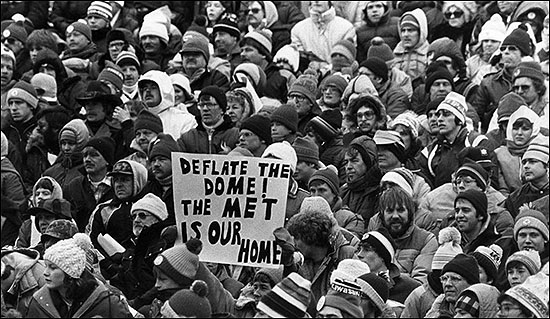
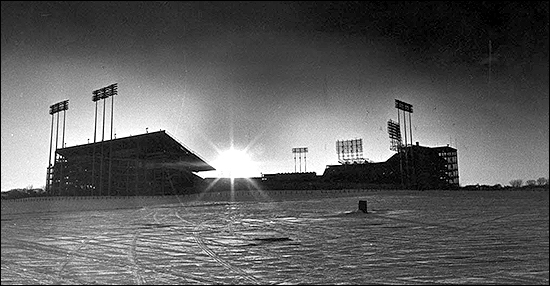
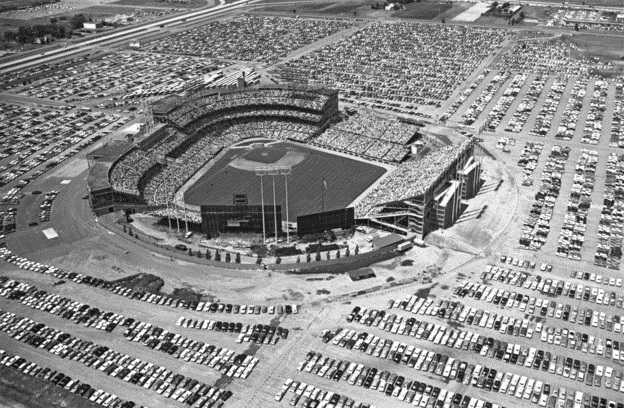
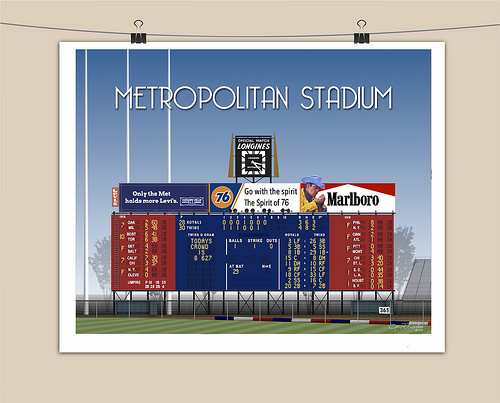
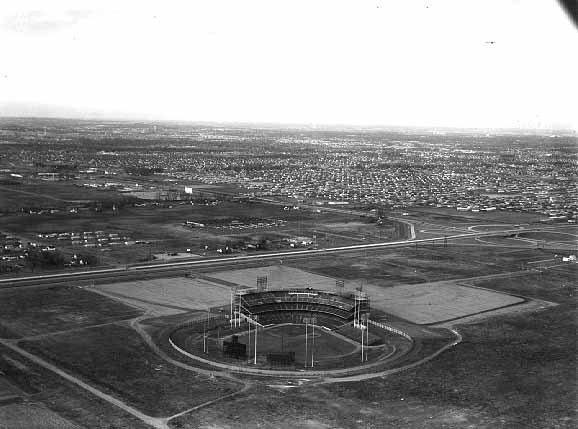
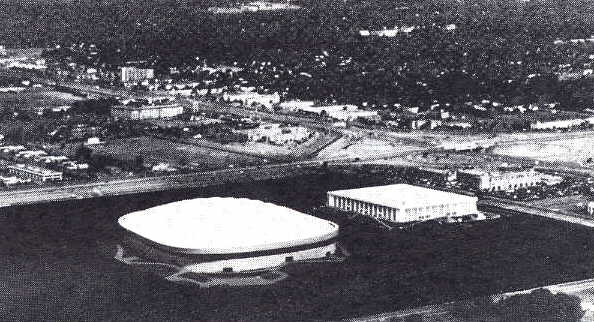
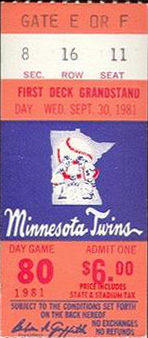
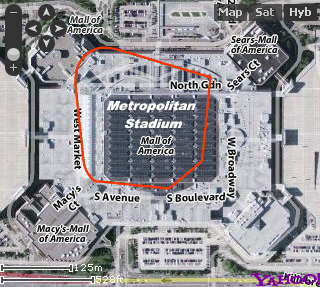
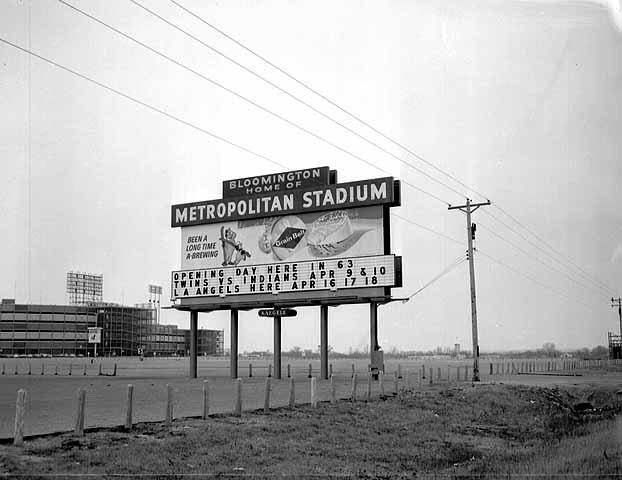
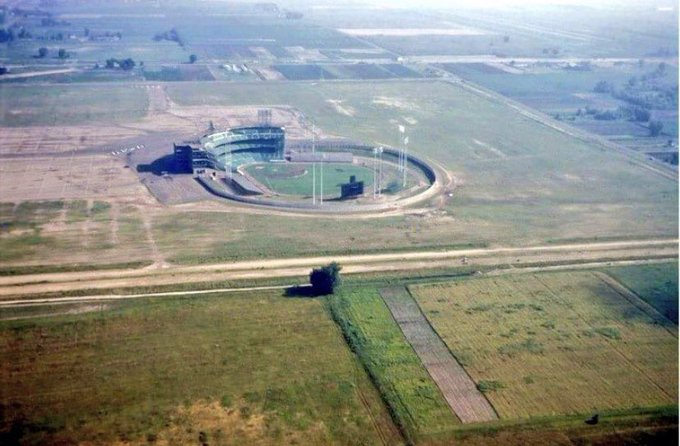
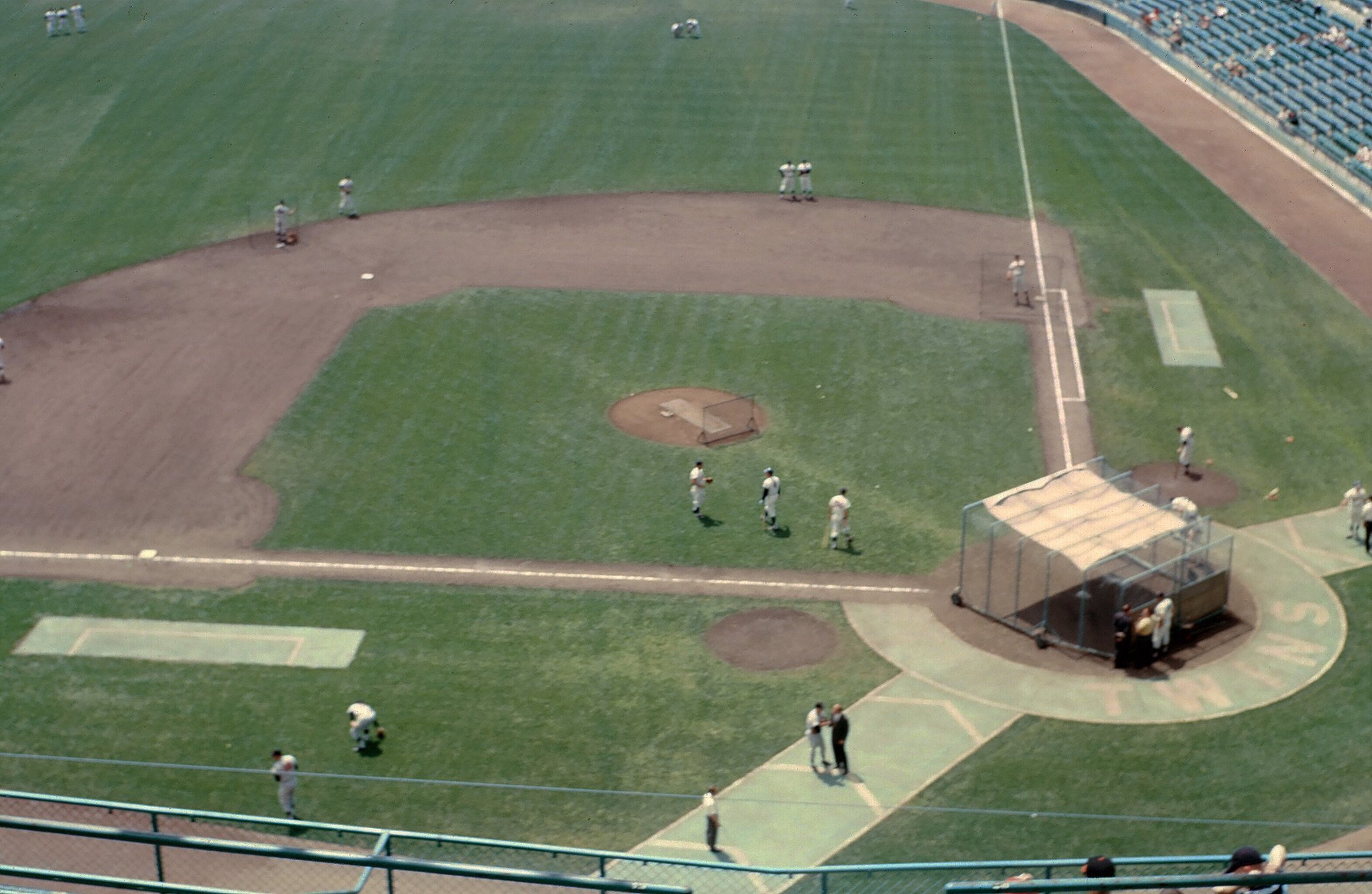
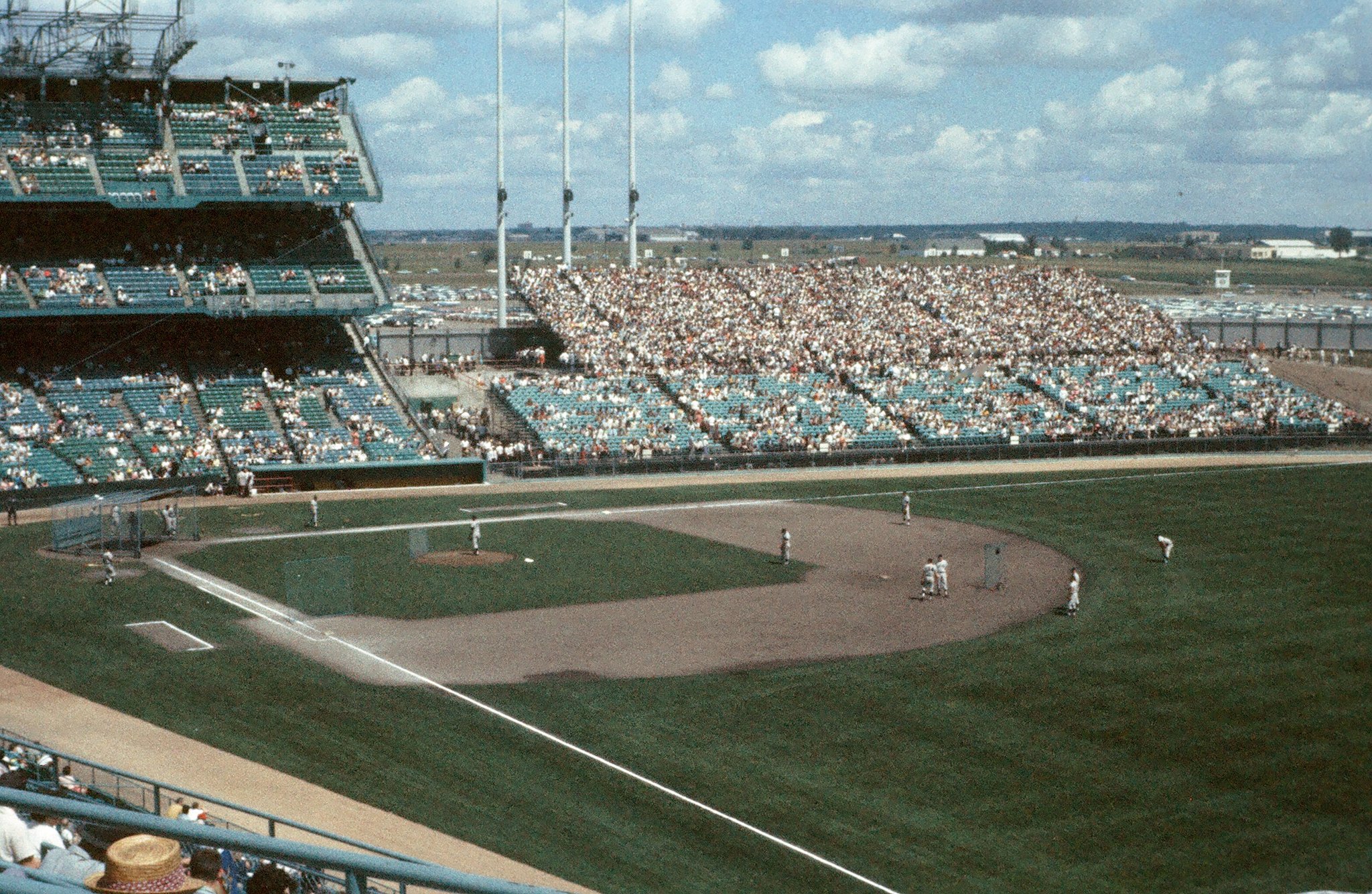
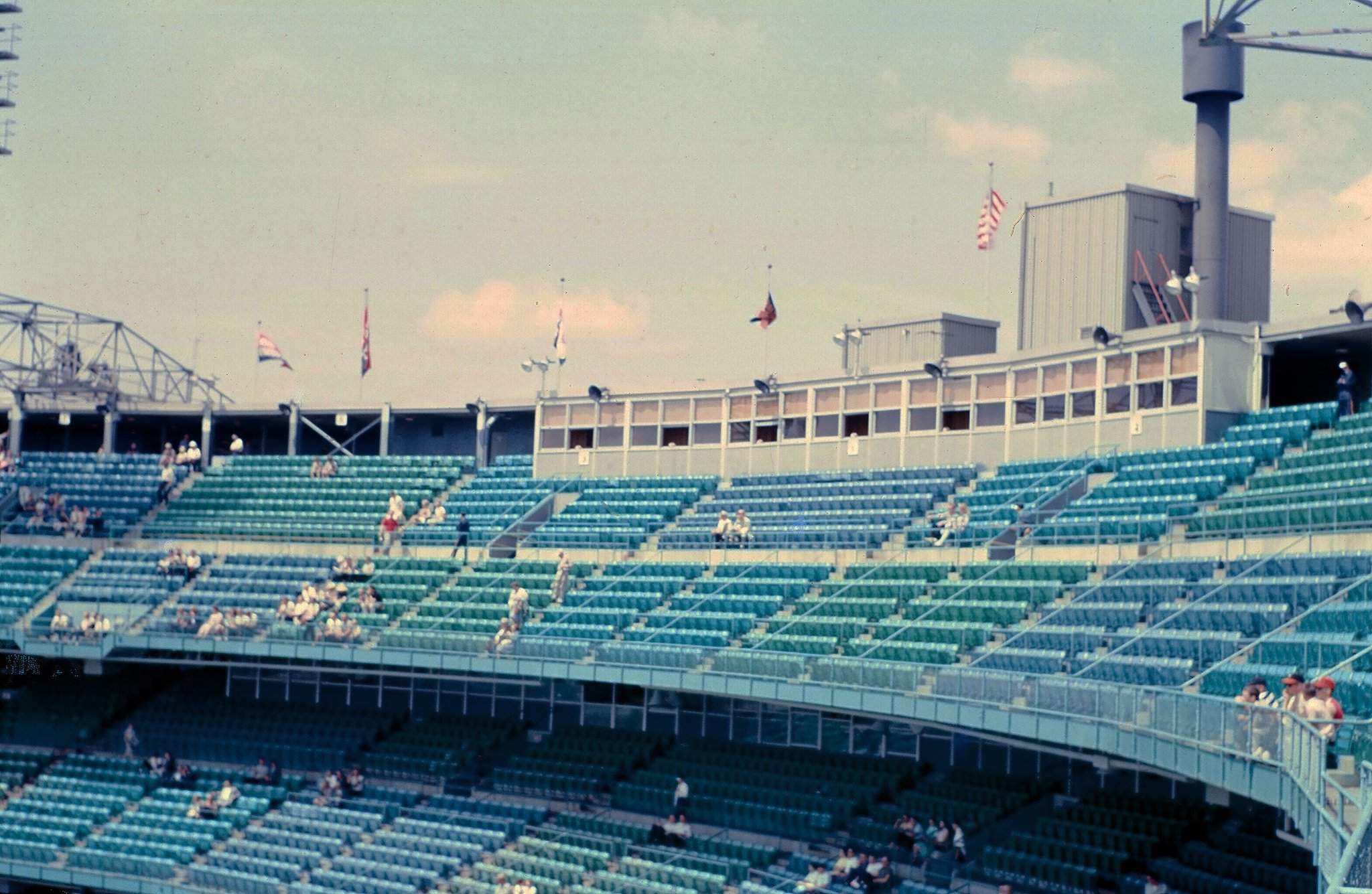
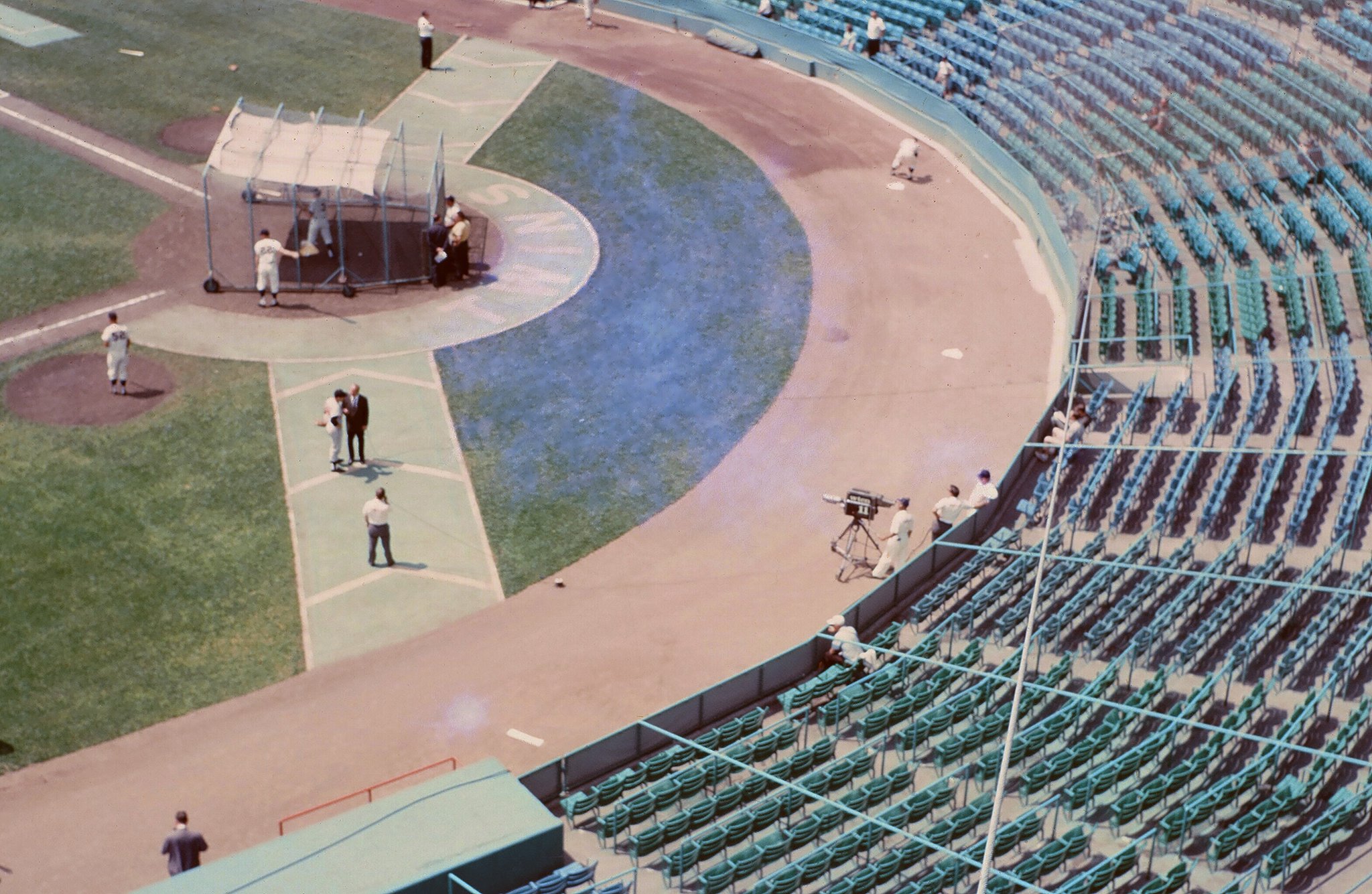
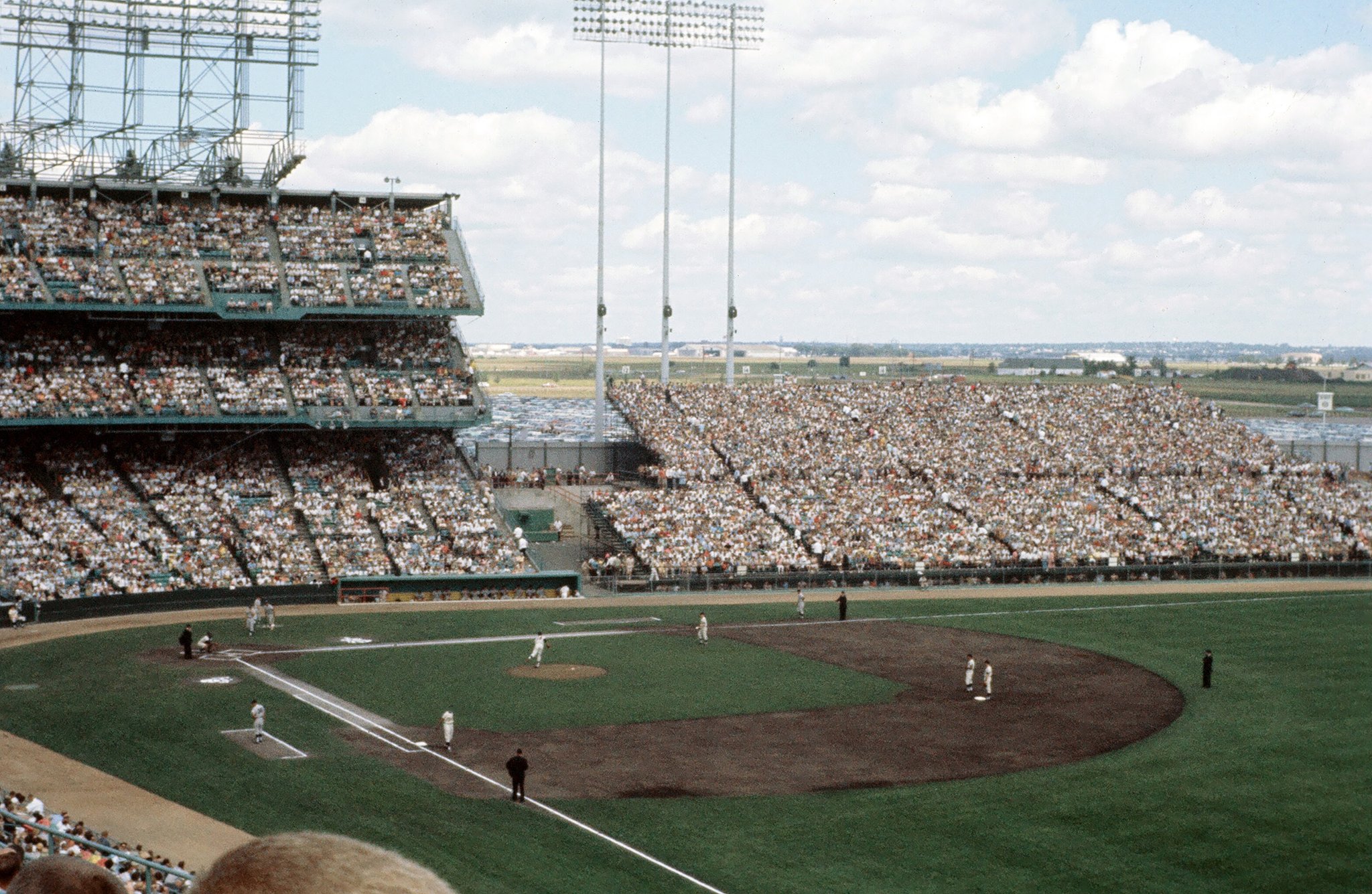
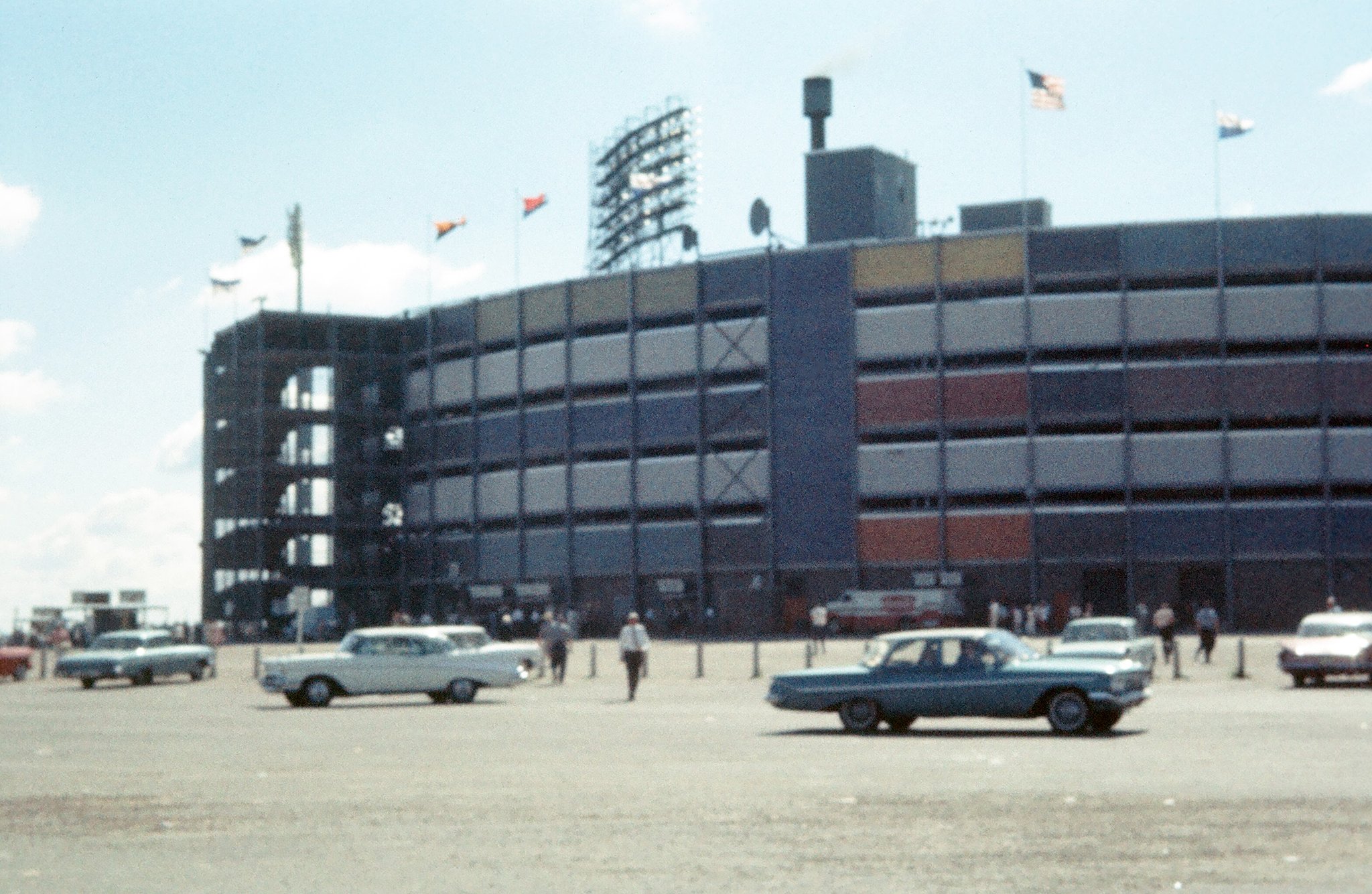
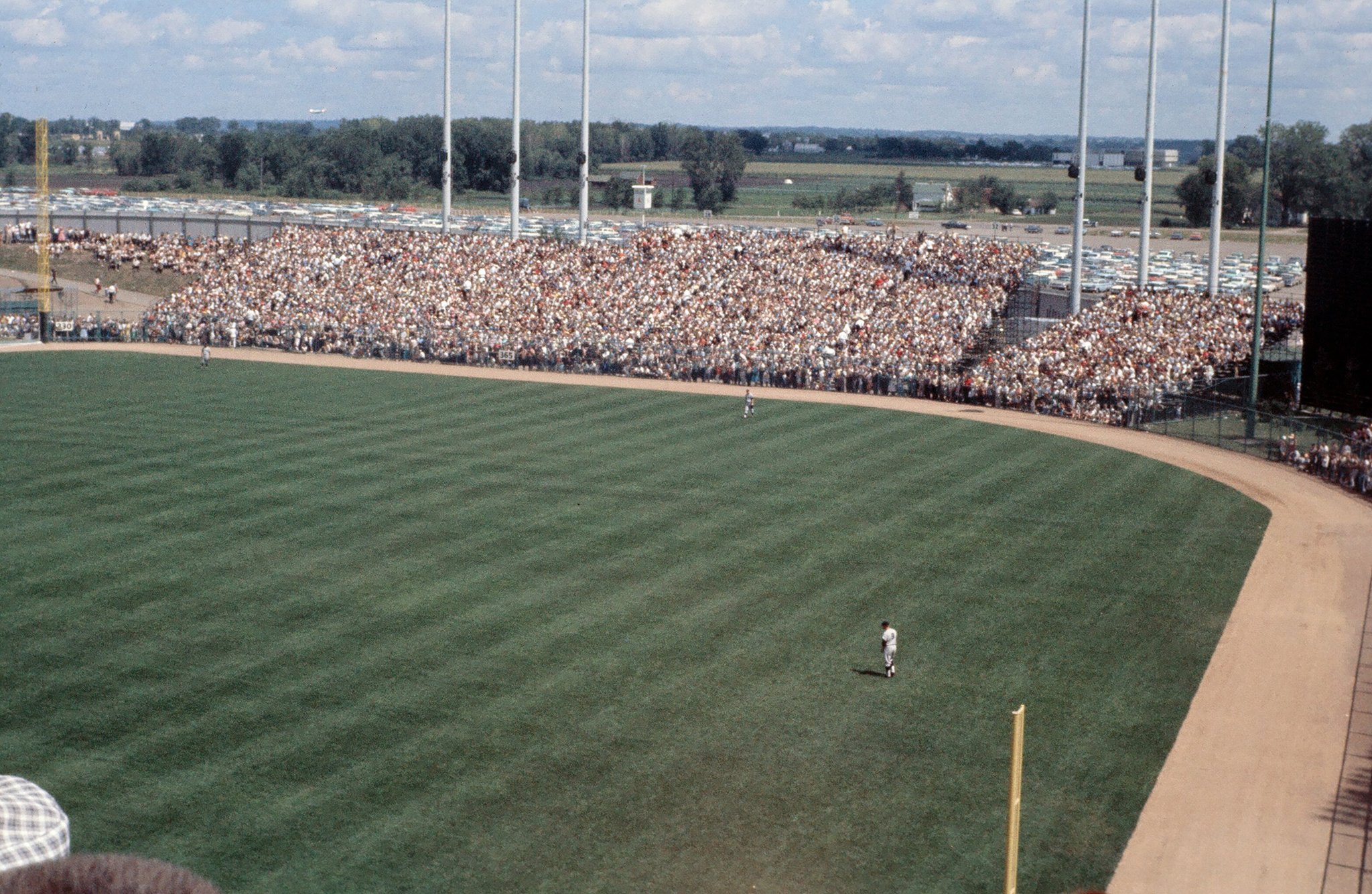
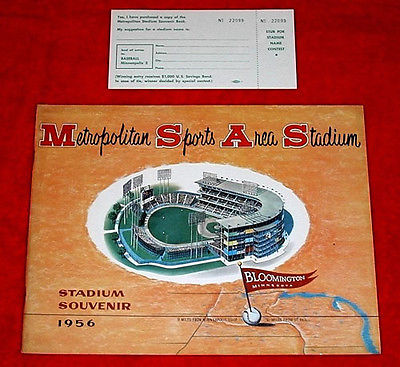
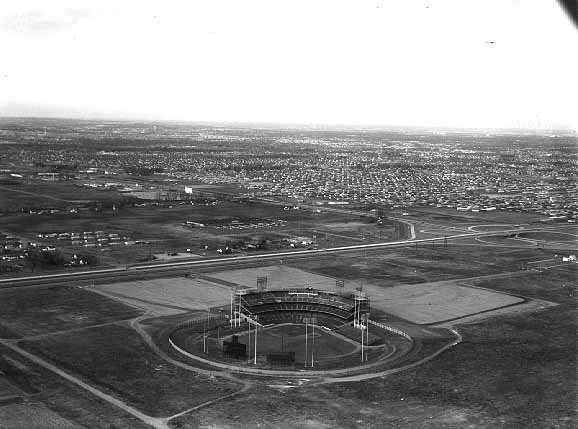
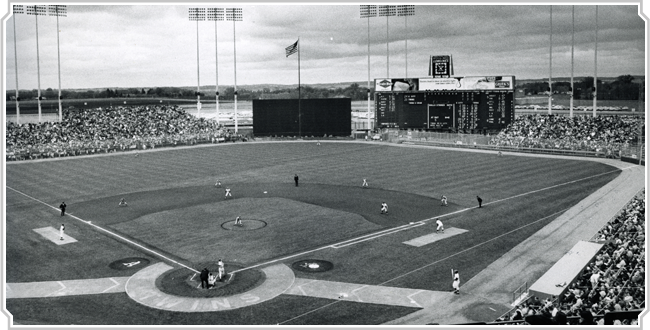
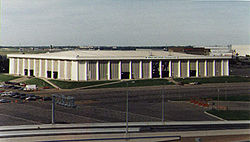
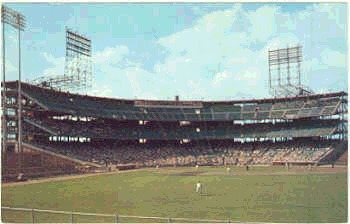
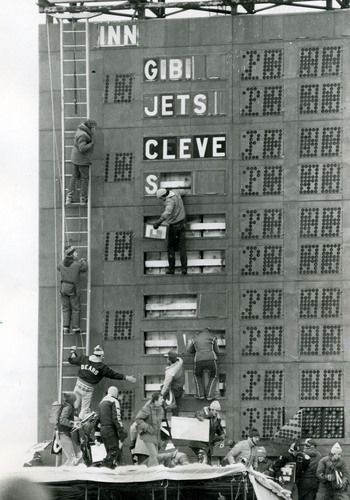
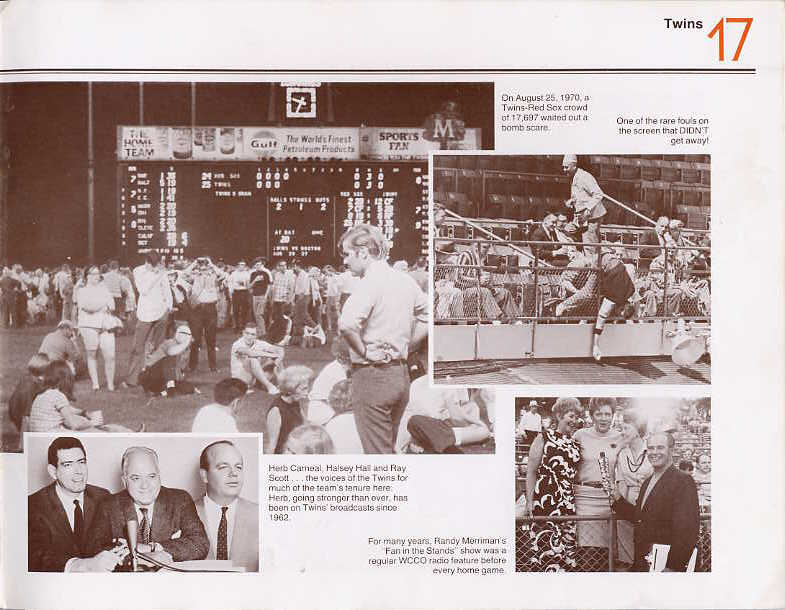
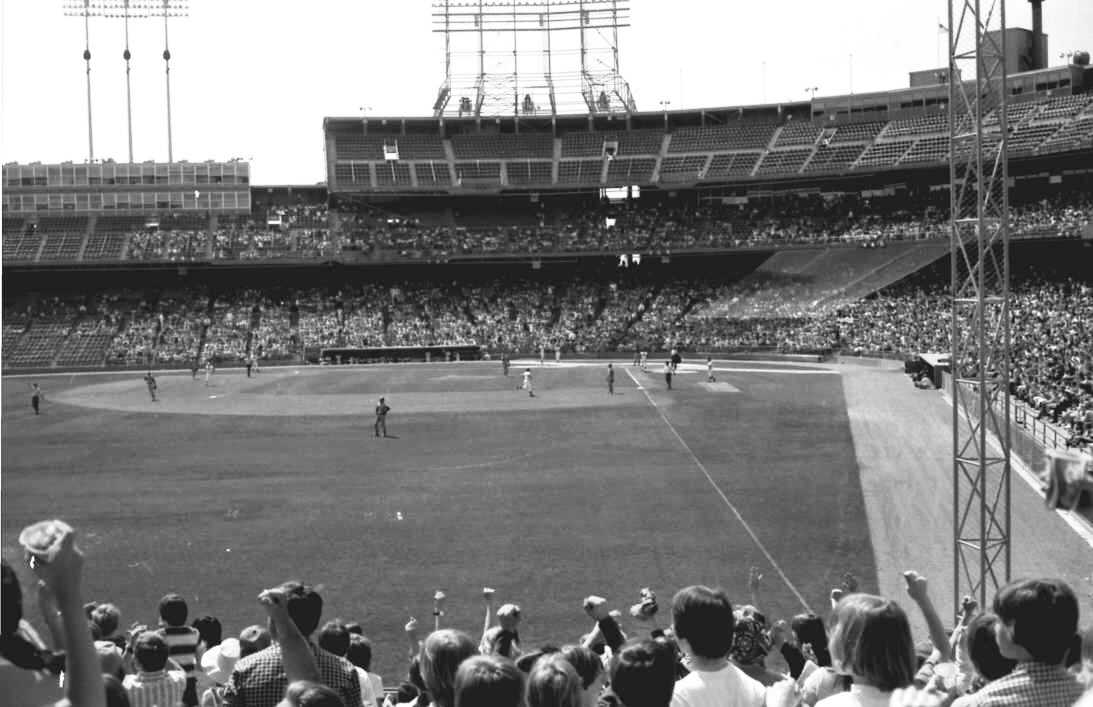
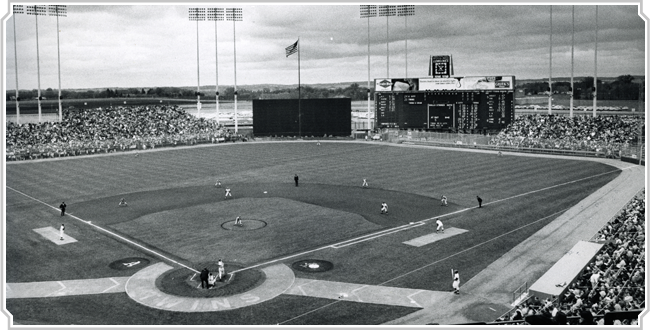
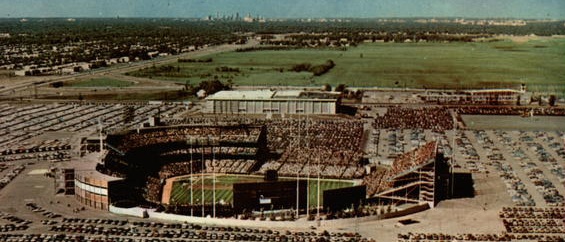
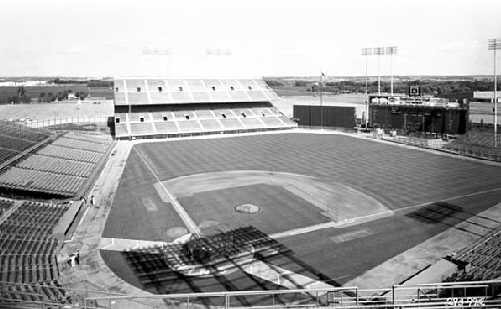

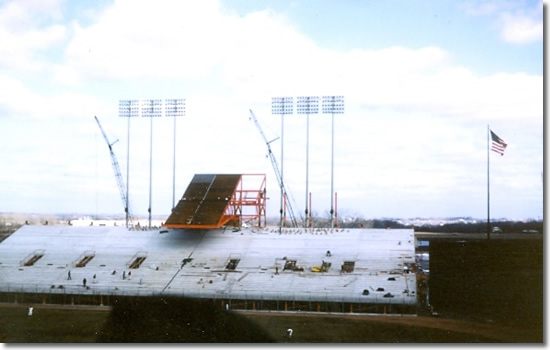
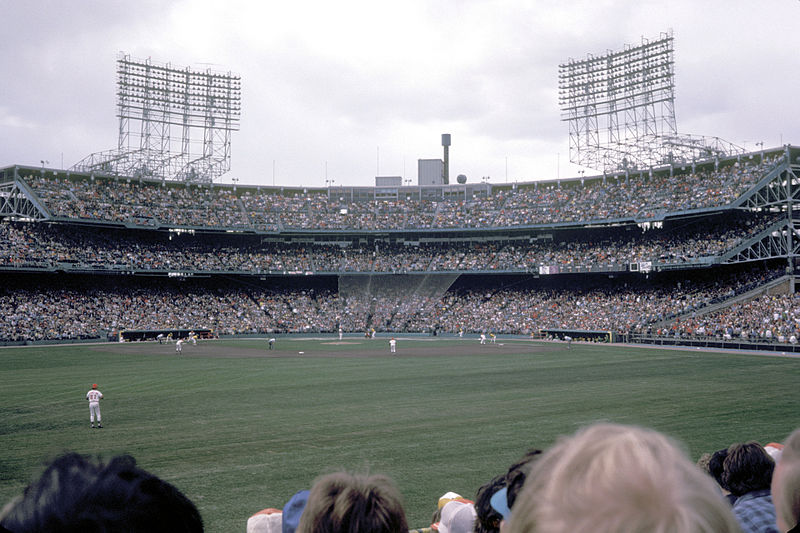
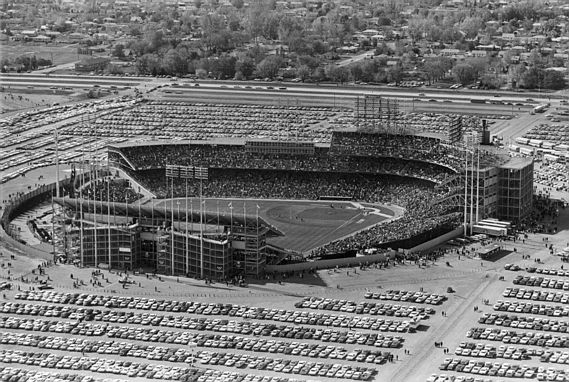
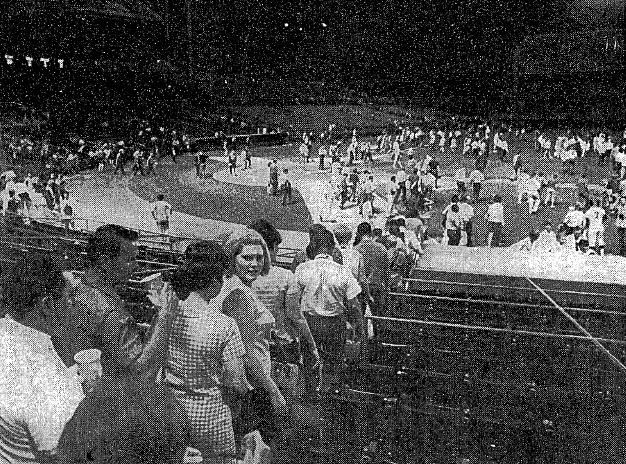
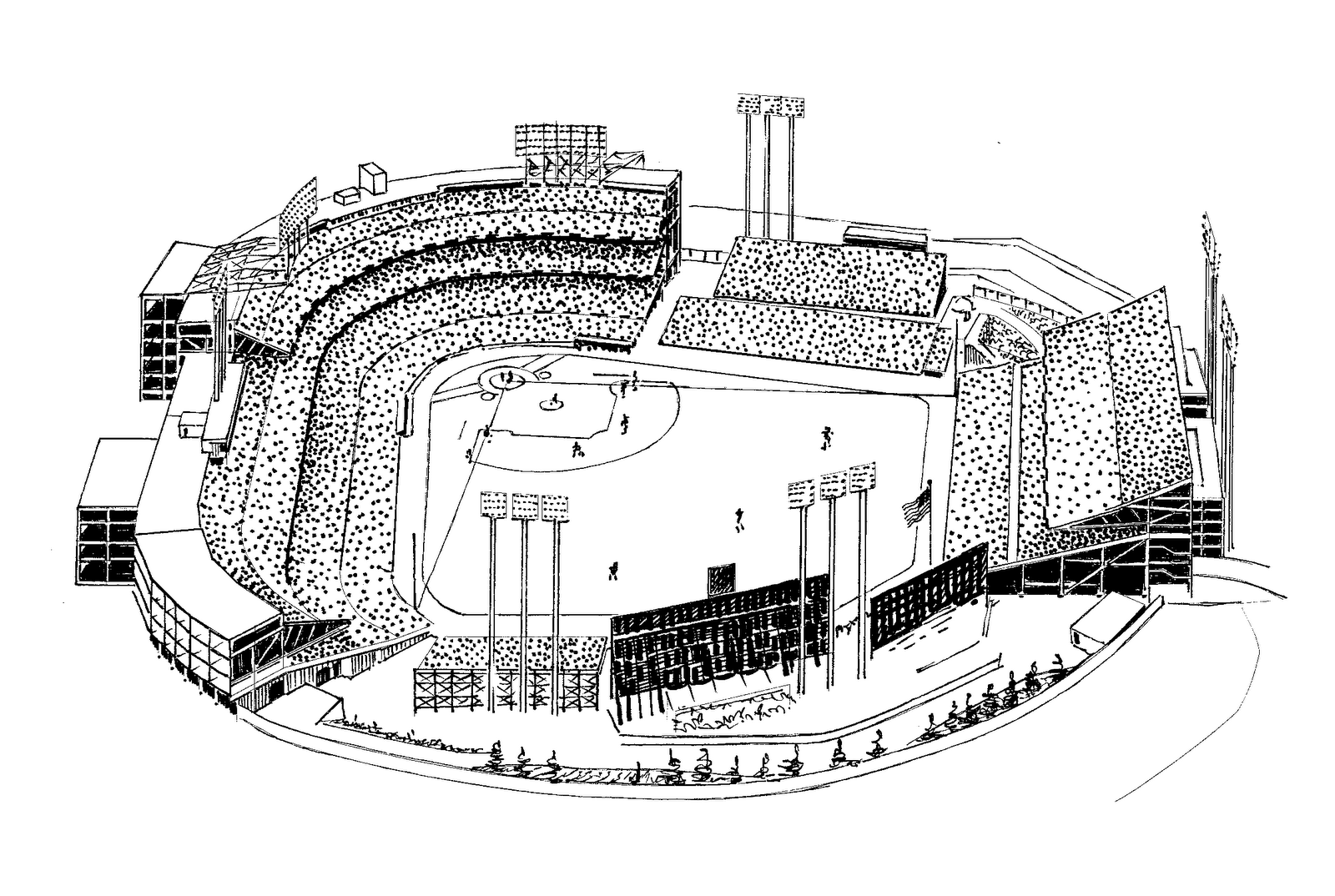
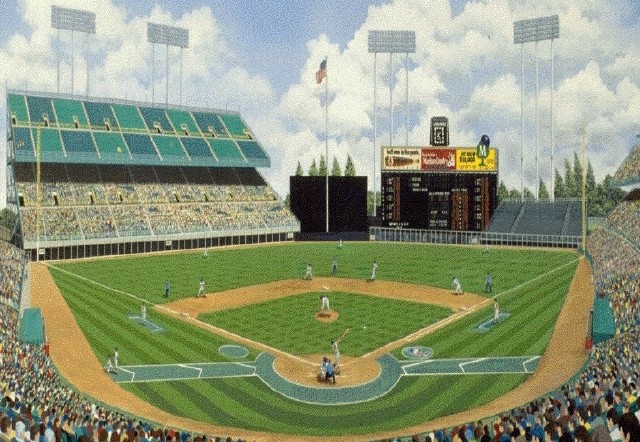
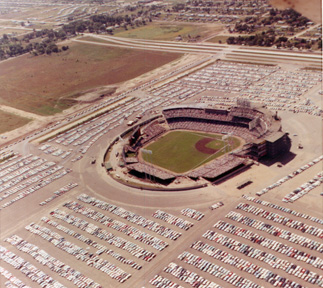
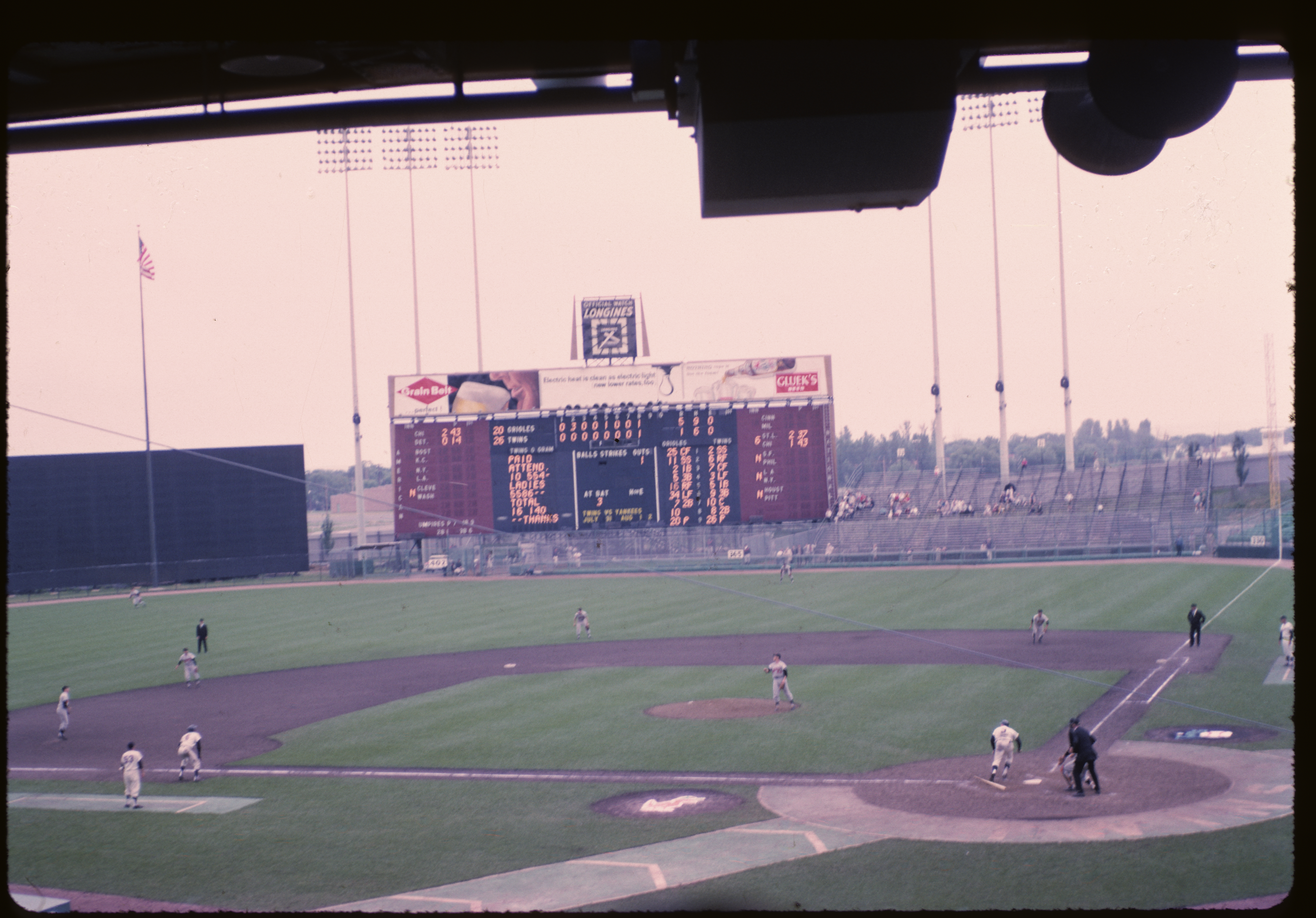
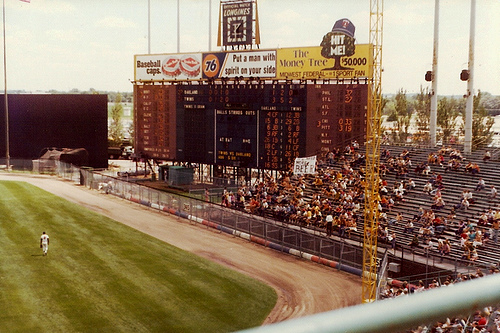
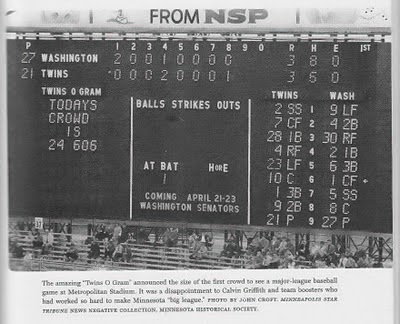
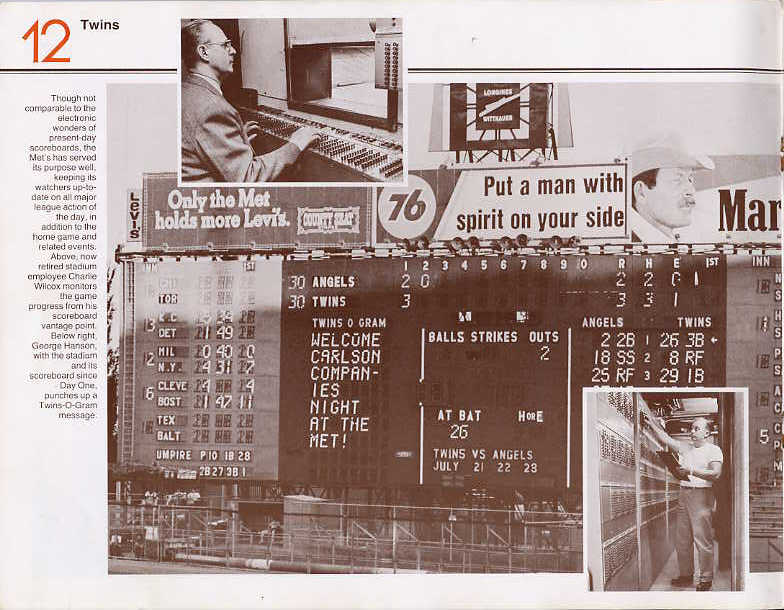
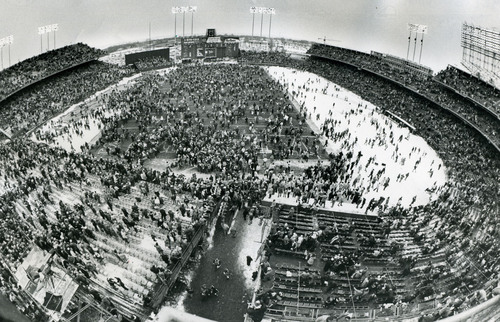
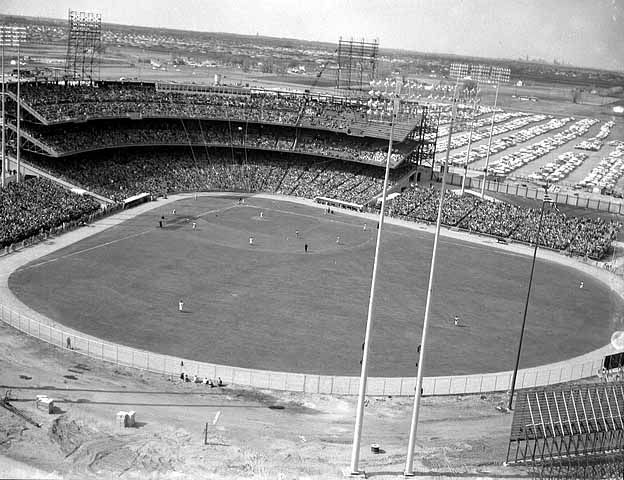
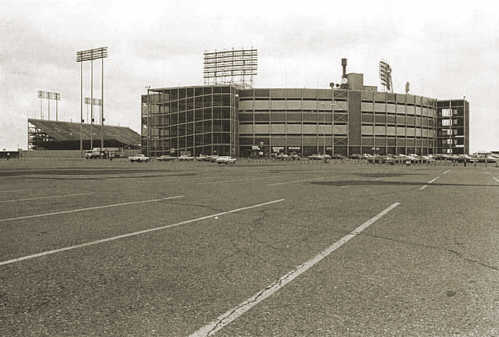
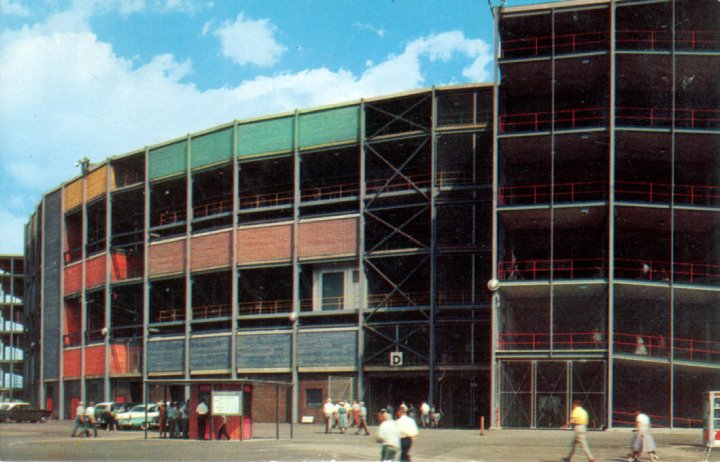
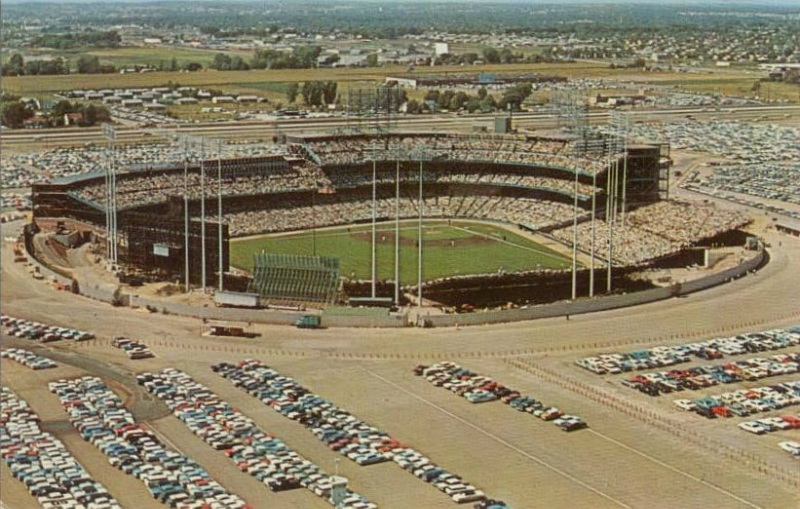
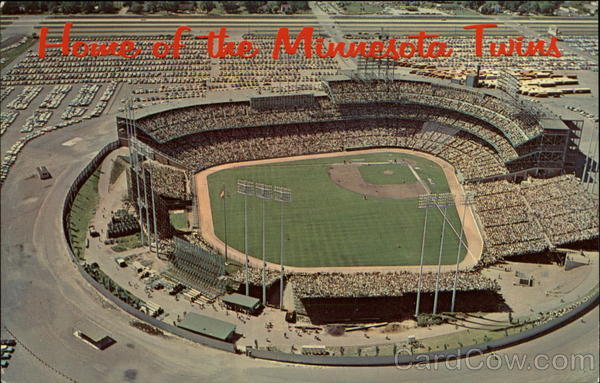
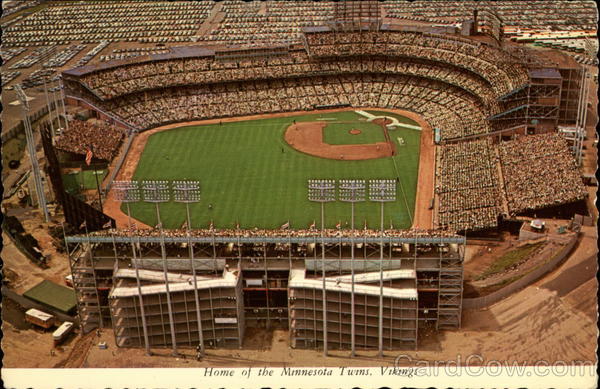
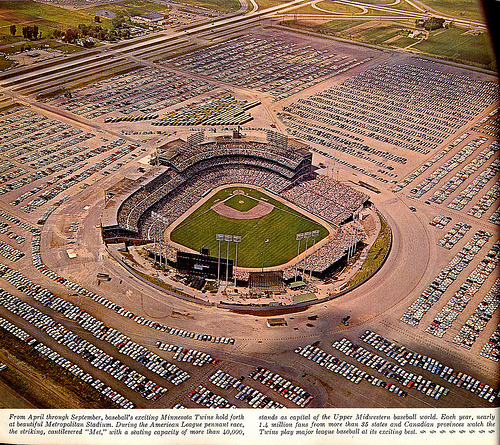
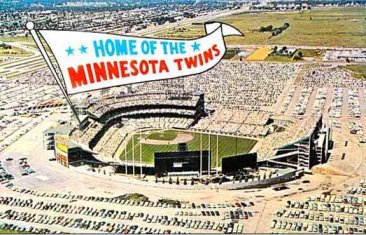
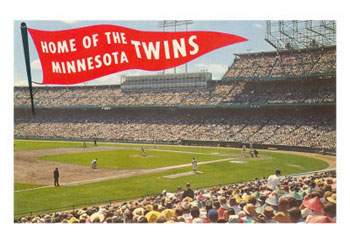
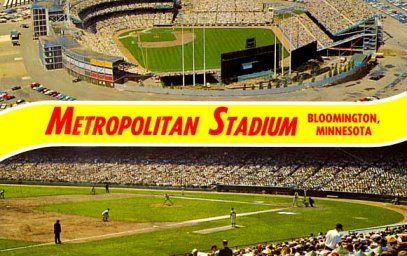
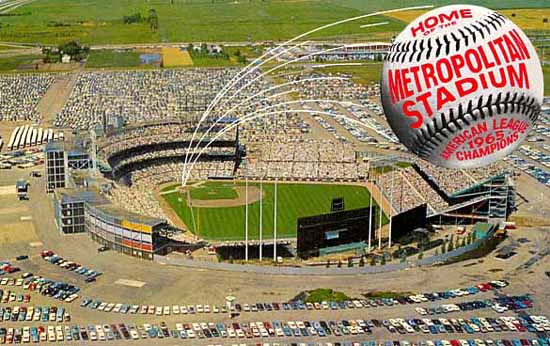
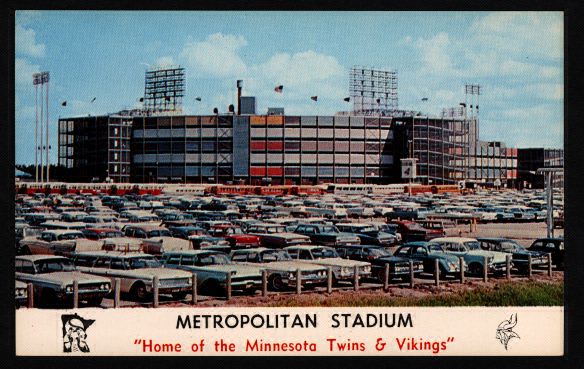
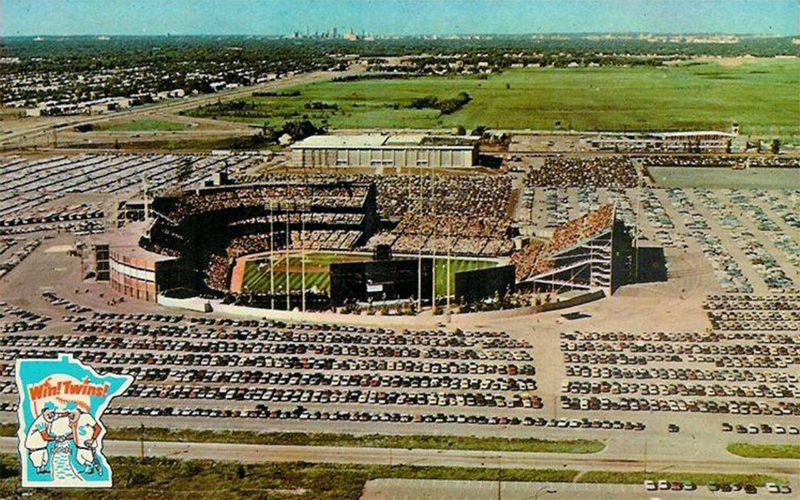
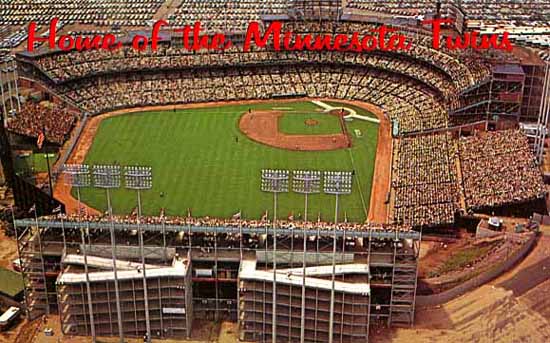
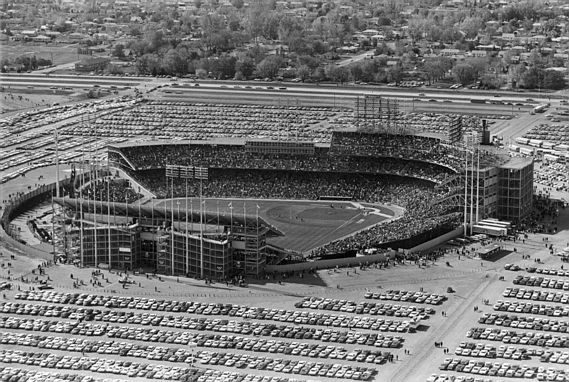
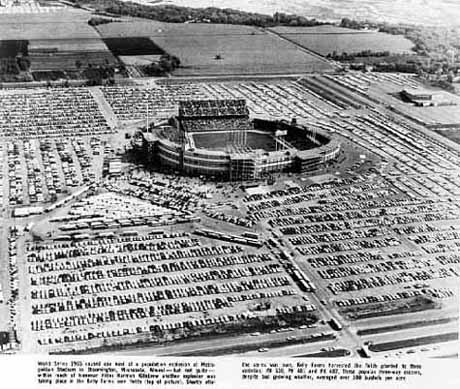
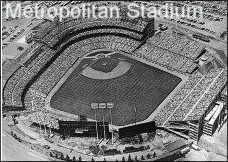
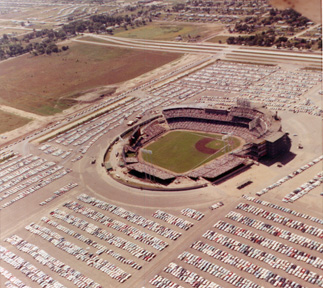
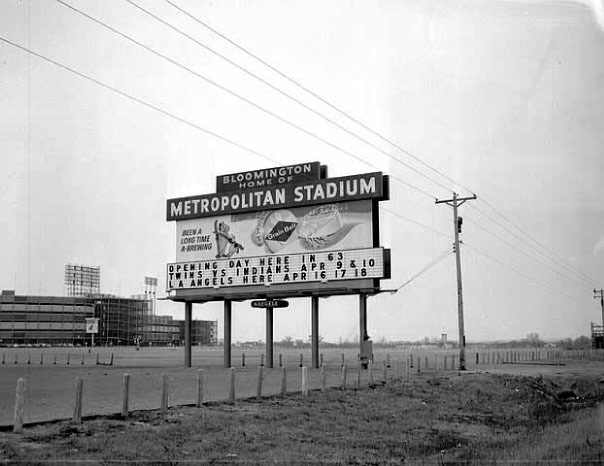
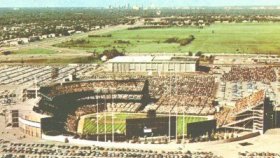
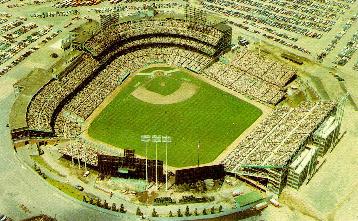
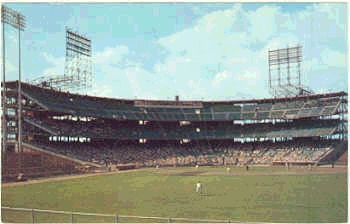
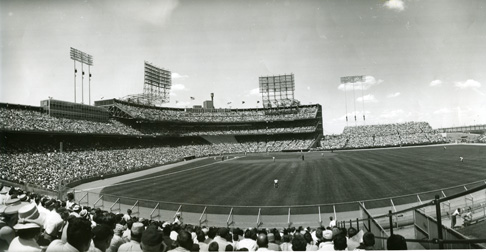
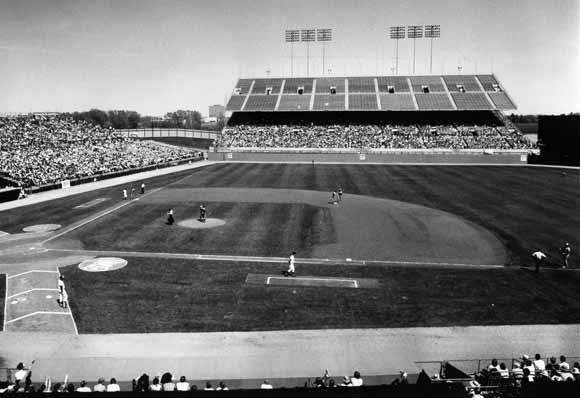
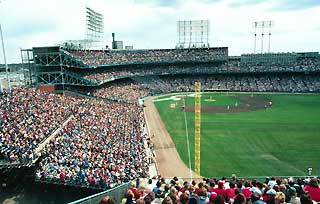
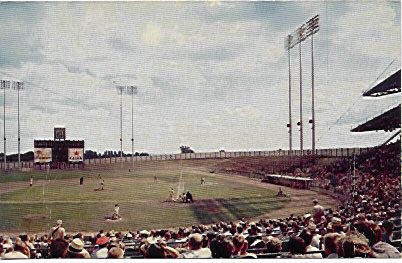
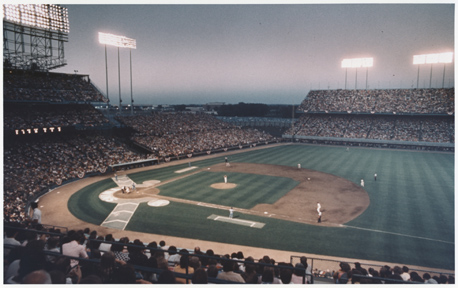
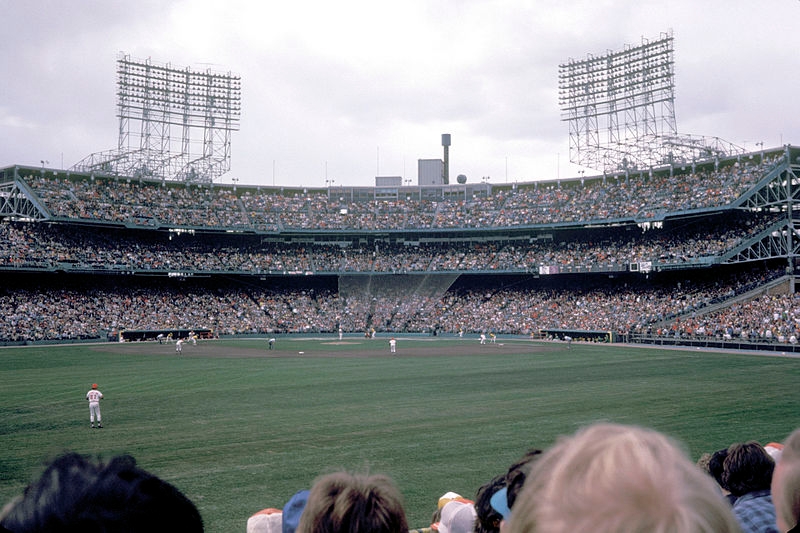
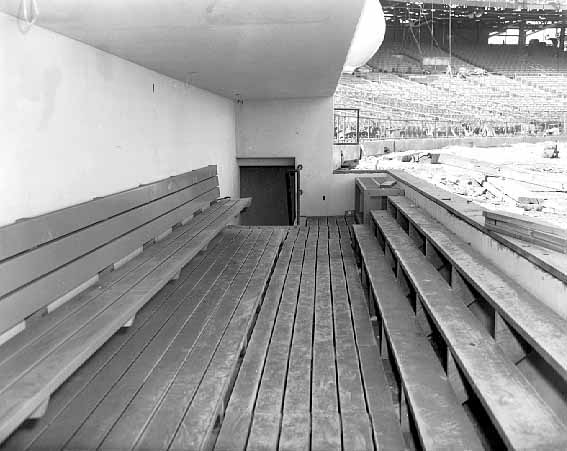
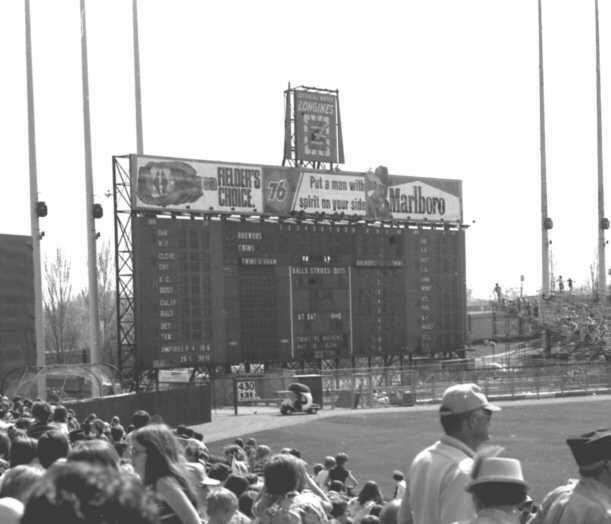
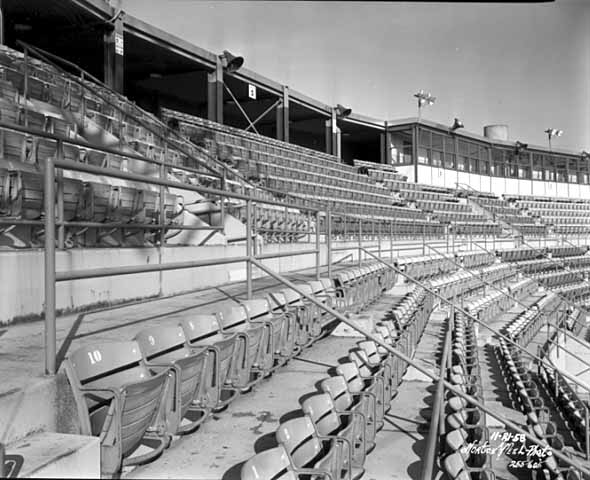
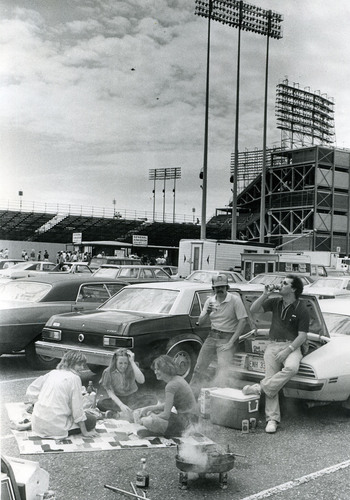
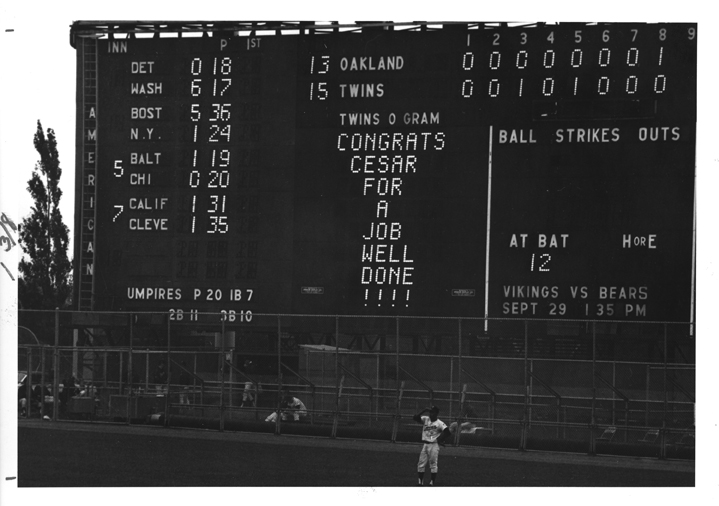
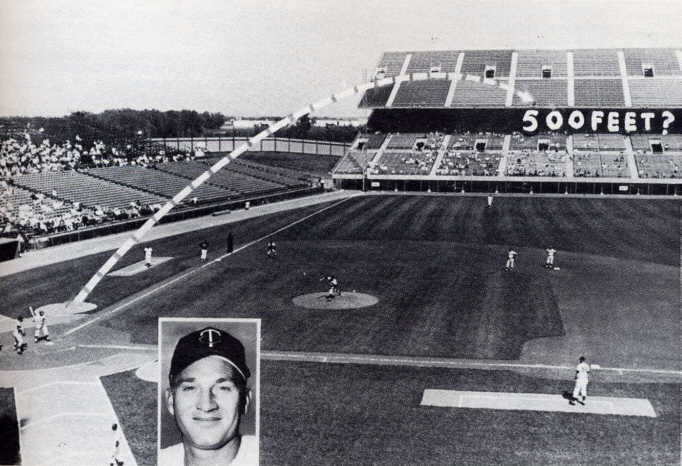
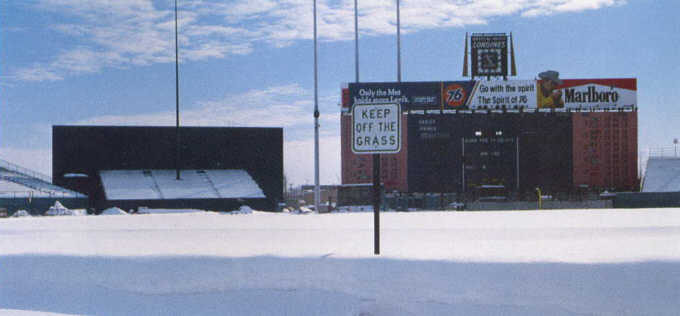
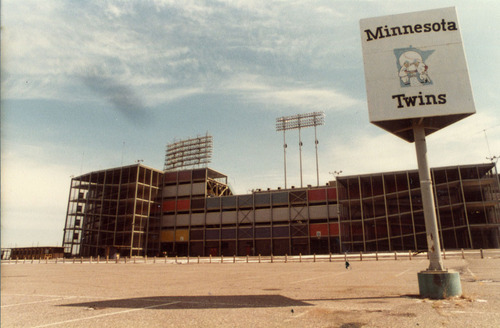
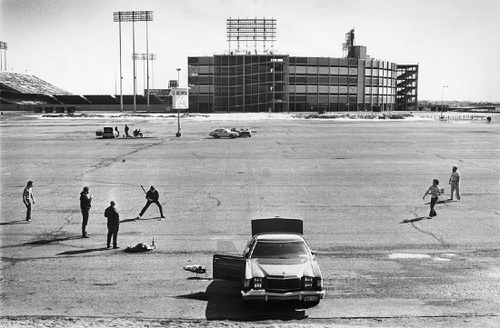
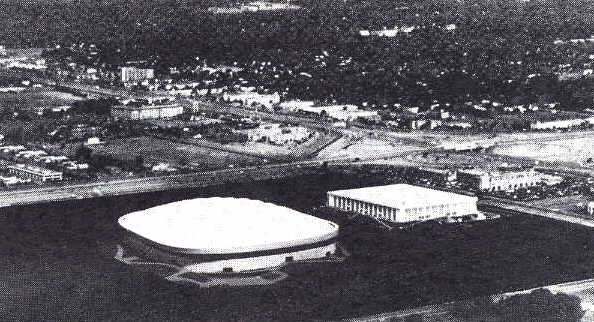
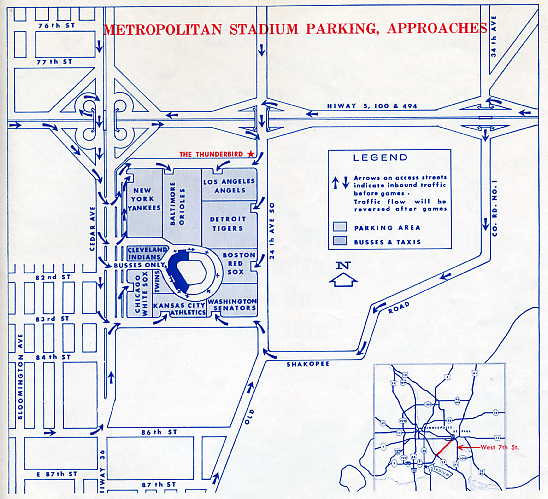
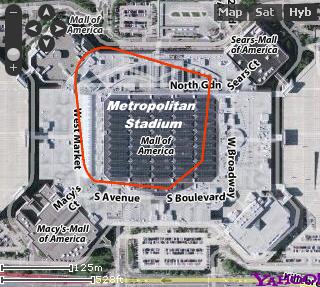
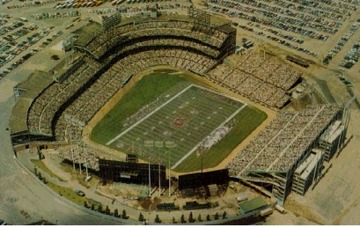
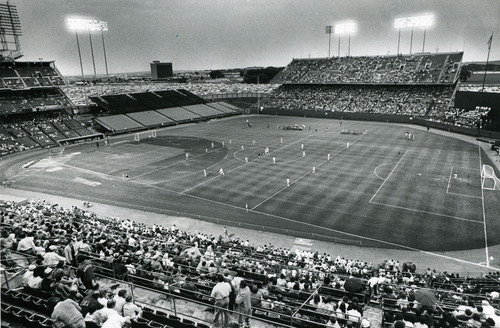
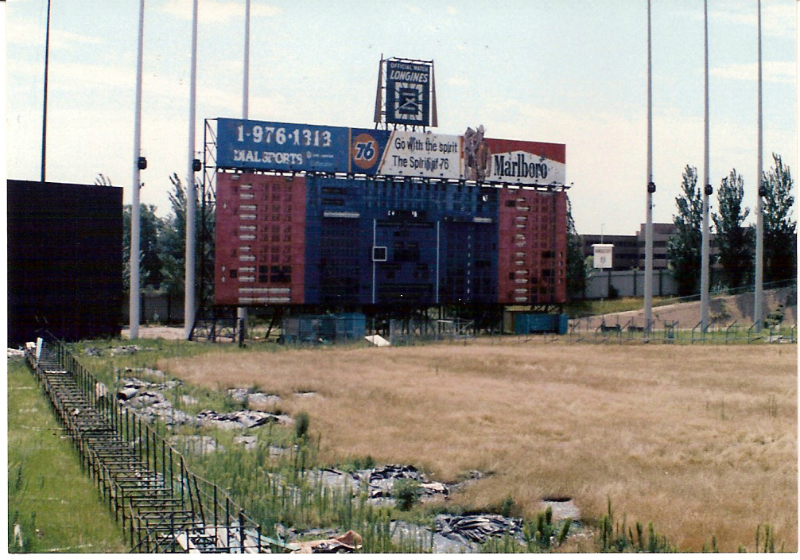
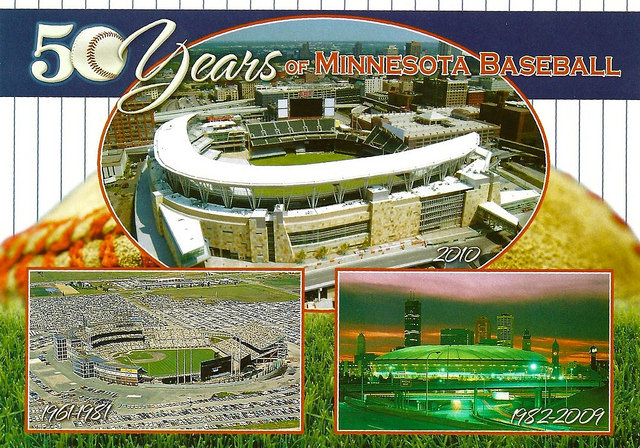
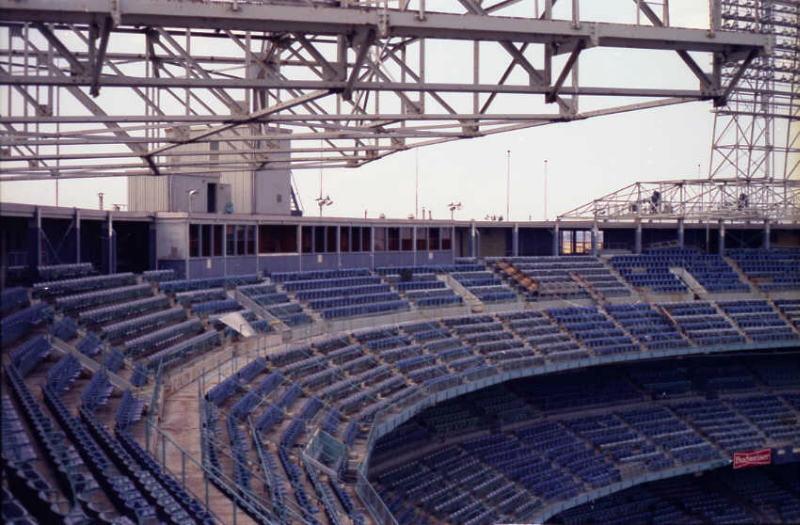
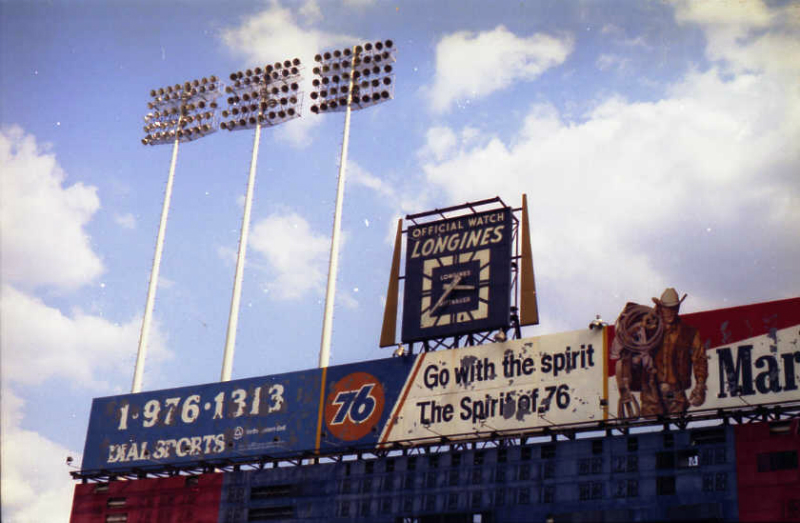
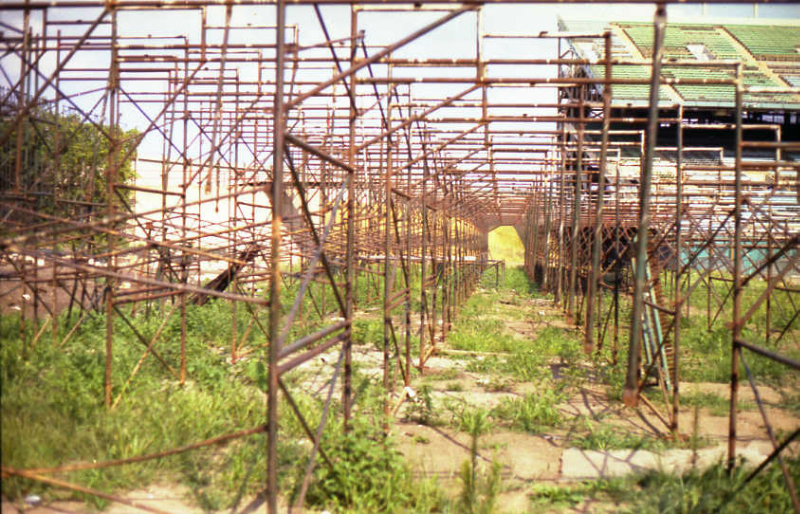
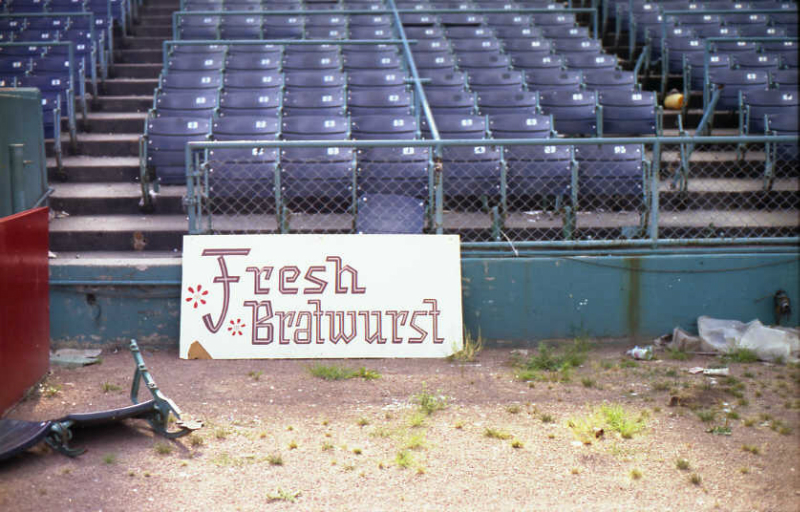
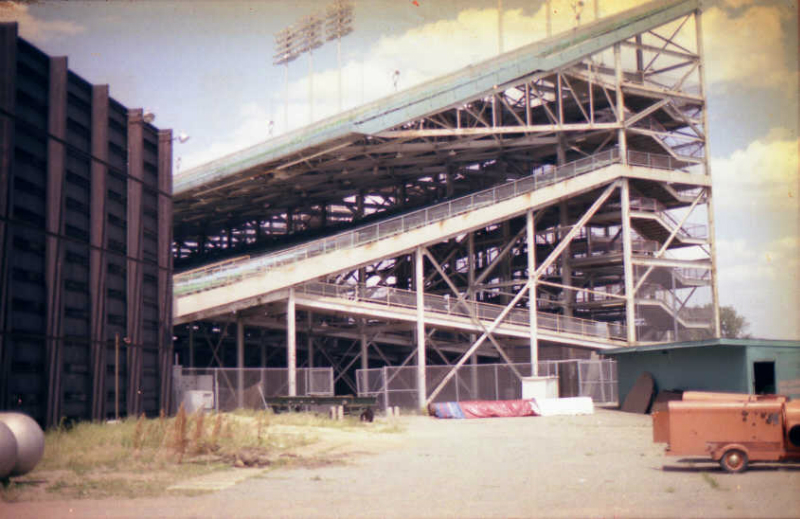
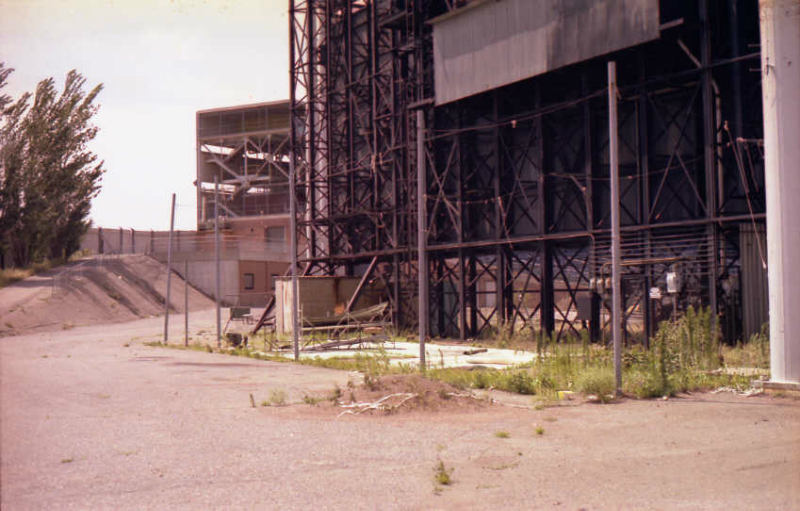
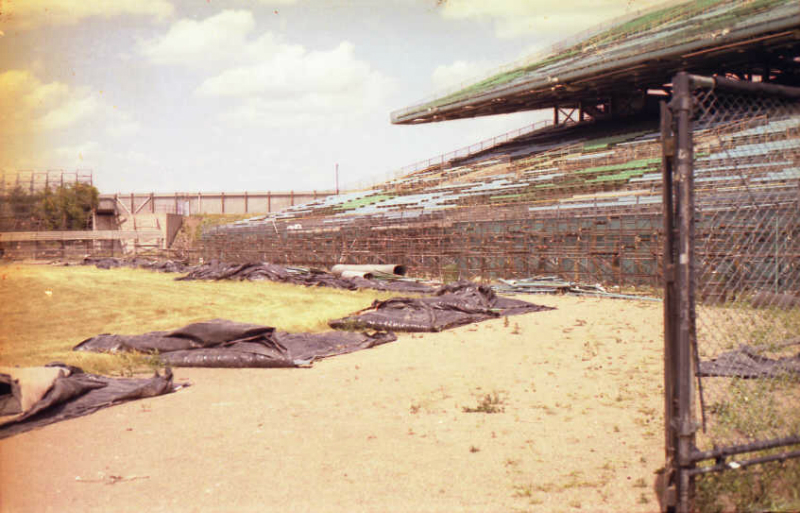
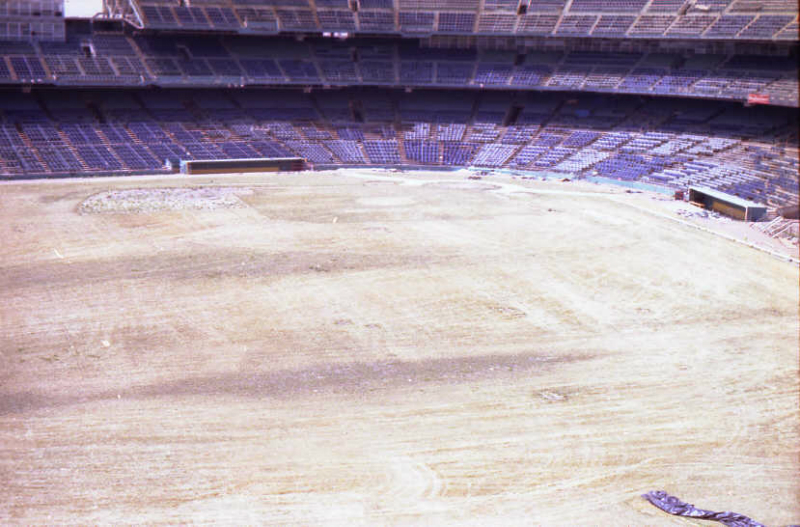
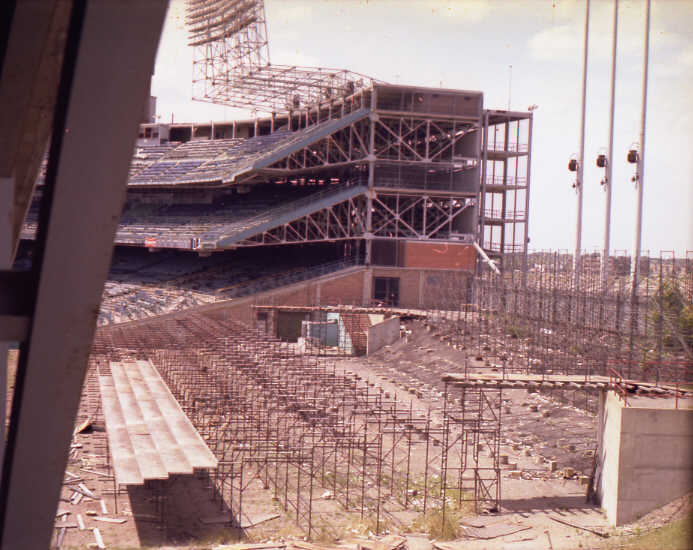
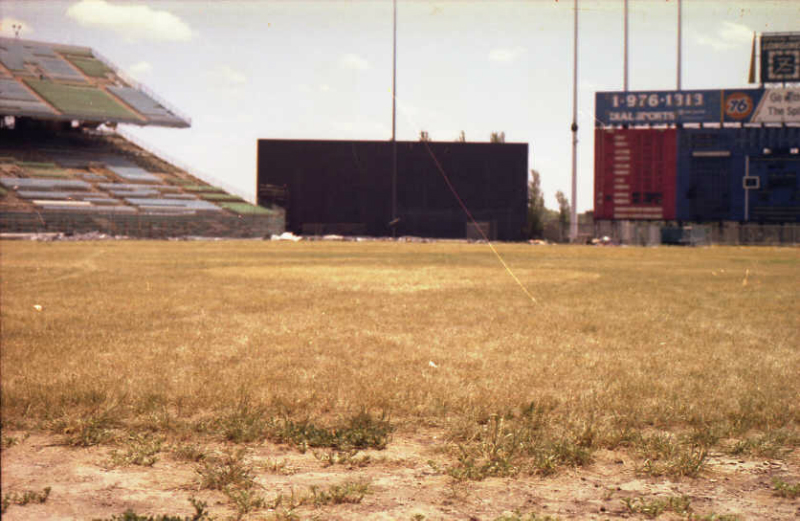
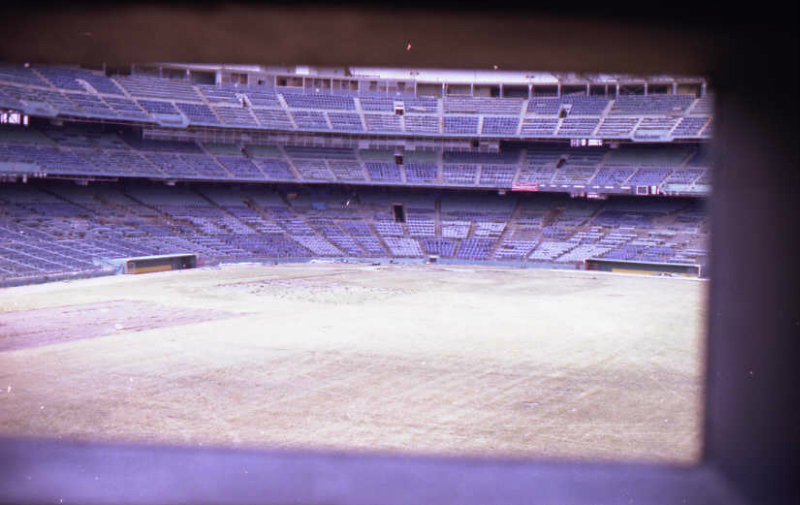
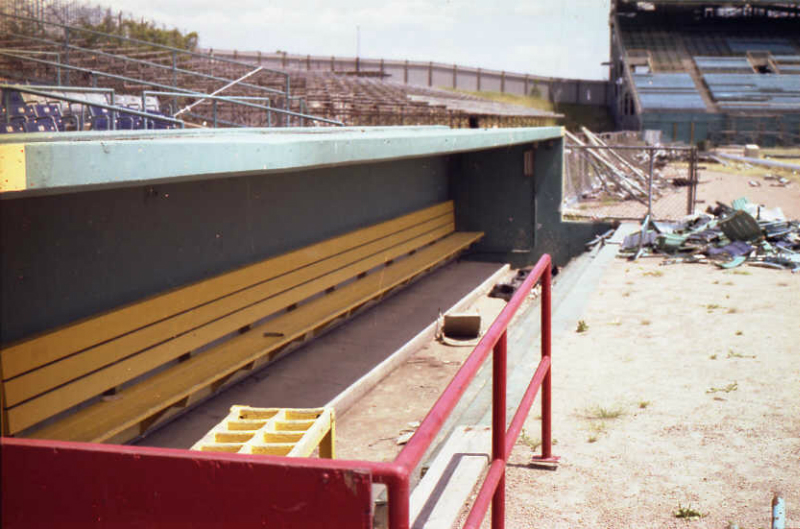

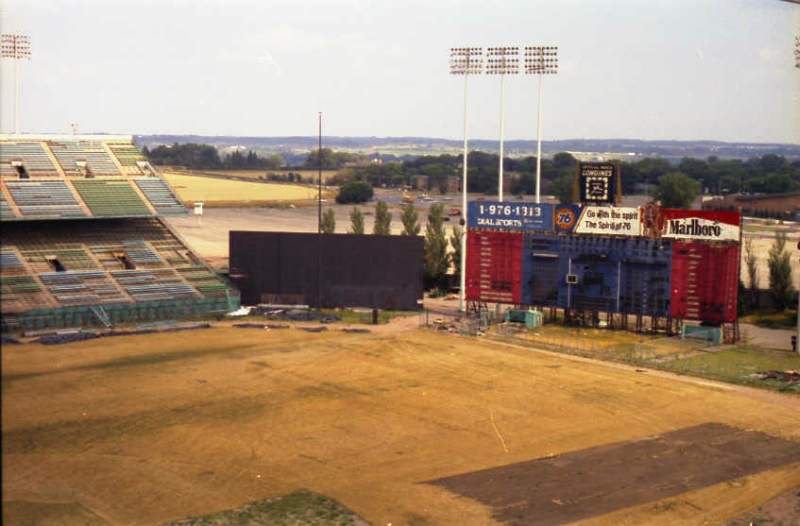
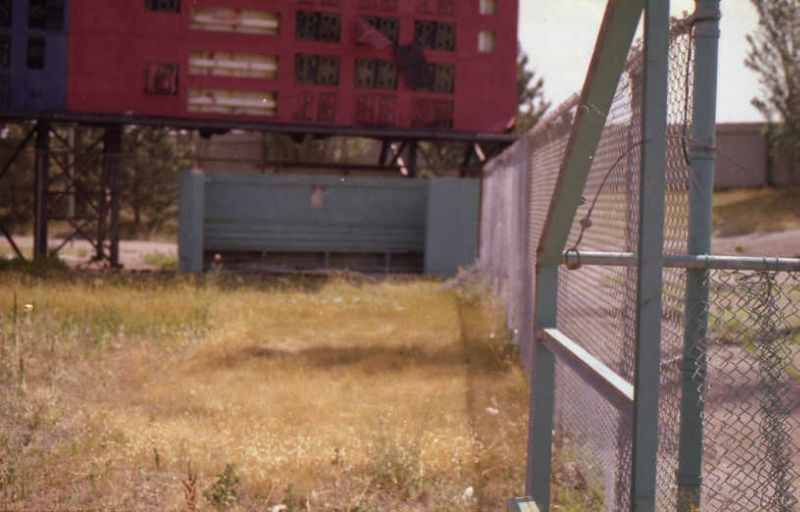
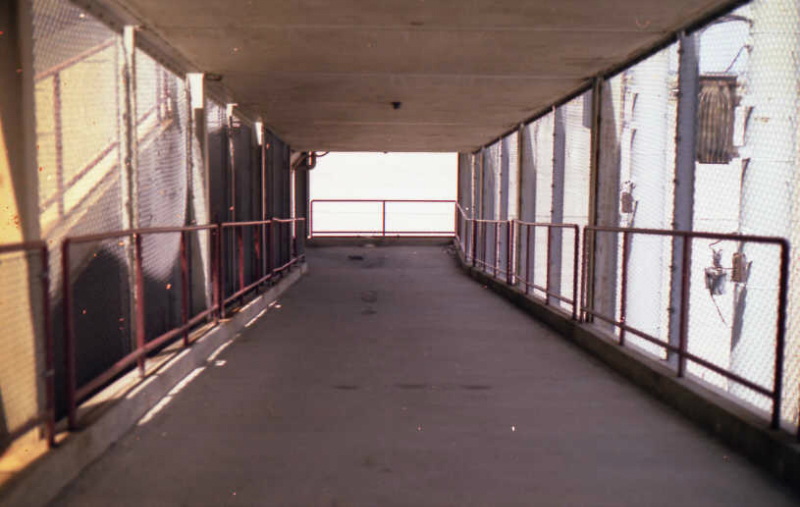
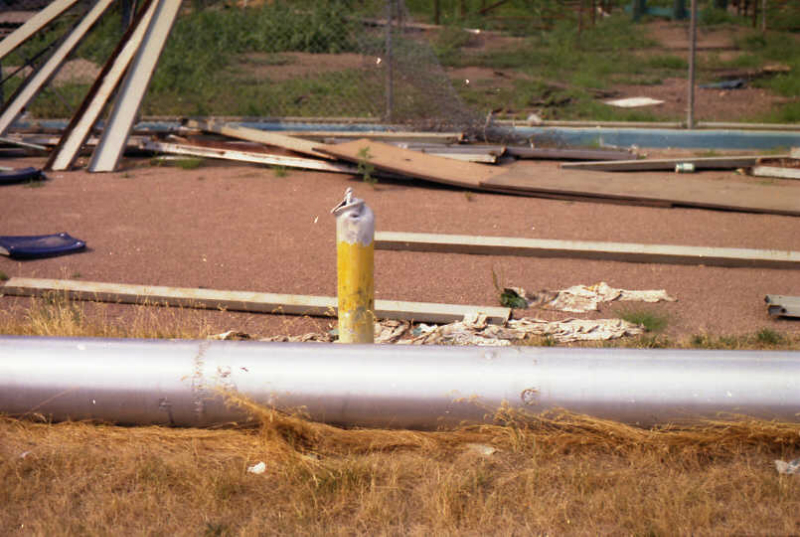
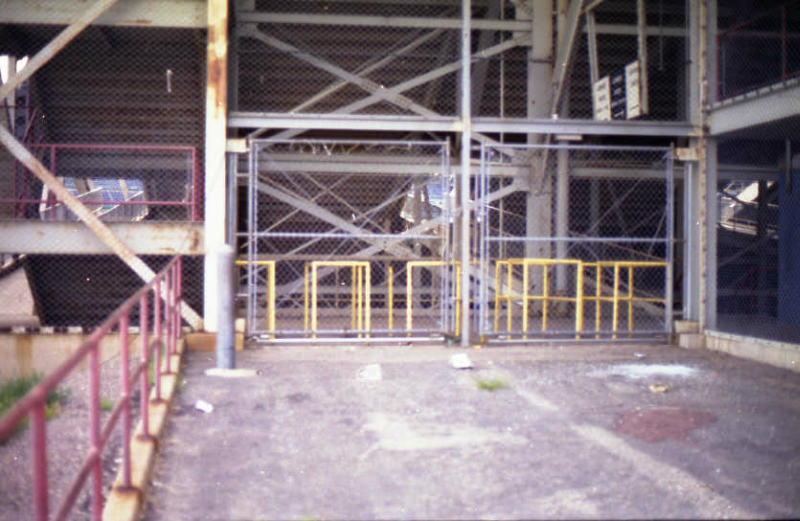
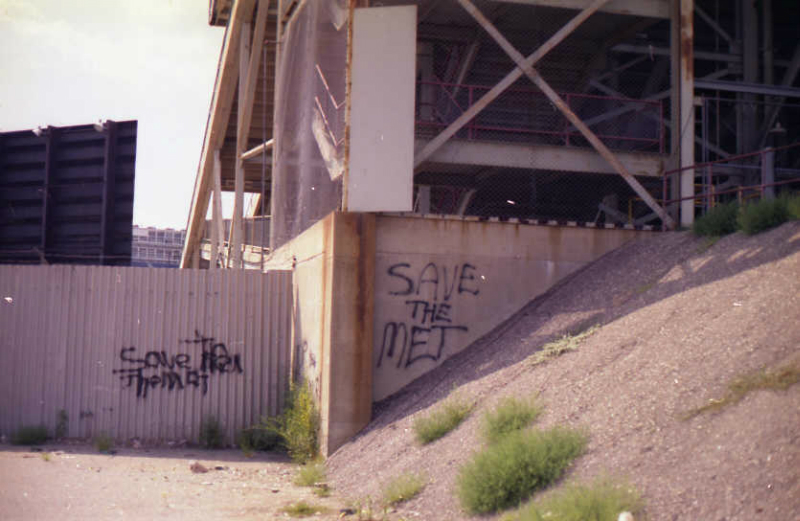
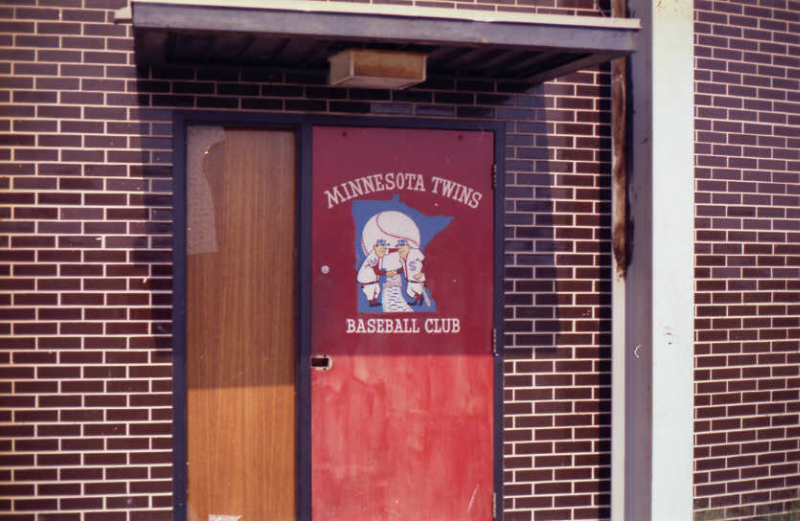
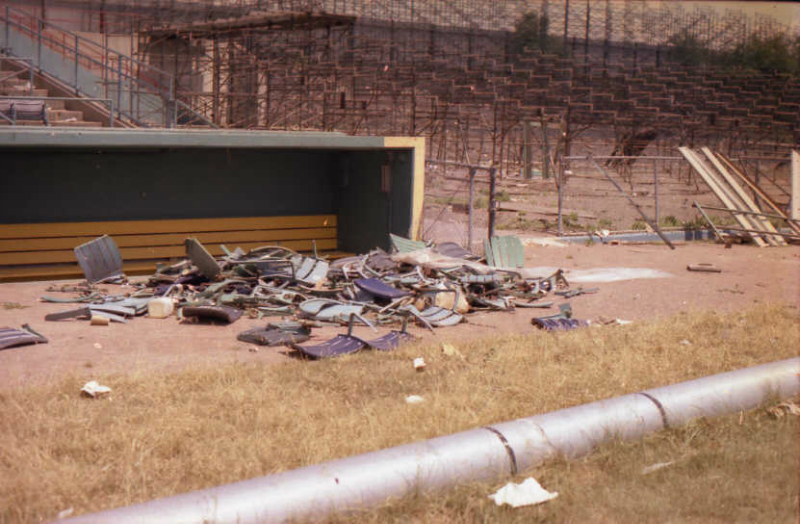

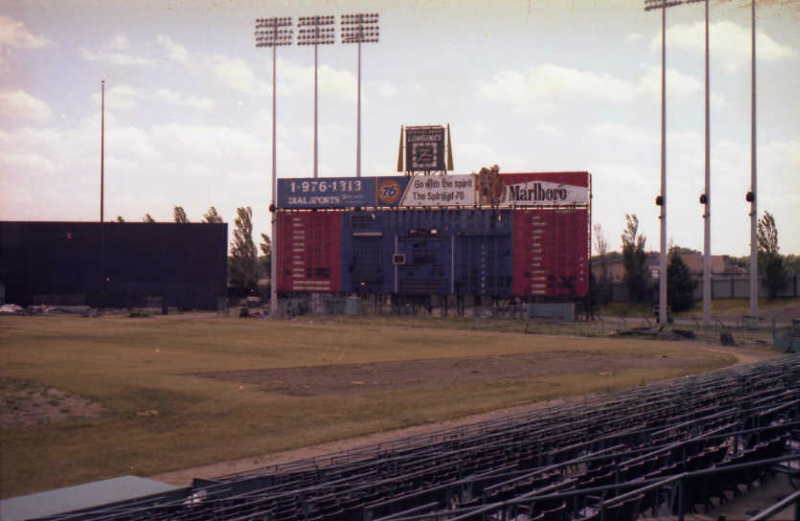
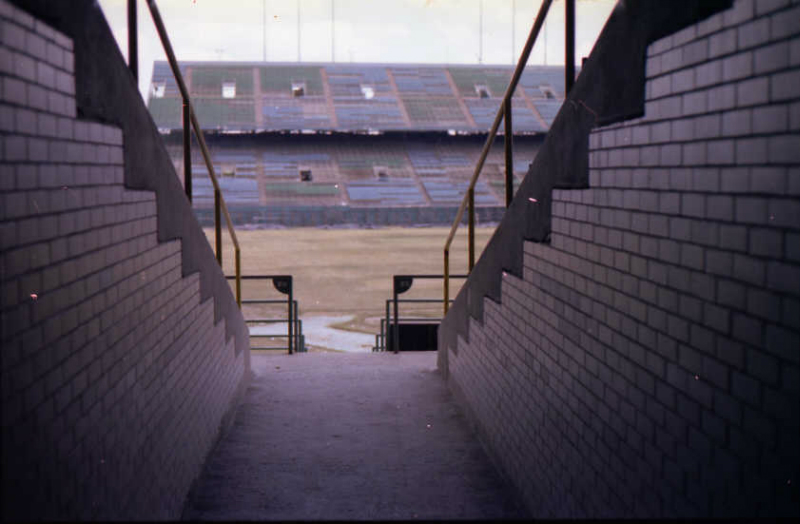
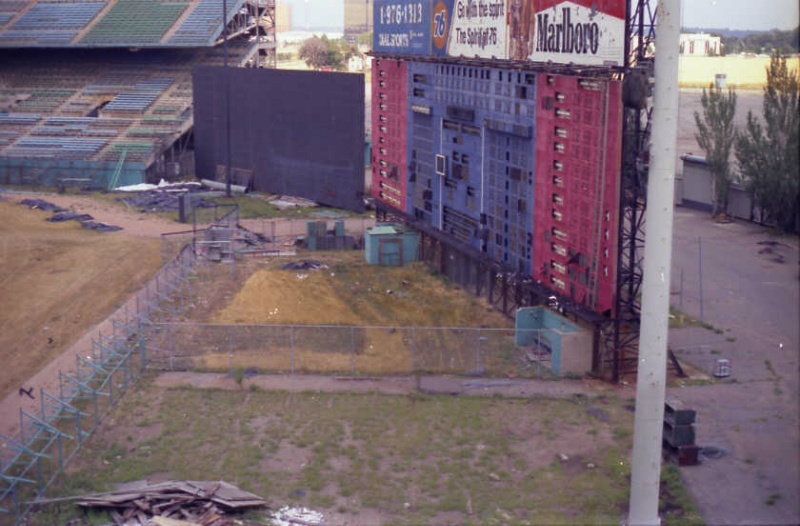
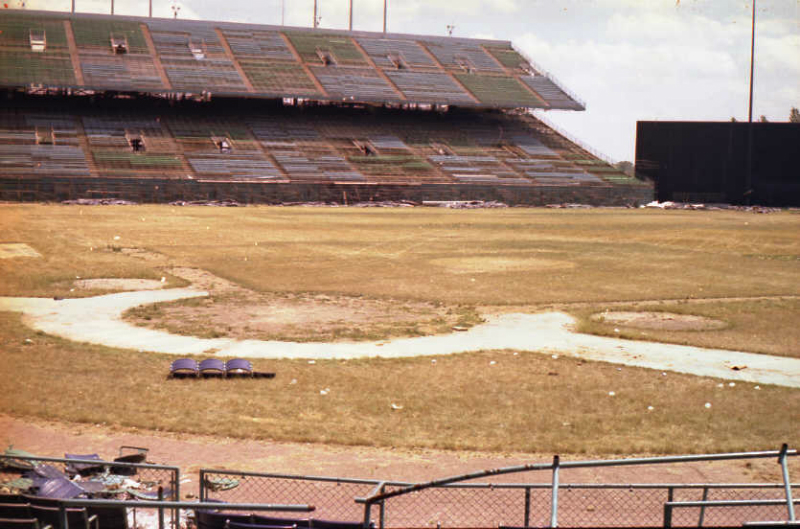
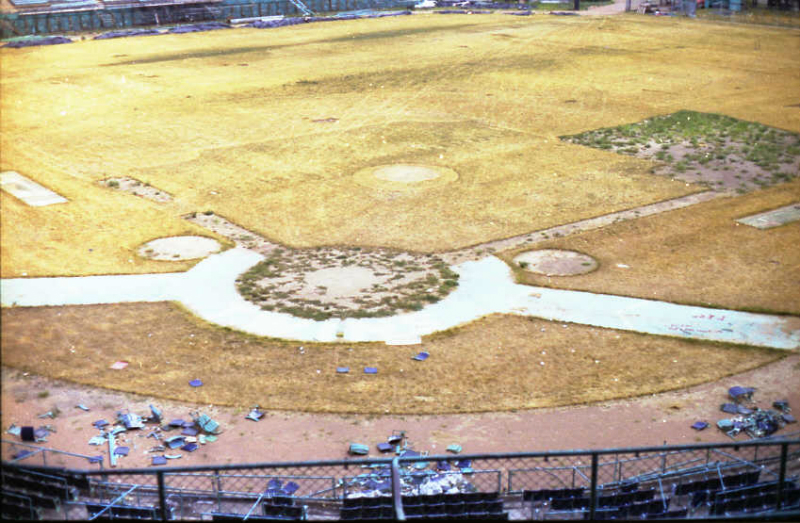
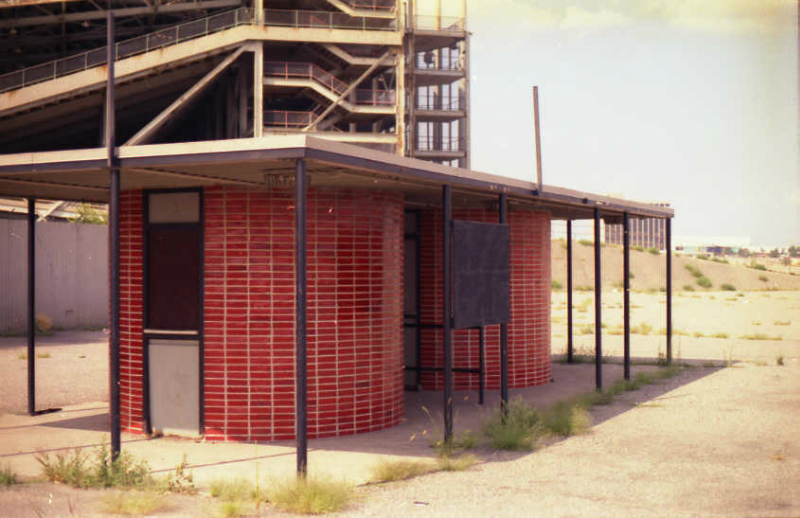
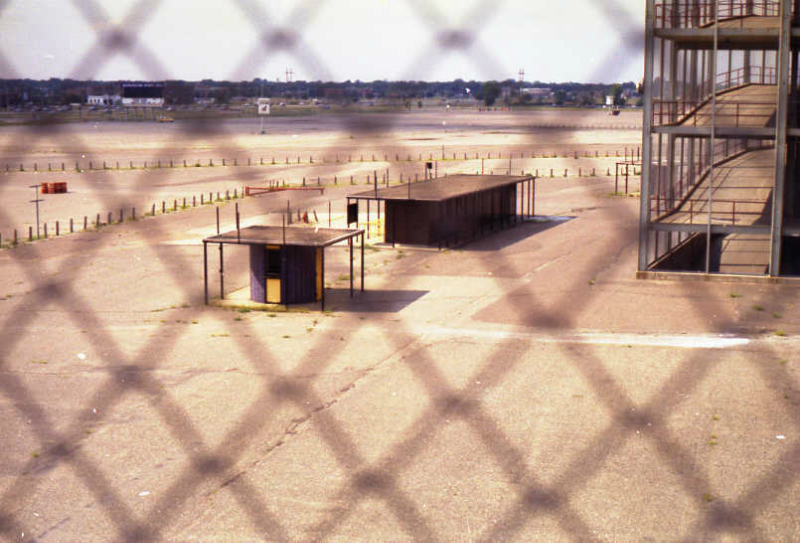
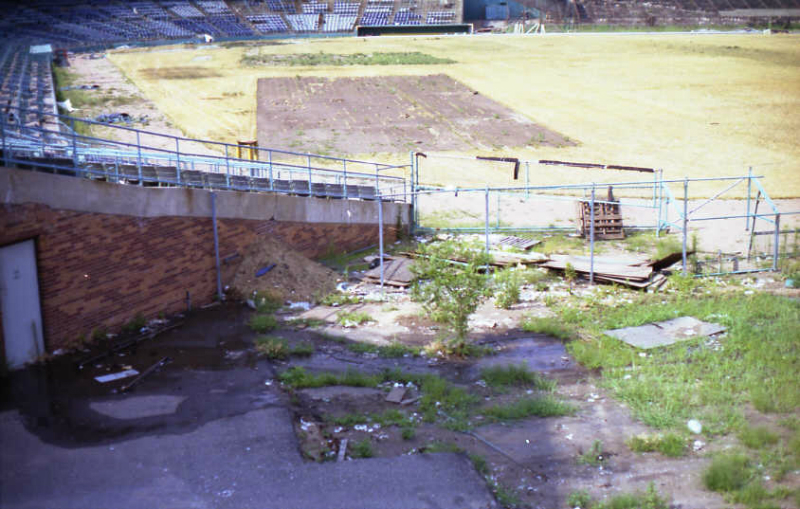
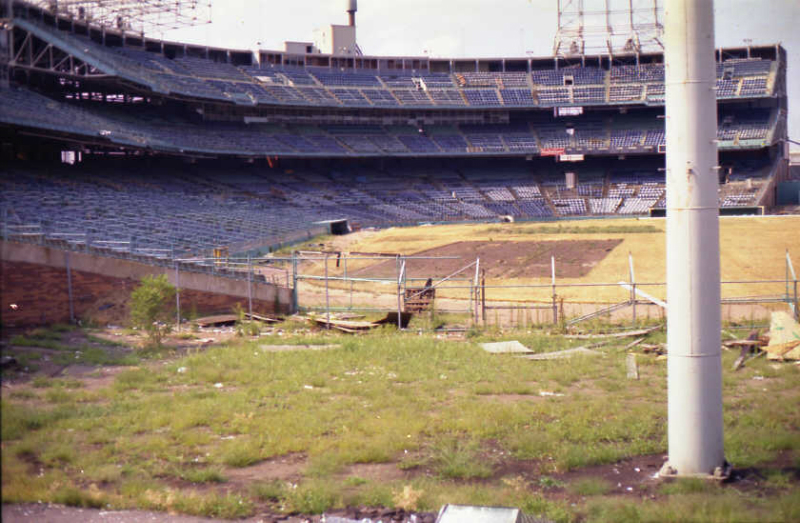
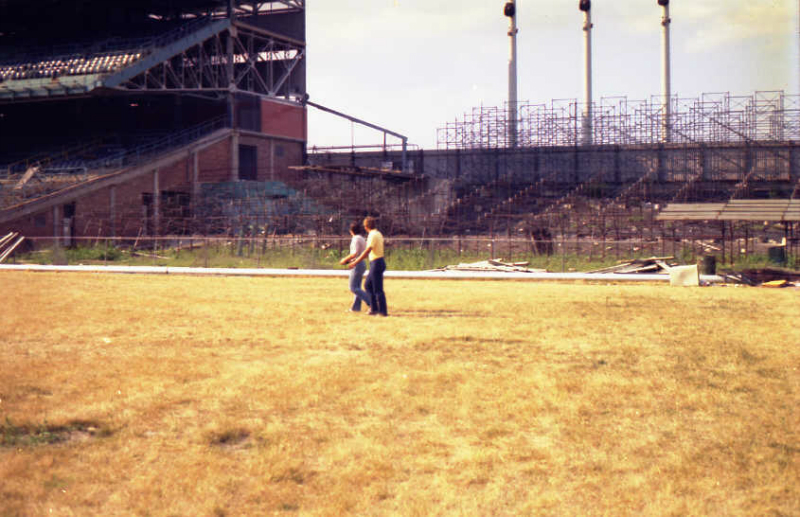

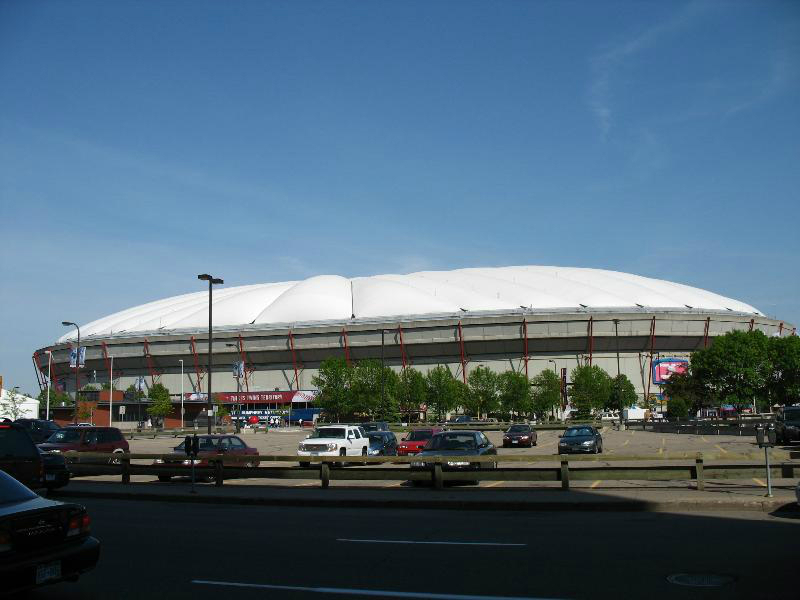
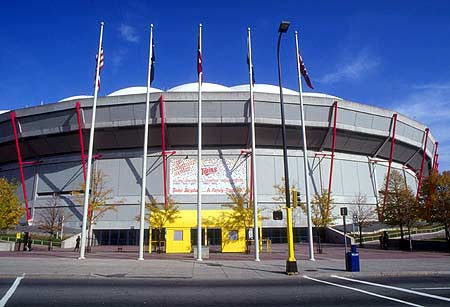
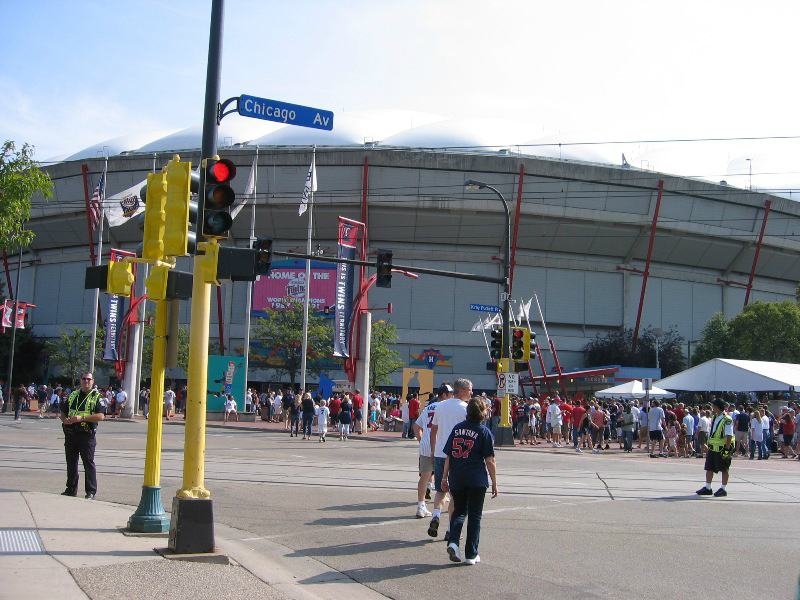
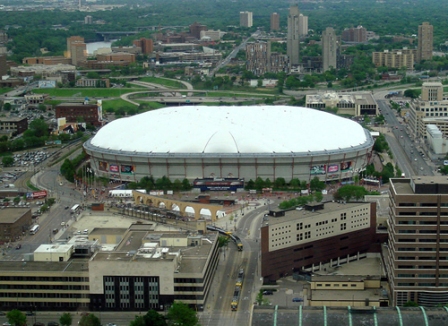
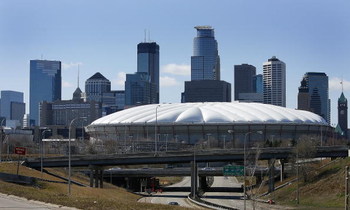
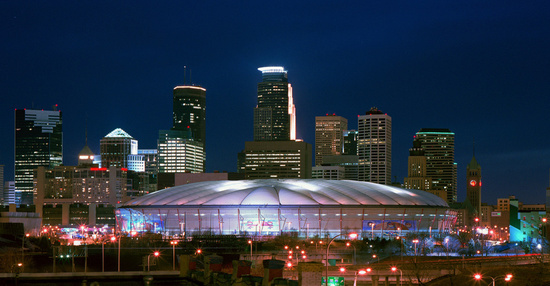
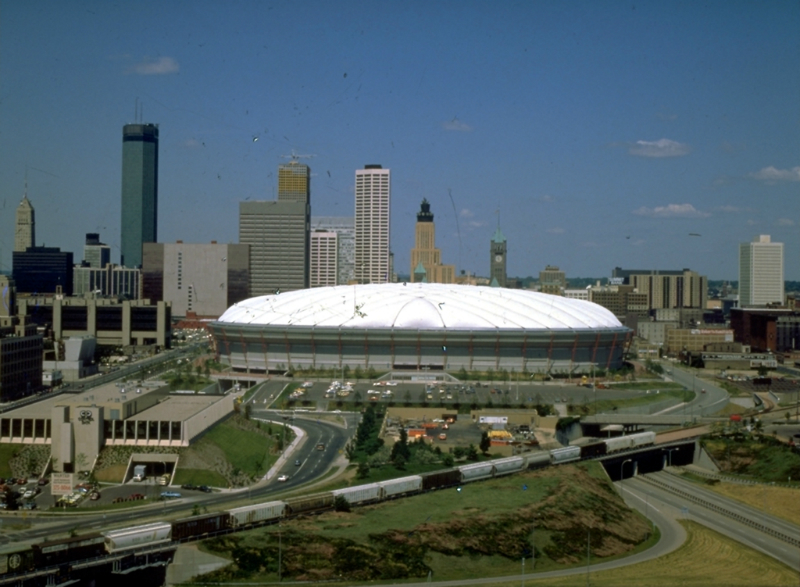
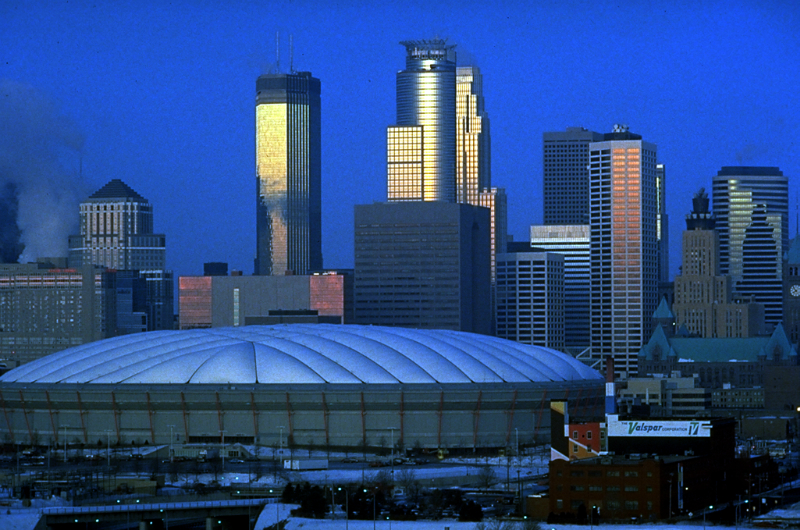
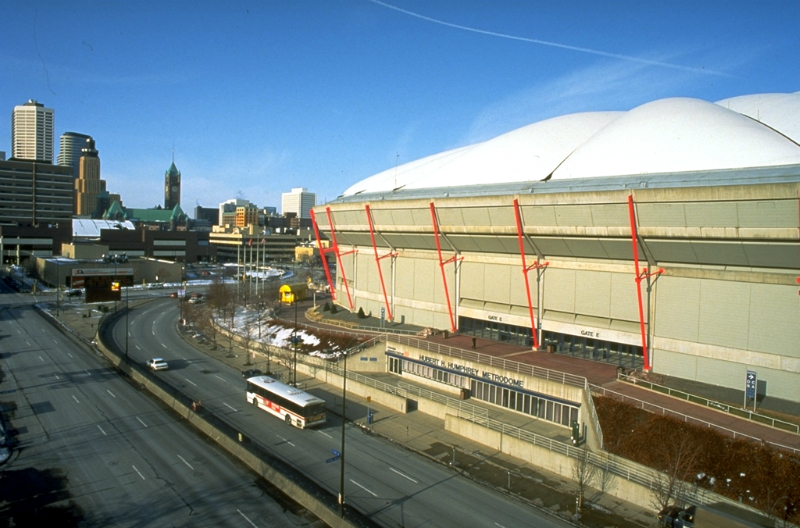
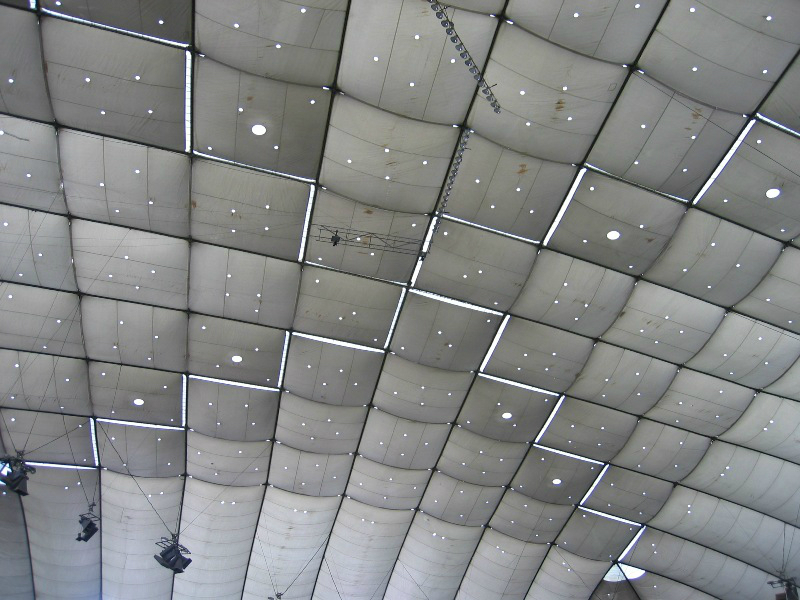
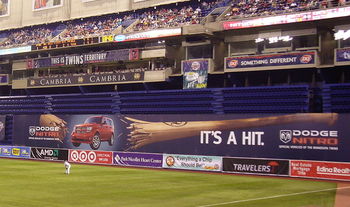
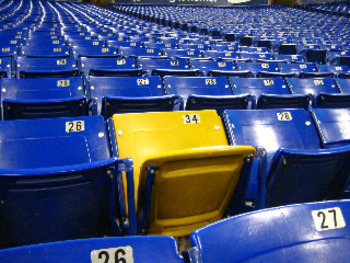
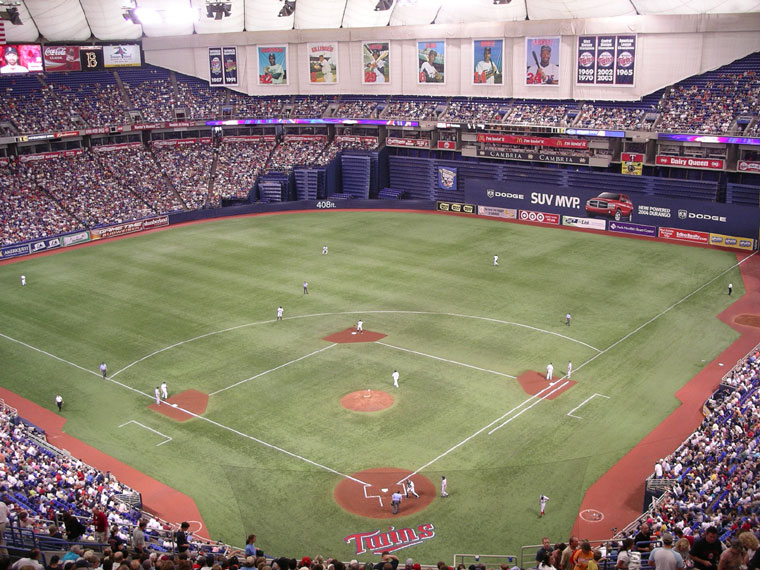
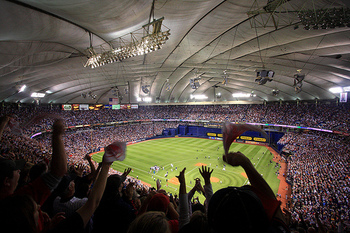
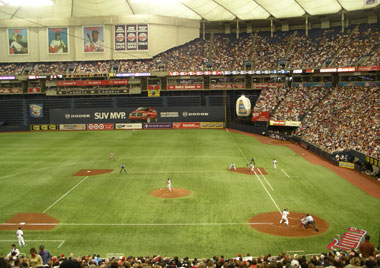
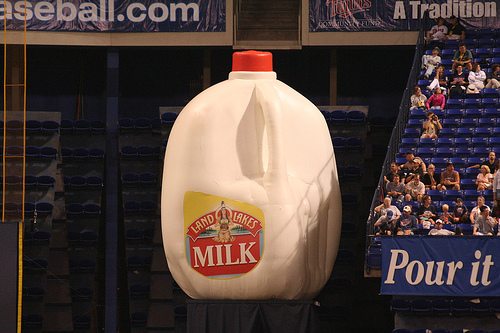
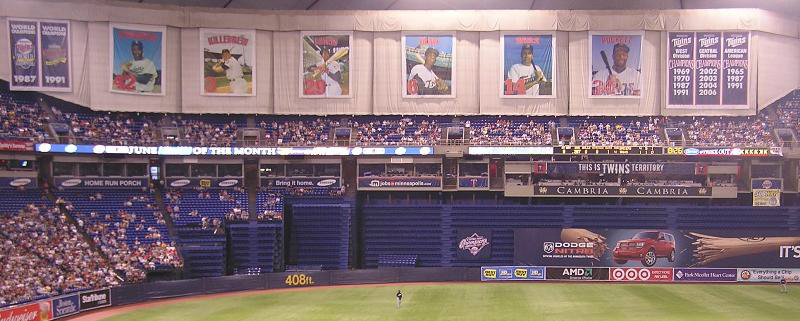
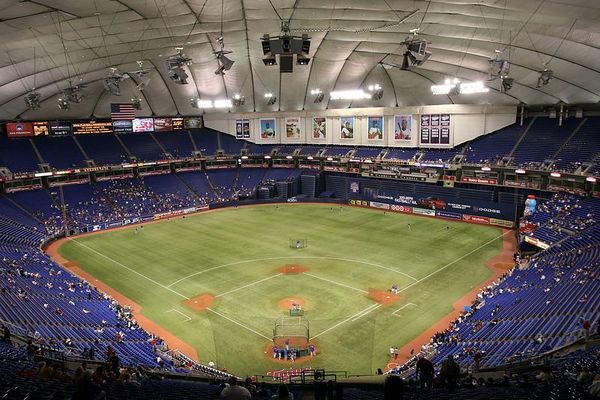
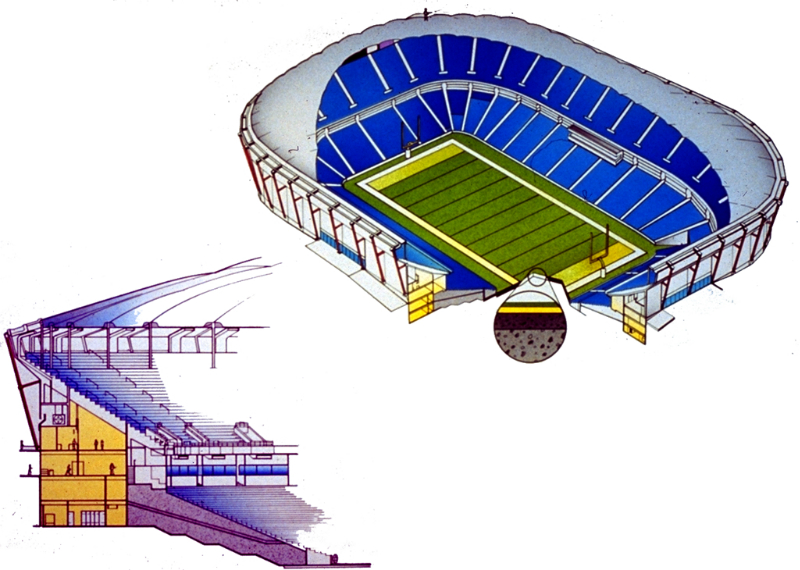
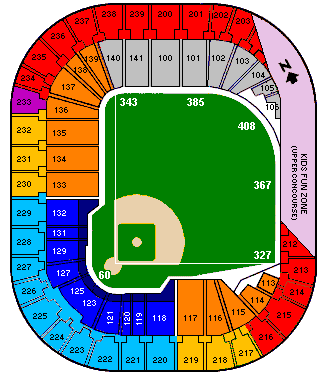
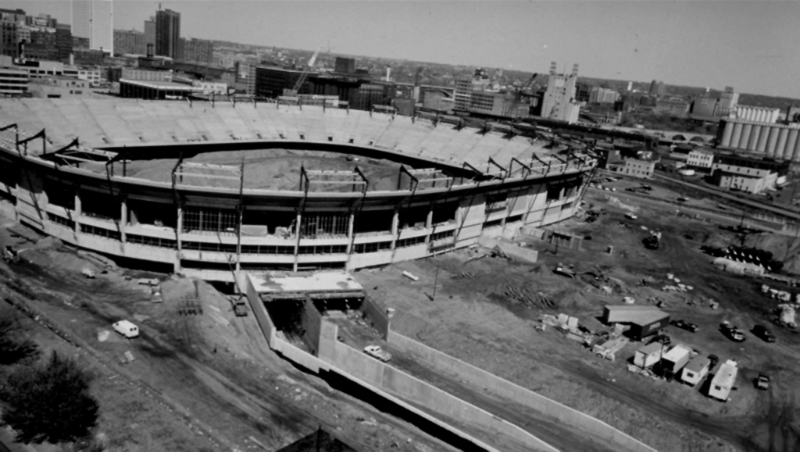
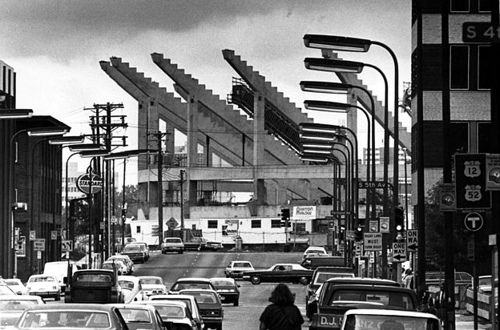
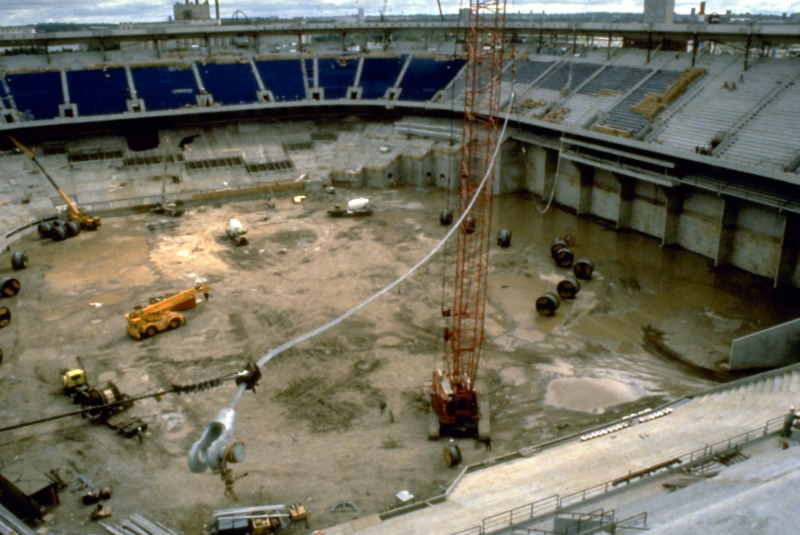
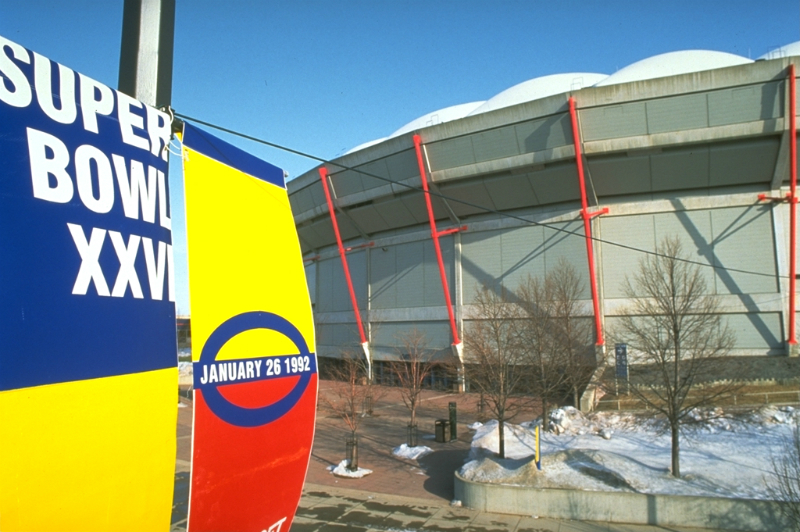
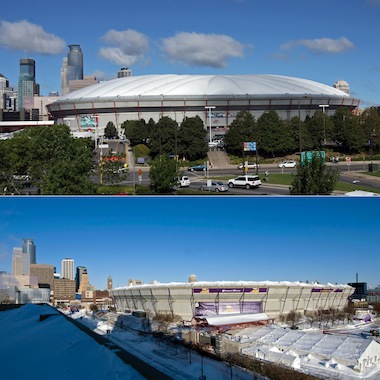
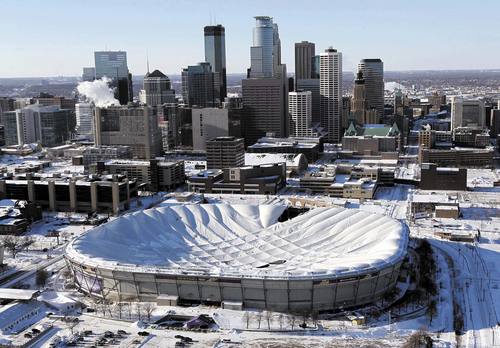
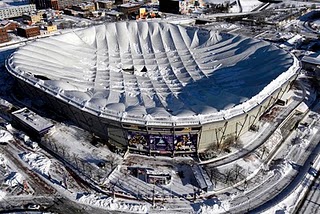



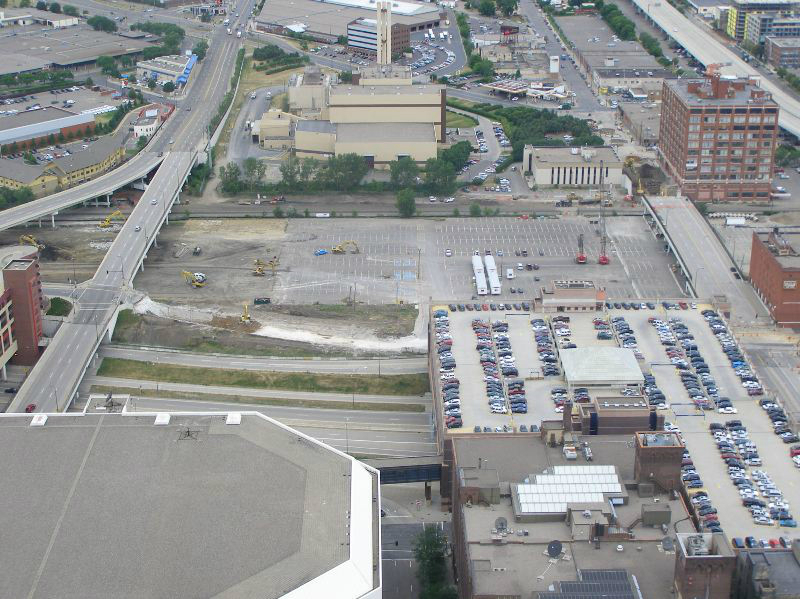
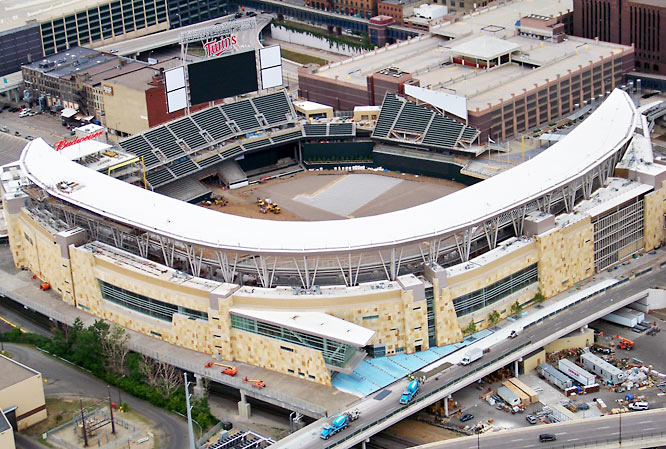
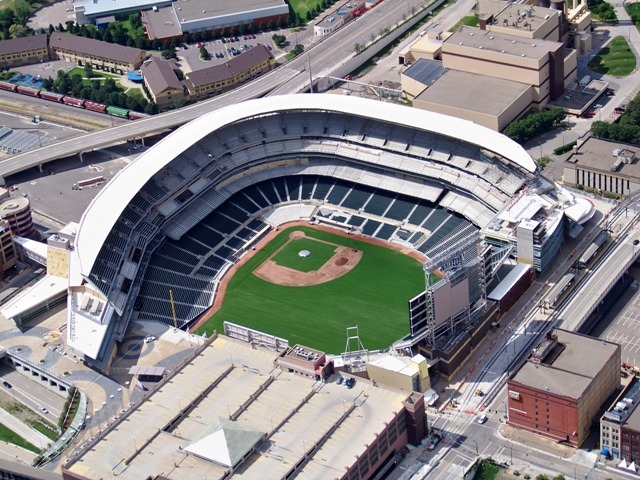
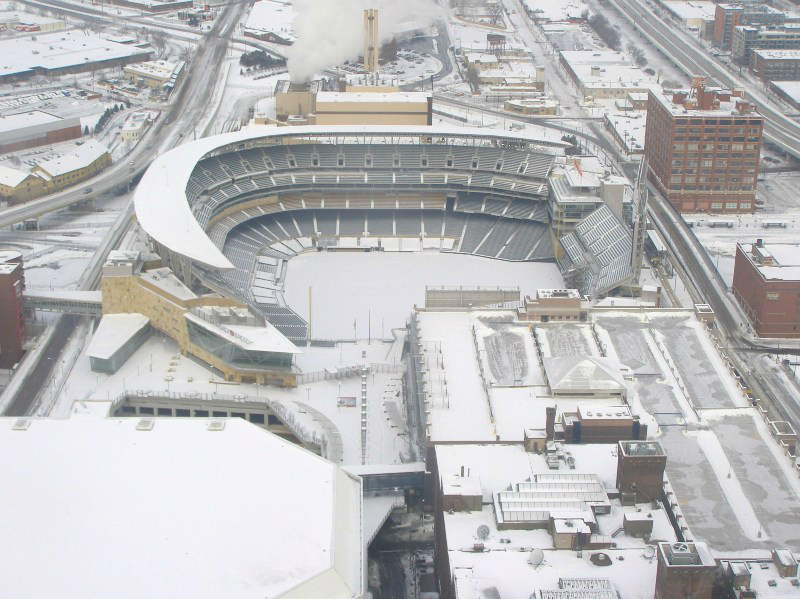
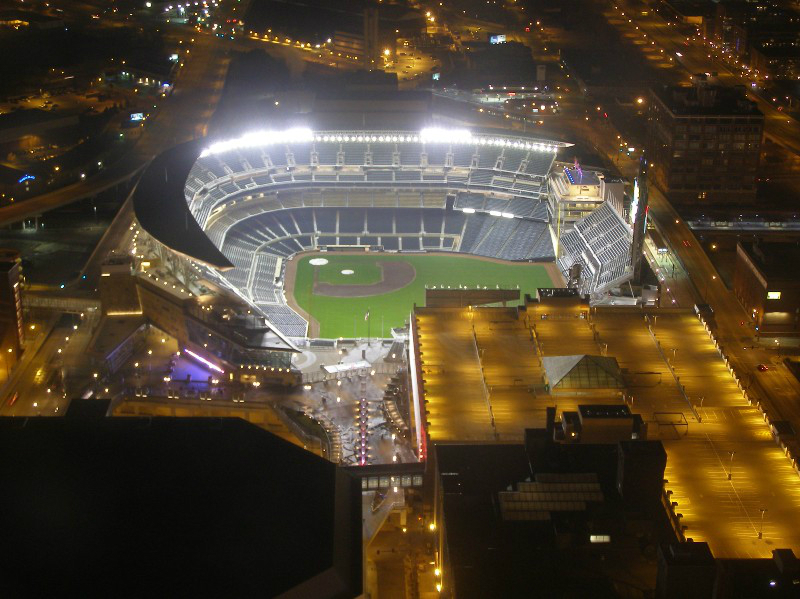
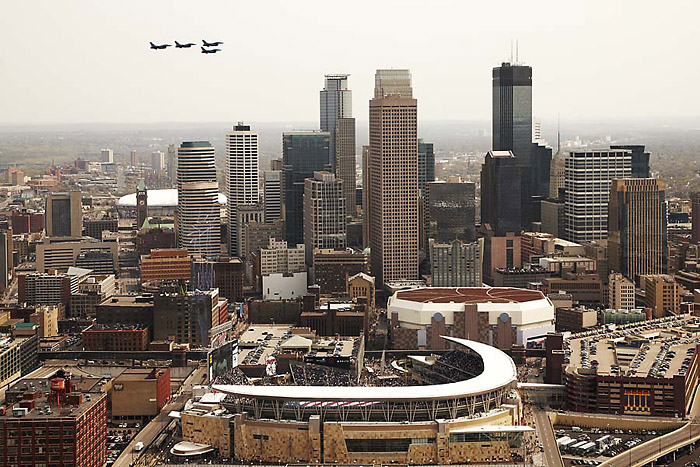
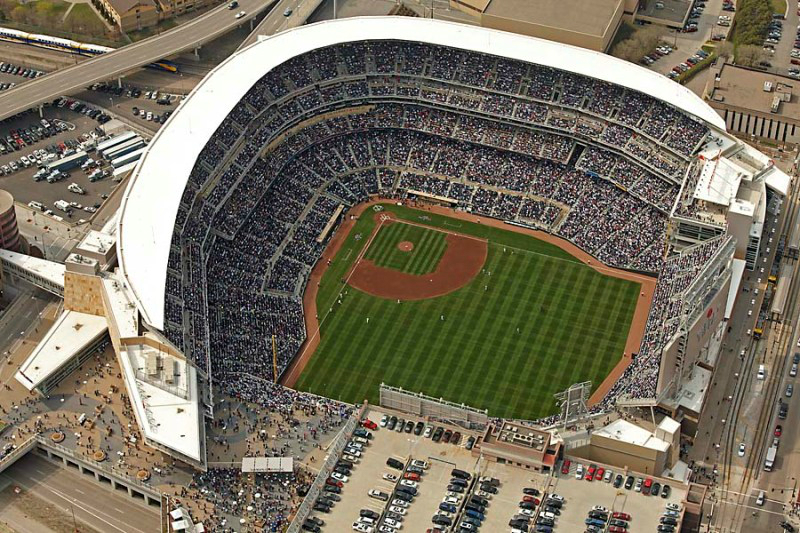
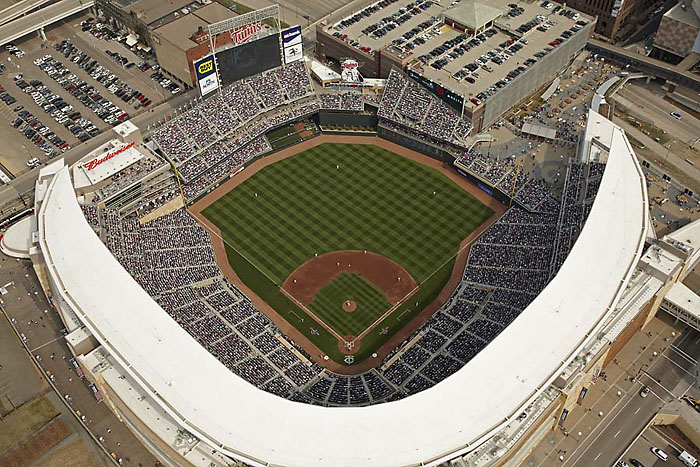
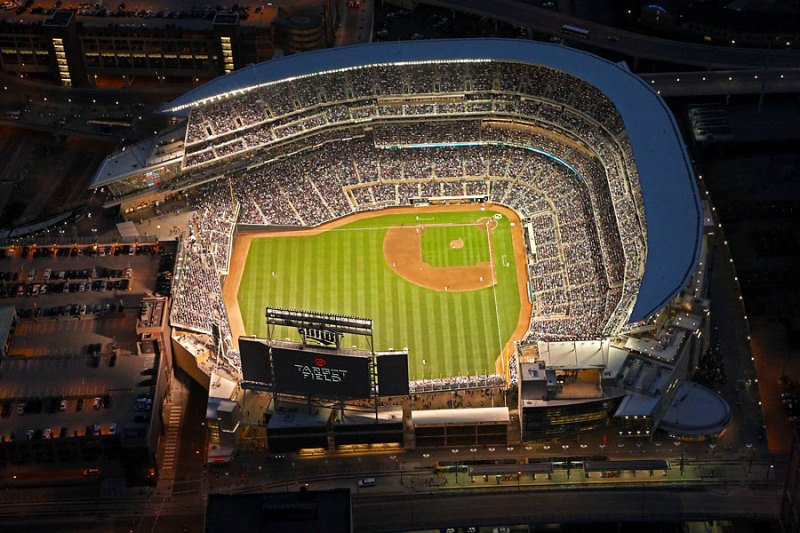
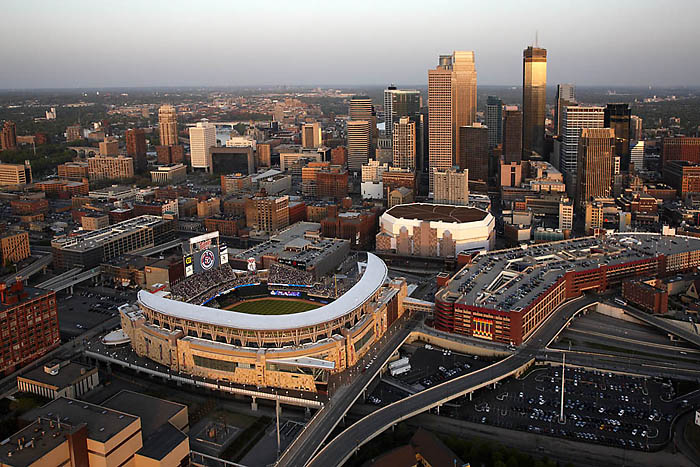
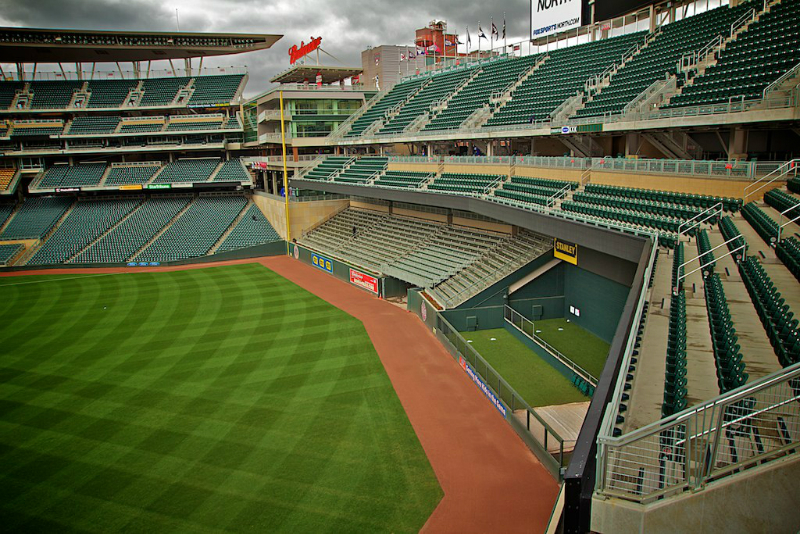
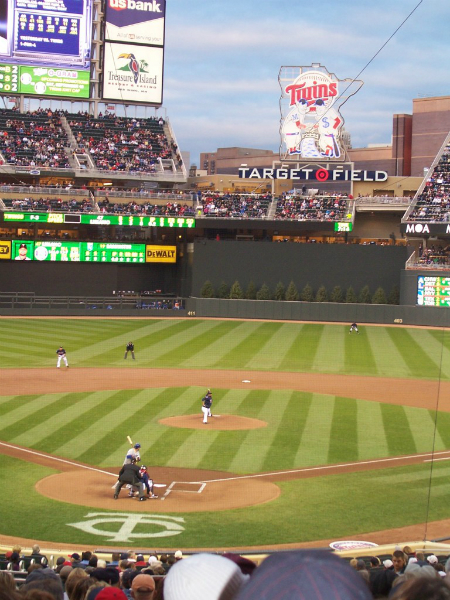
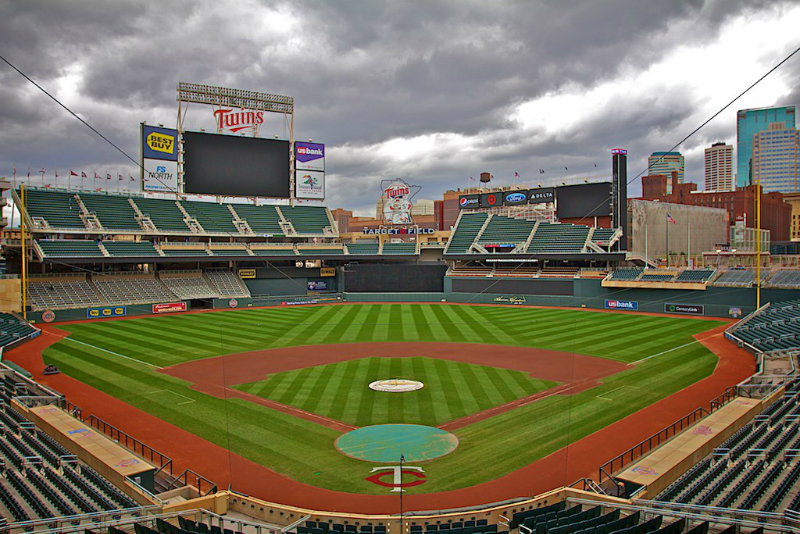
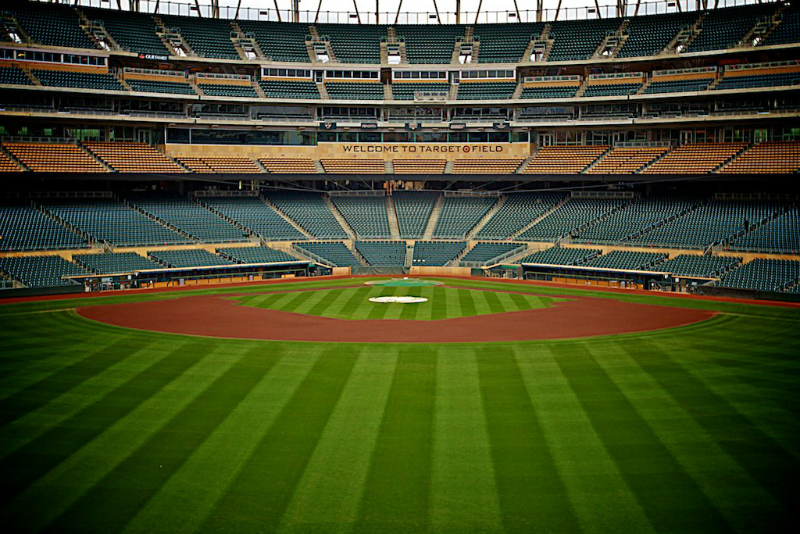
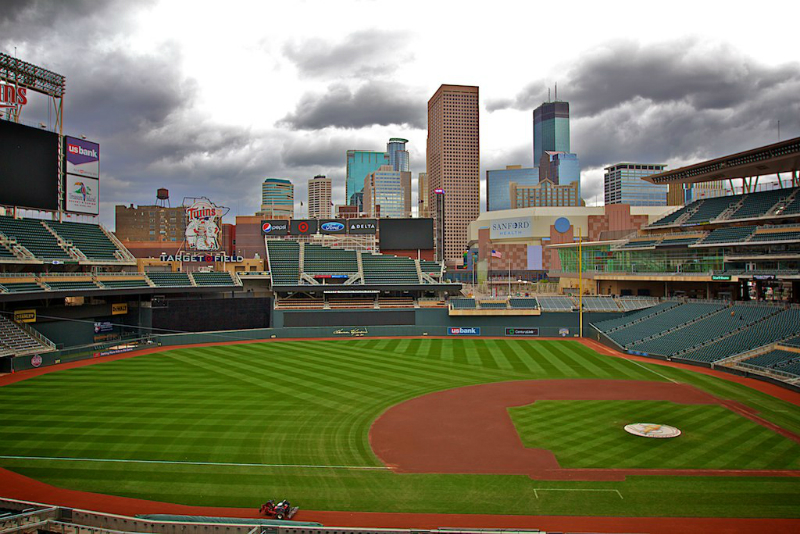
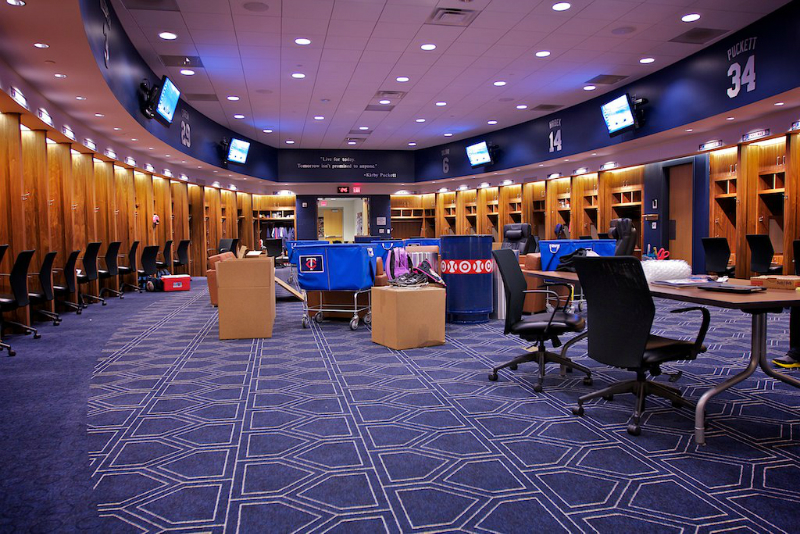
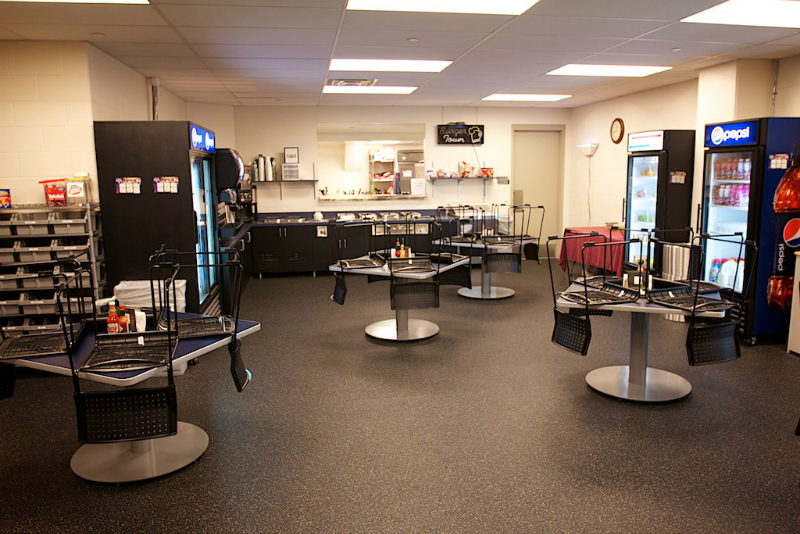
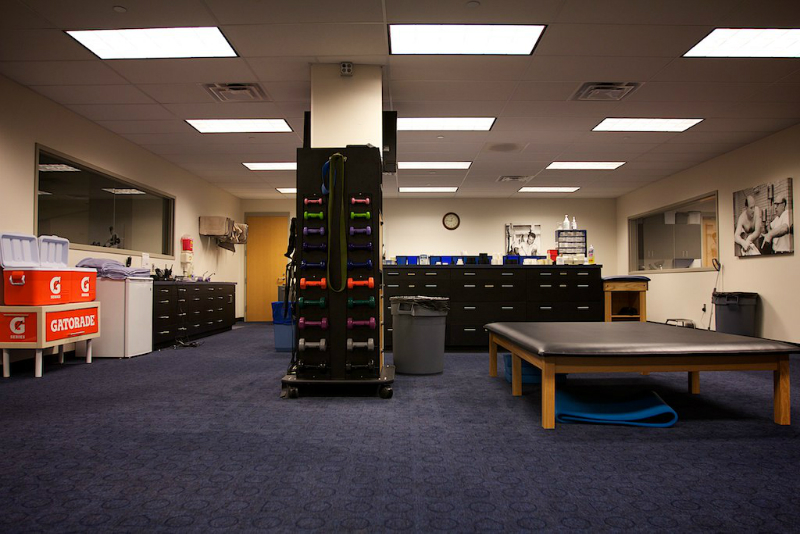
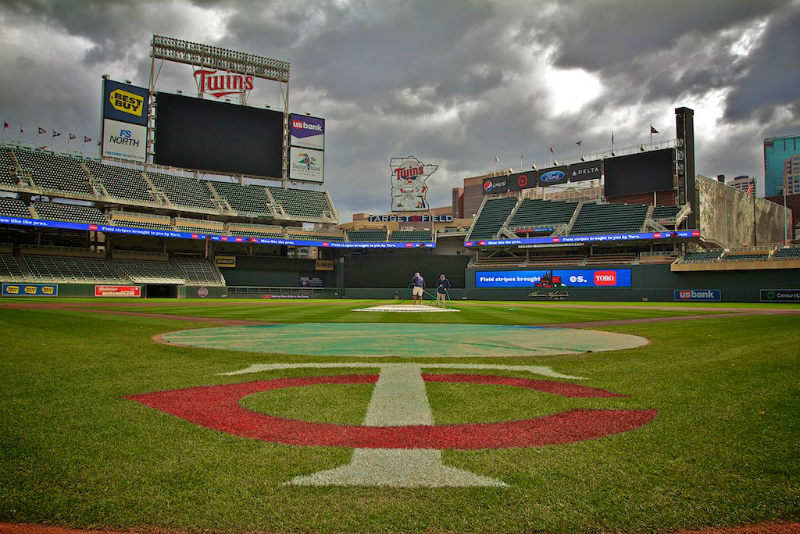

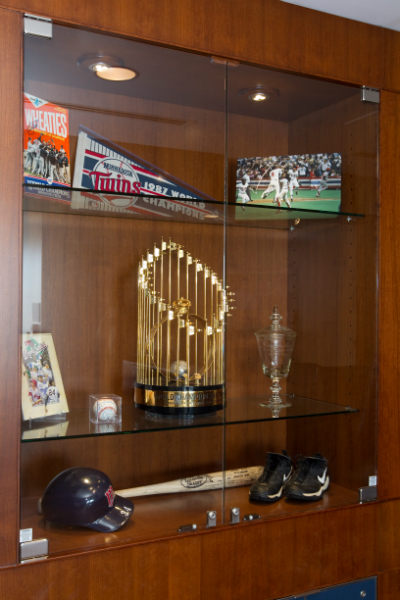
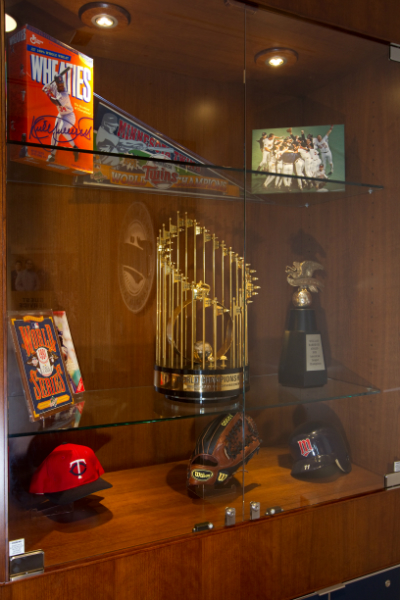
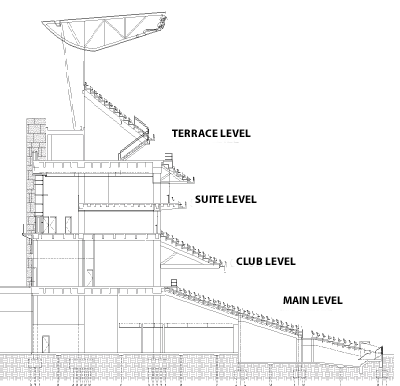
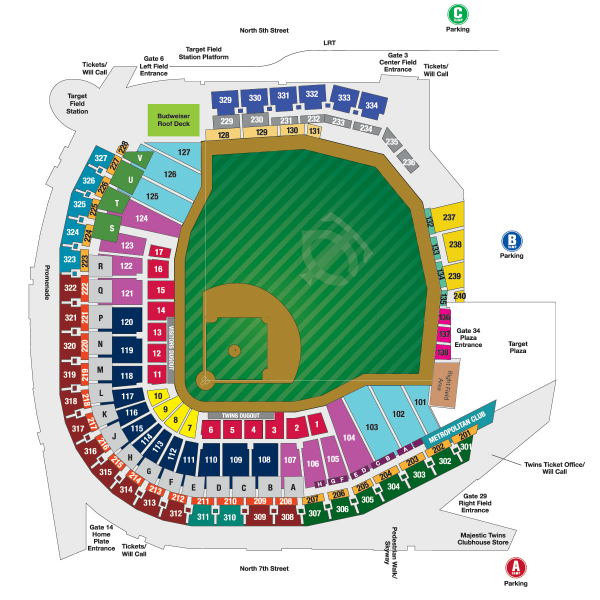
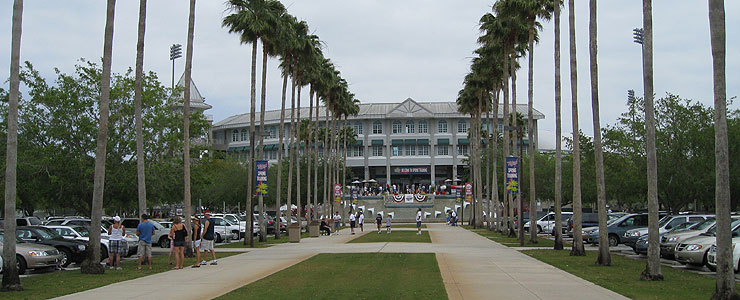
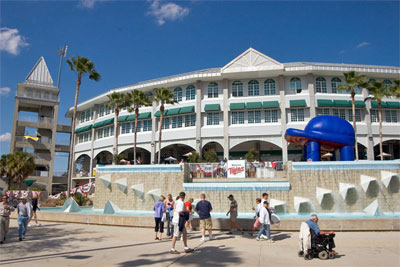
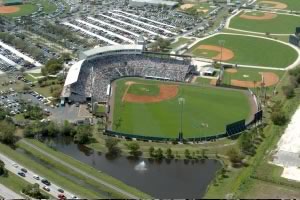
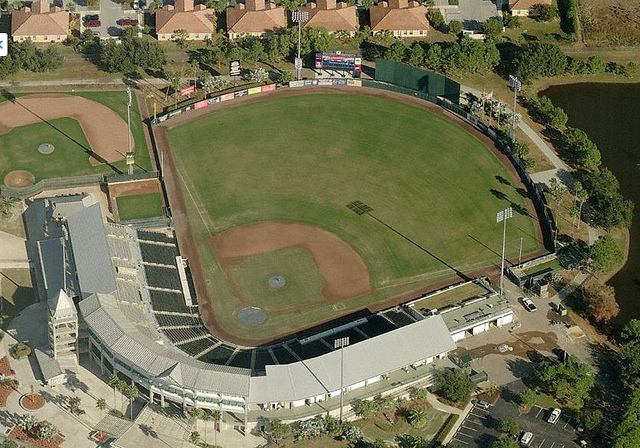
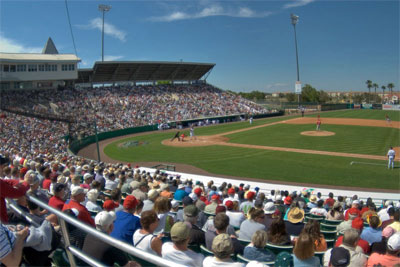
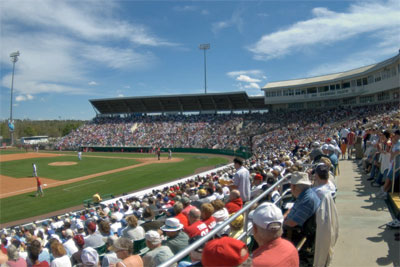

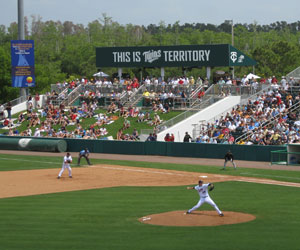
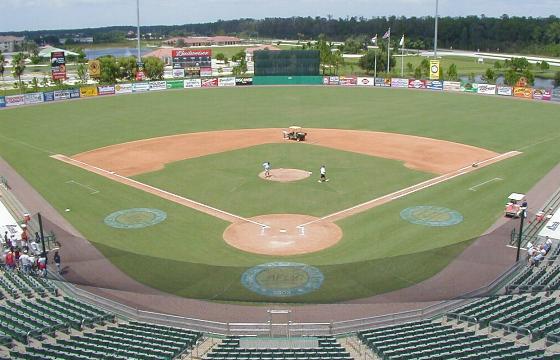

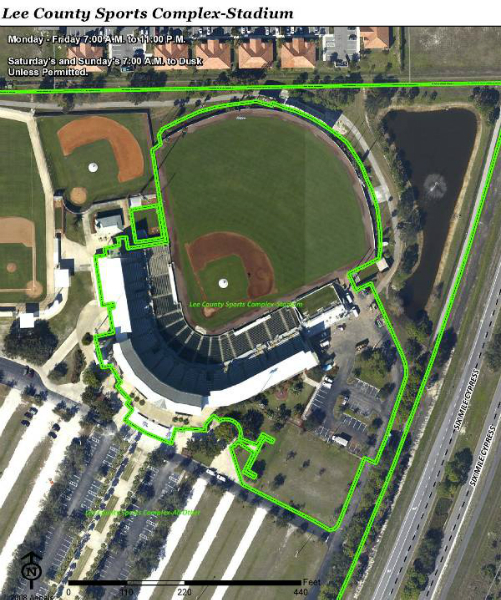
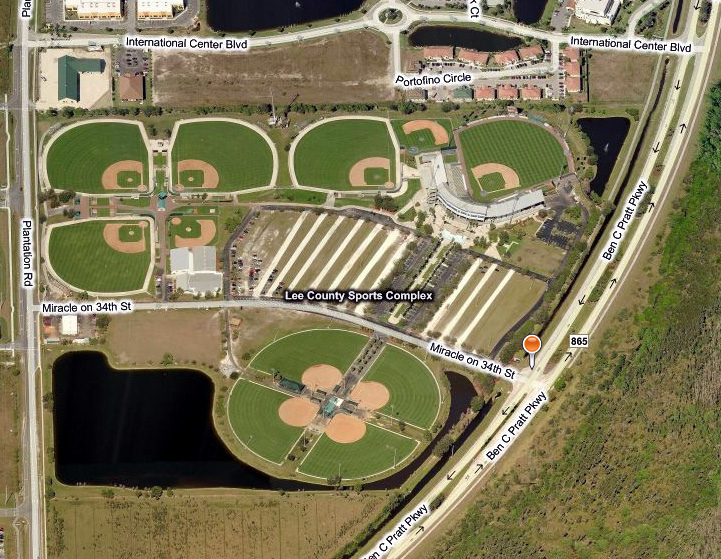
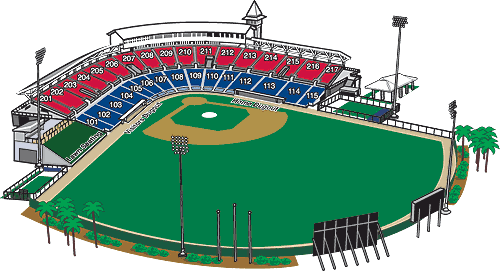
I’m wondering where I could go to get hi res photos of the Dome. I have held onto my tickets to the game scheduled for the day of the collapse (Dec 12, 2010) and I’d like to build a tribute with some photos in a frame.
I’m sure there are some for sale here and there. I think your best bet if you want to purchase some Metrodome hi-res photo’s is to contact the Minnesota Twins.
I have a piece of carpet that my parents said was from the Met stadium. They have both passed away so I cannot get further information on its source. I seem to recall one of them saying it was from either the club house or the Locker Room.
The piece I have is square. On one side is the TC logo with bats and balls. On the other side is an old viking logo.
Anyone know where this may have been obtained from?
Todd, I cannot answer your question but I will leave your question out here and maybe someone that reads it will know the answer. Thanks for stopping by the website.
Great Information, fun looking at the old photos of Metropolitan Stadium. Great ballpark. I have been looking for a site where there is a layout of the Mall of America over the stadium, showing where everything was compared to now. Is there a anything like that? I appreciate the help.